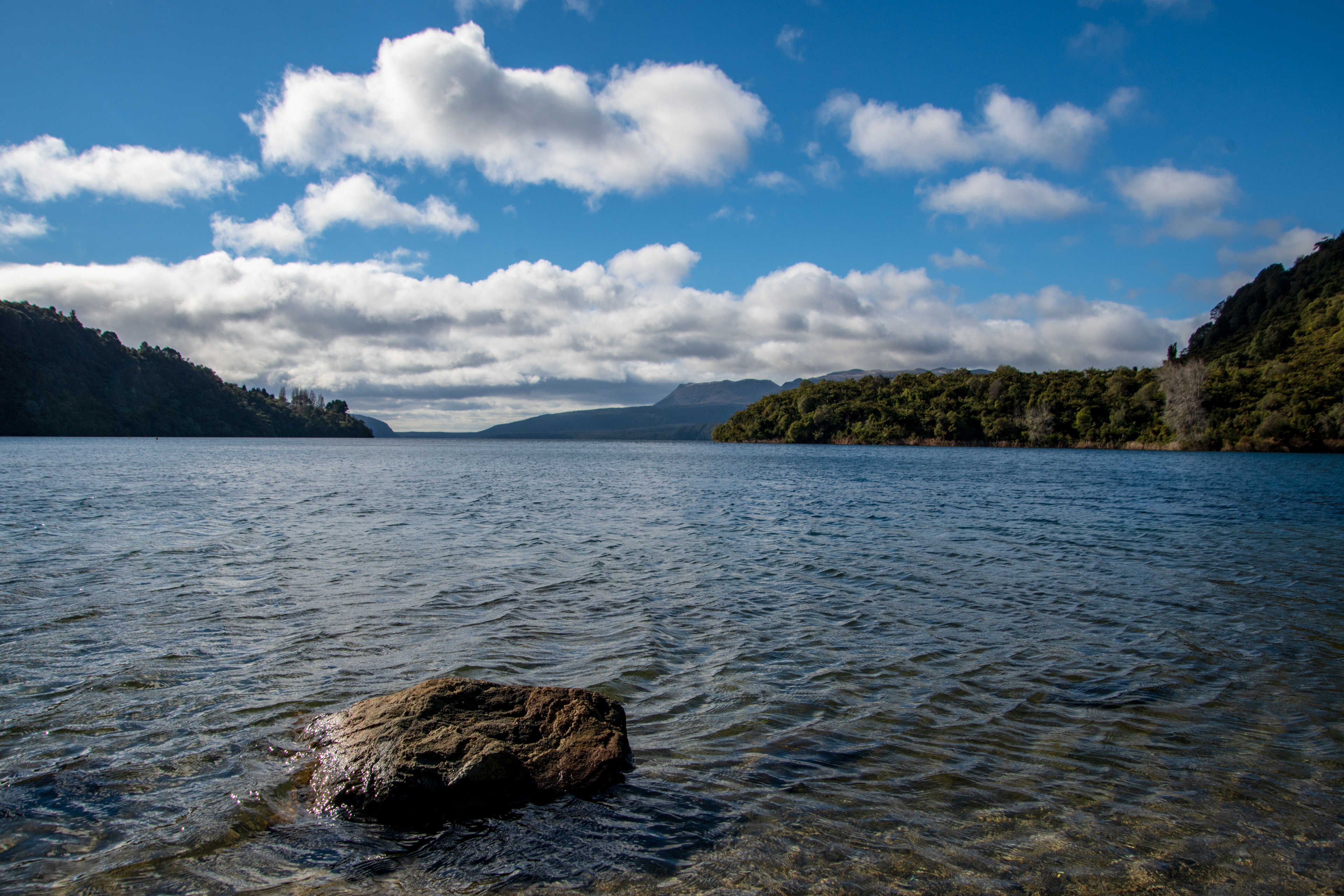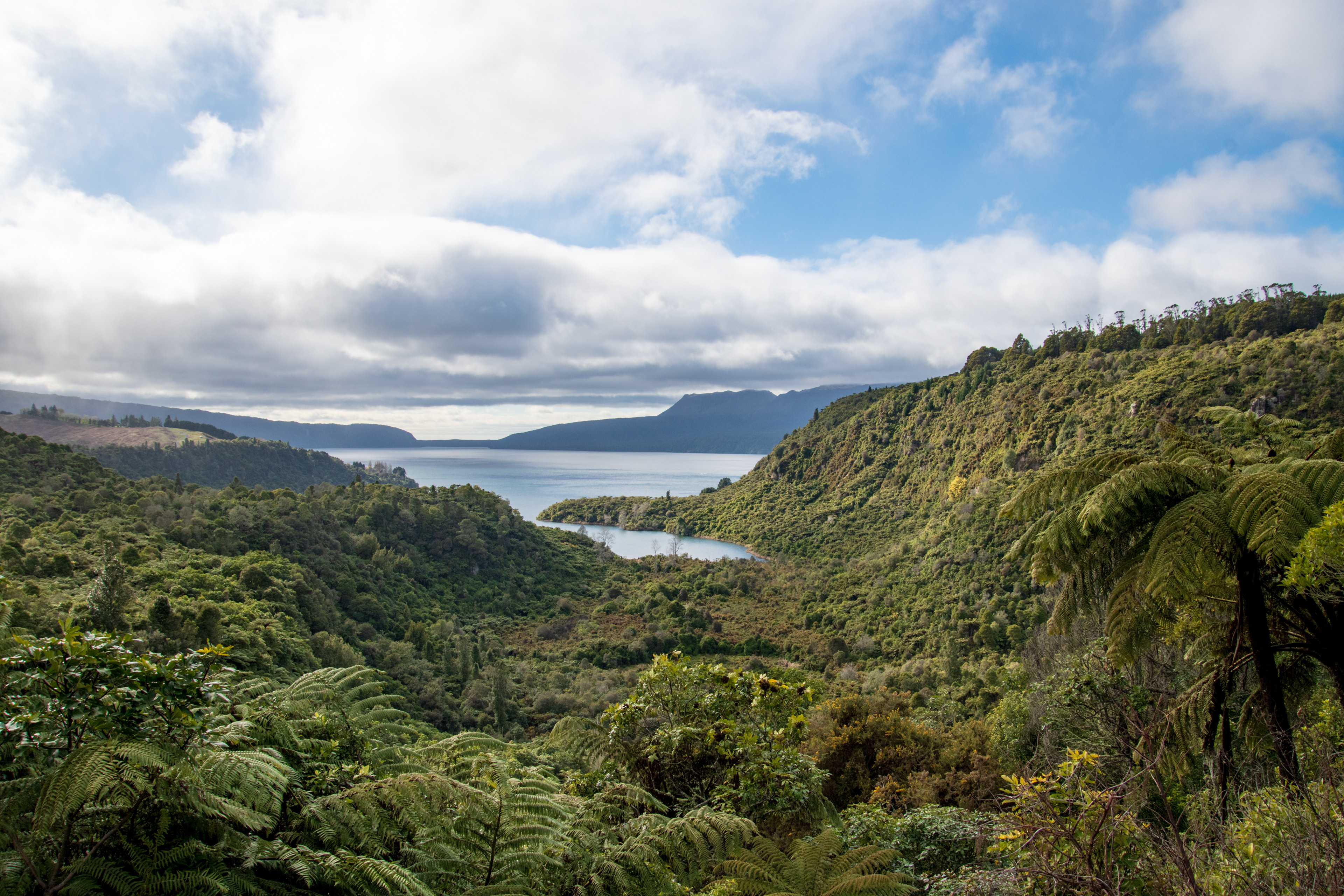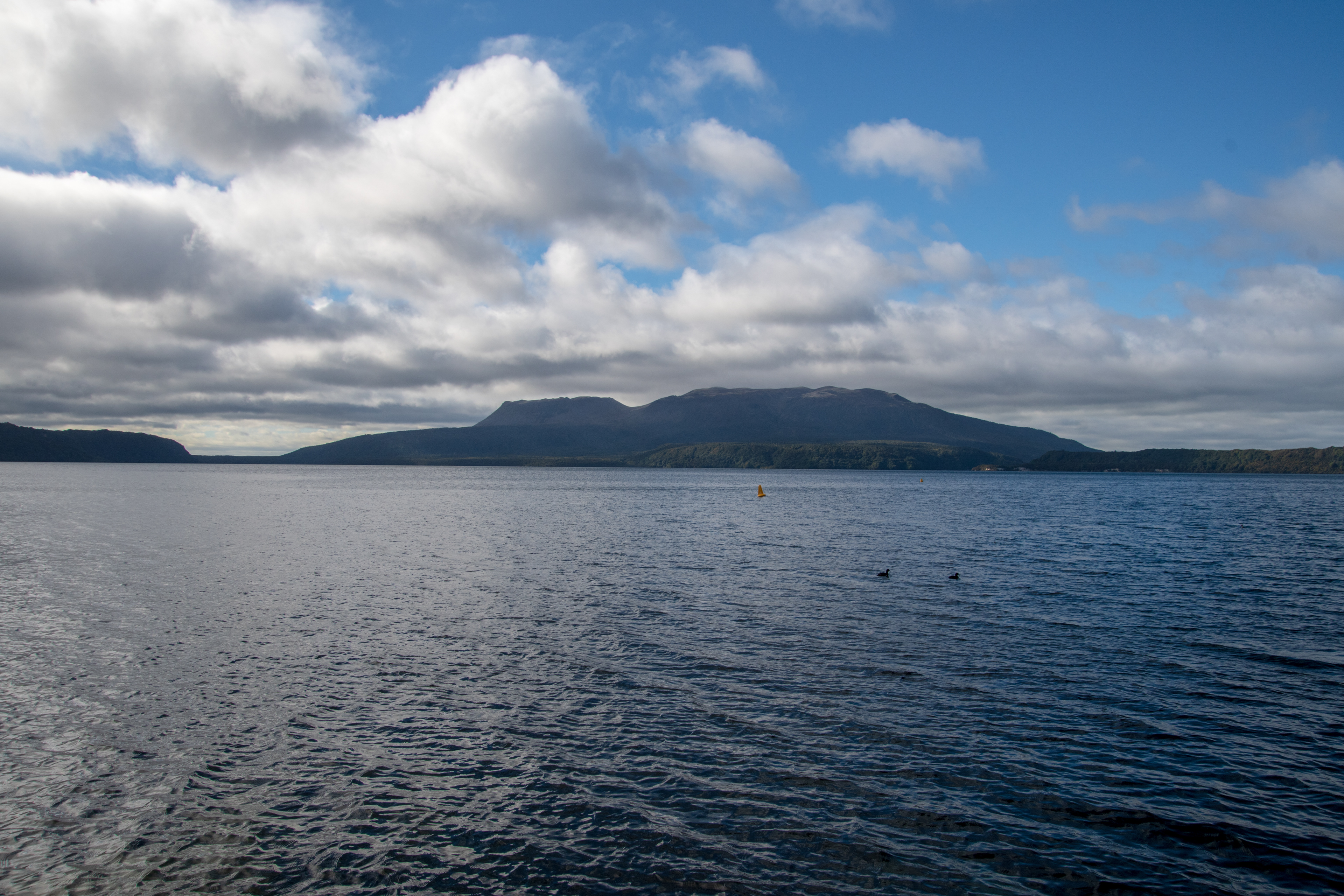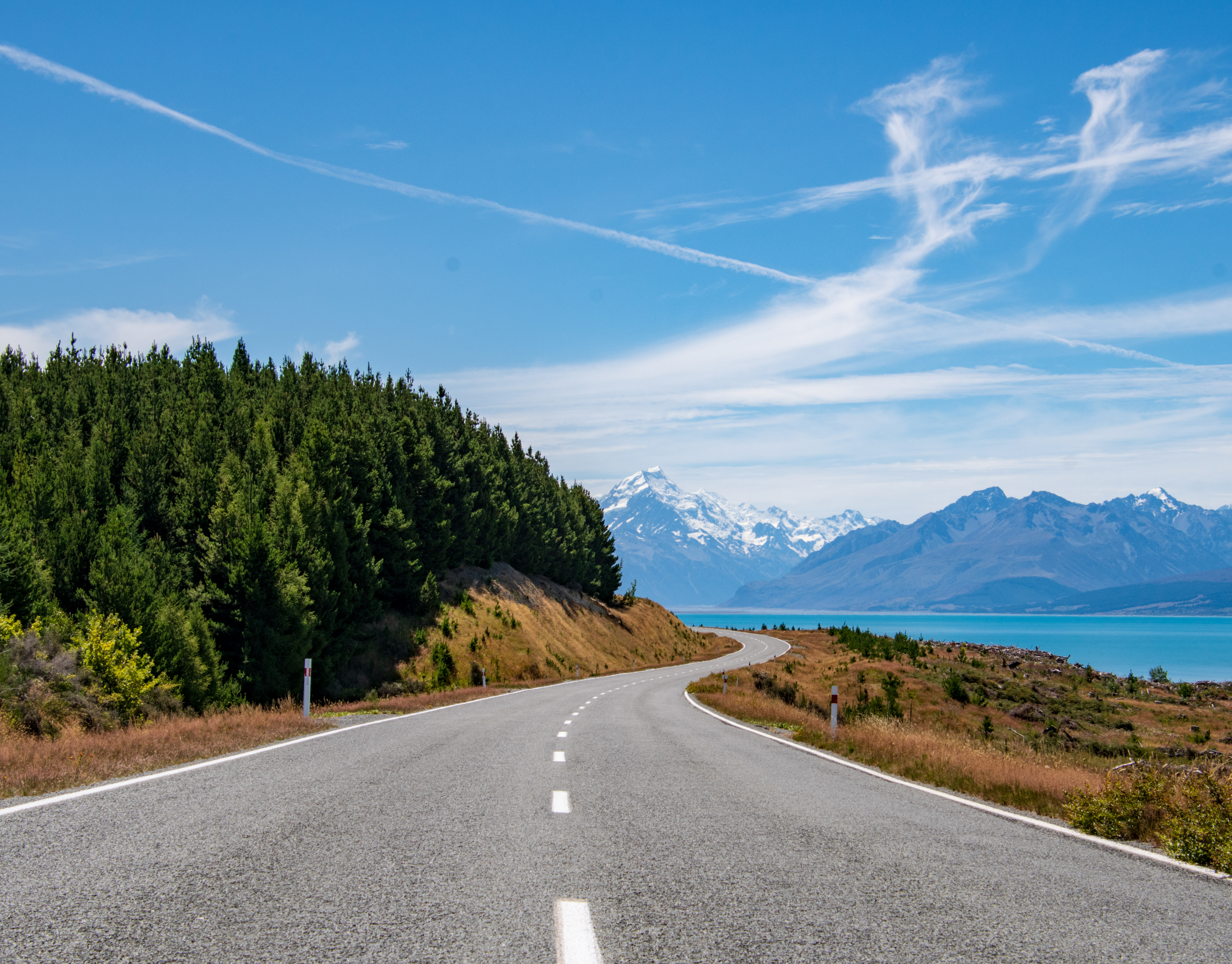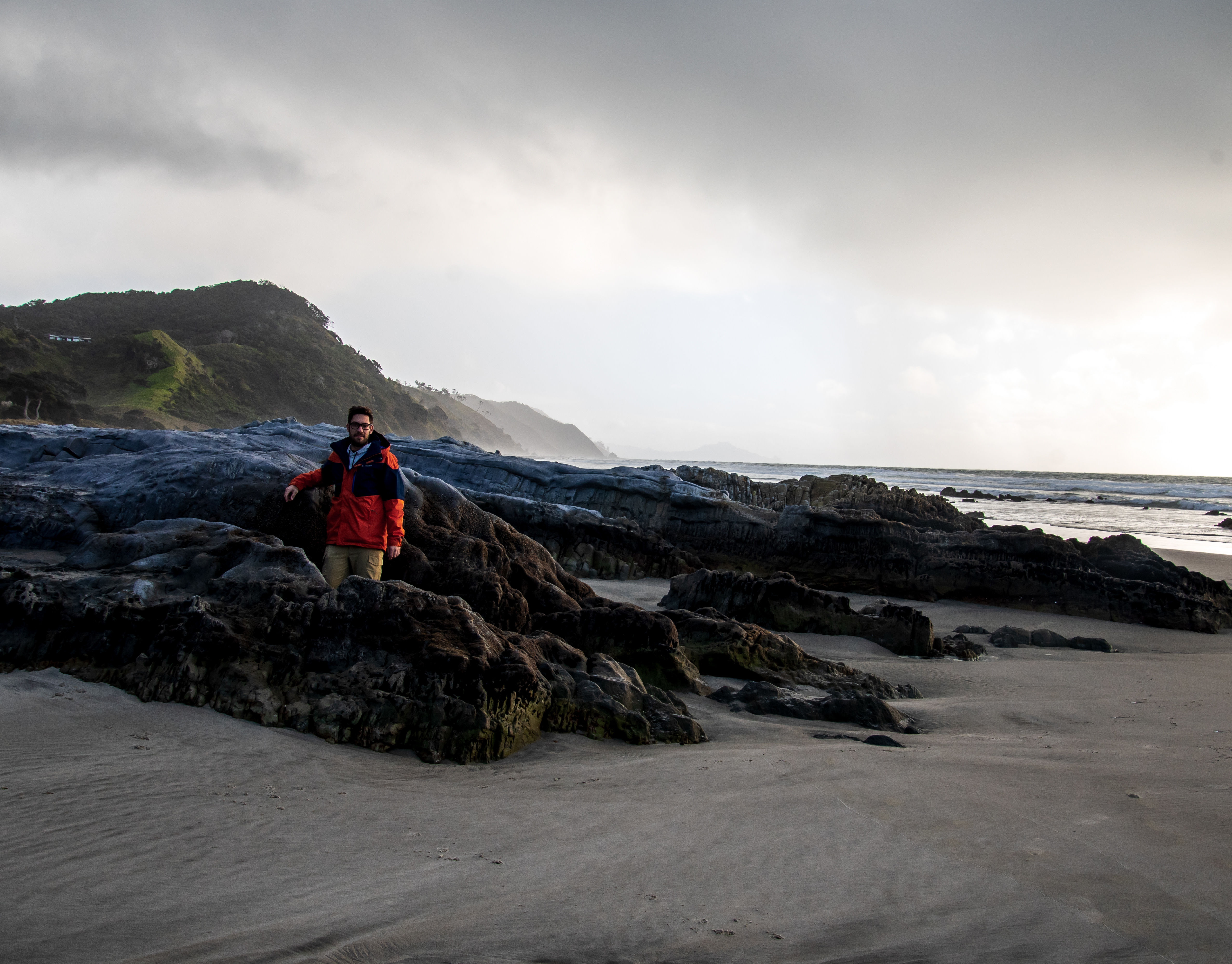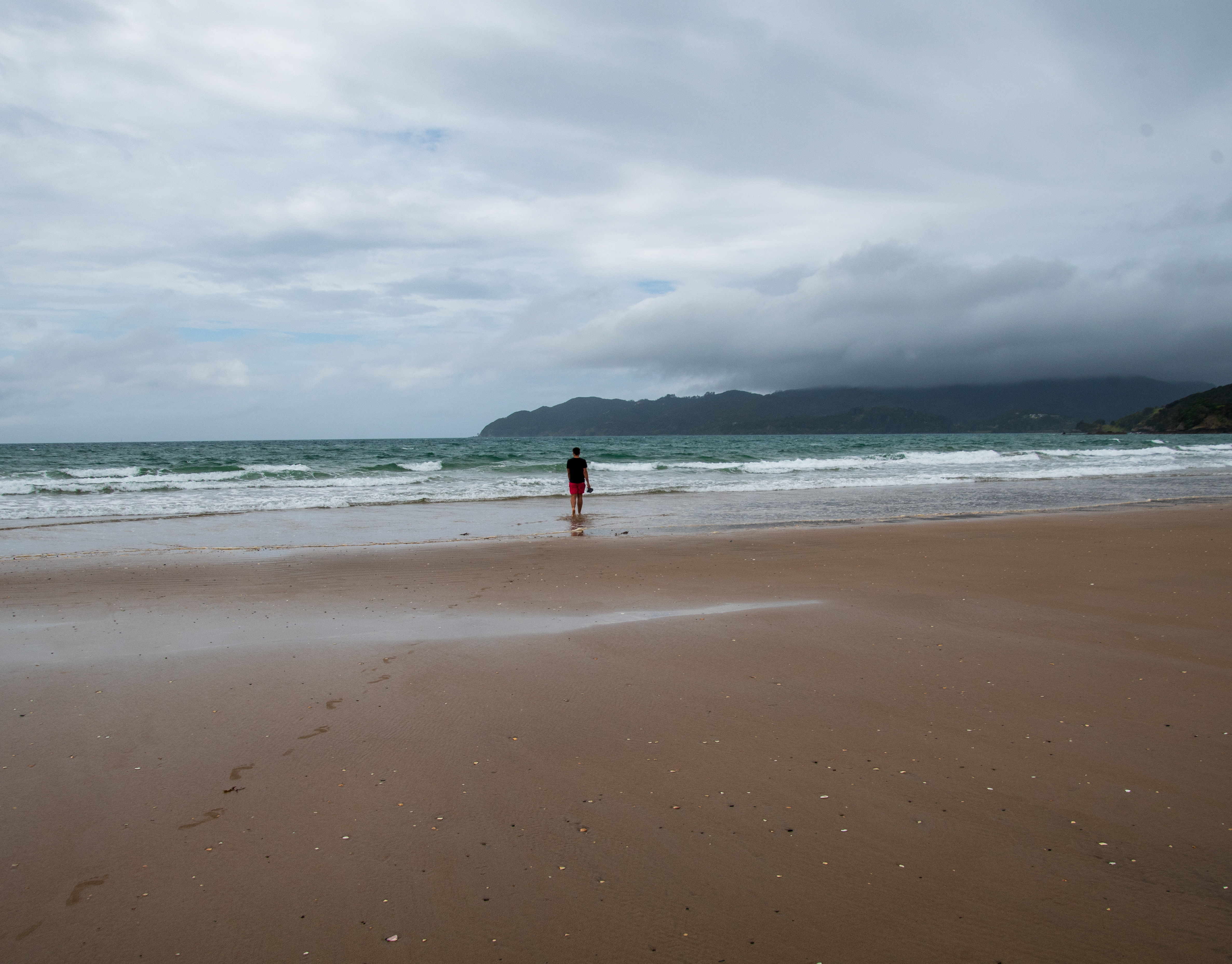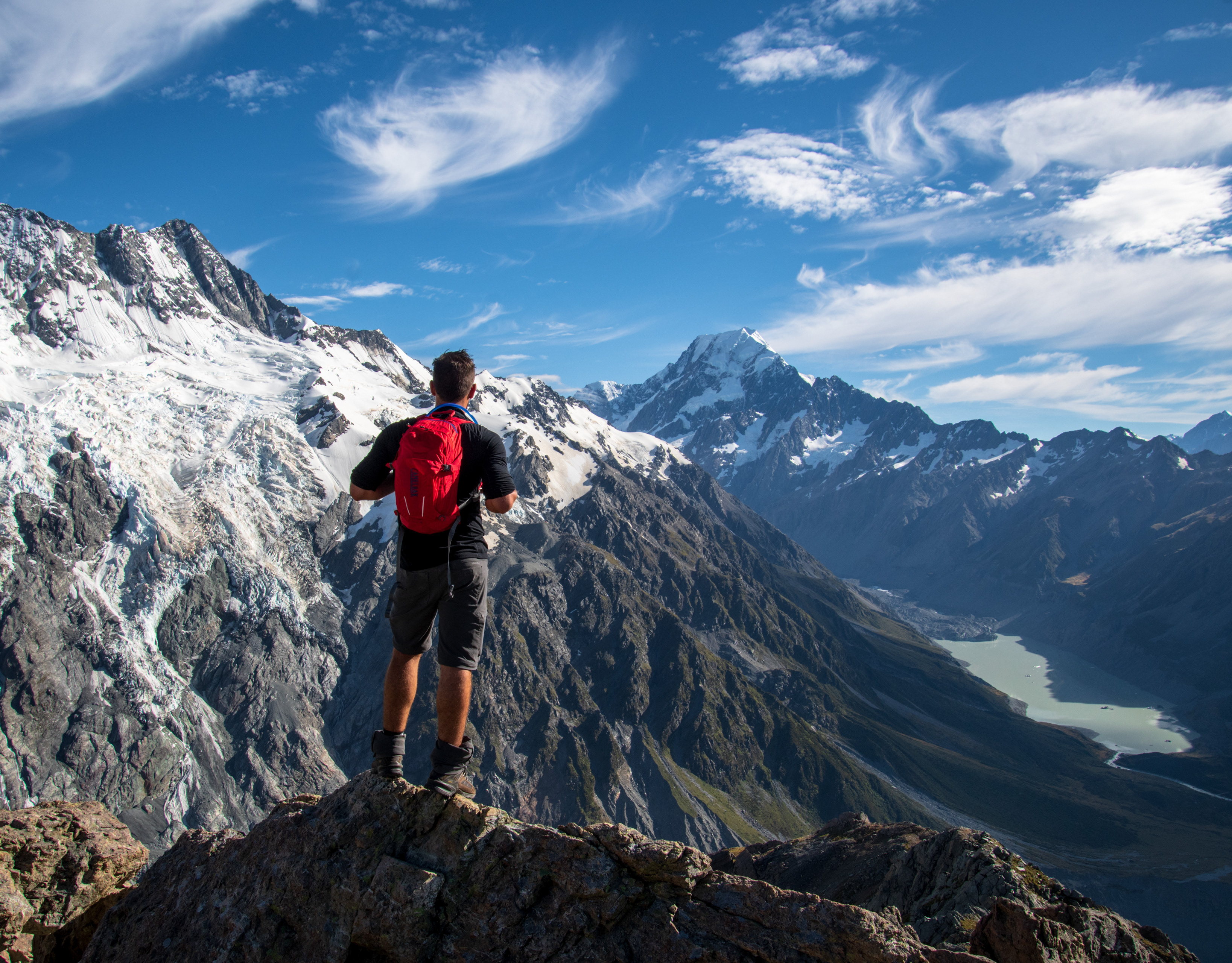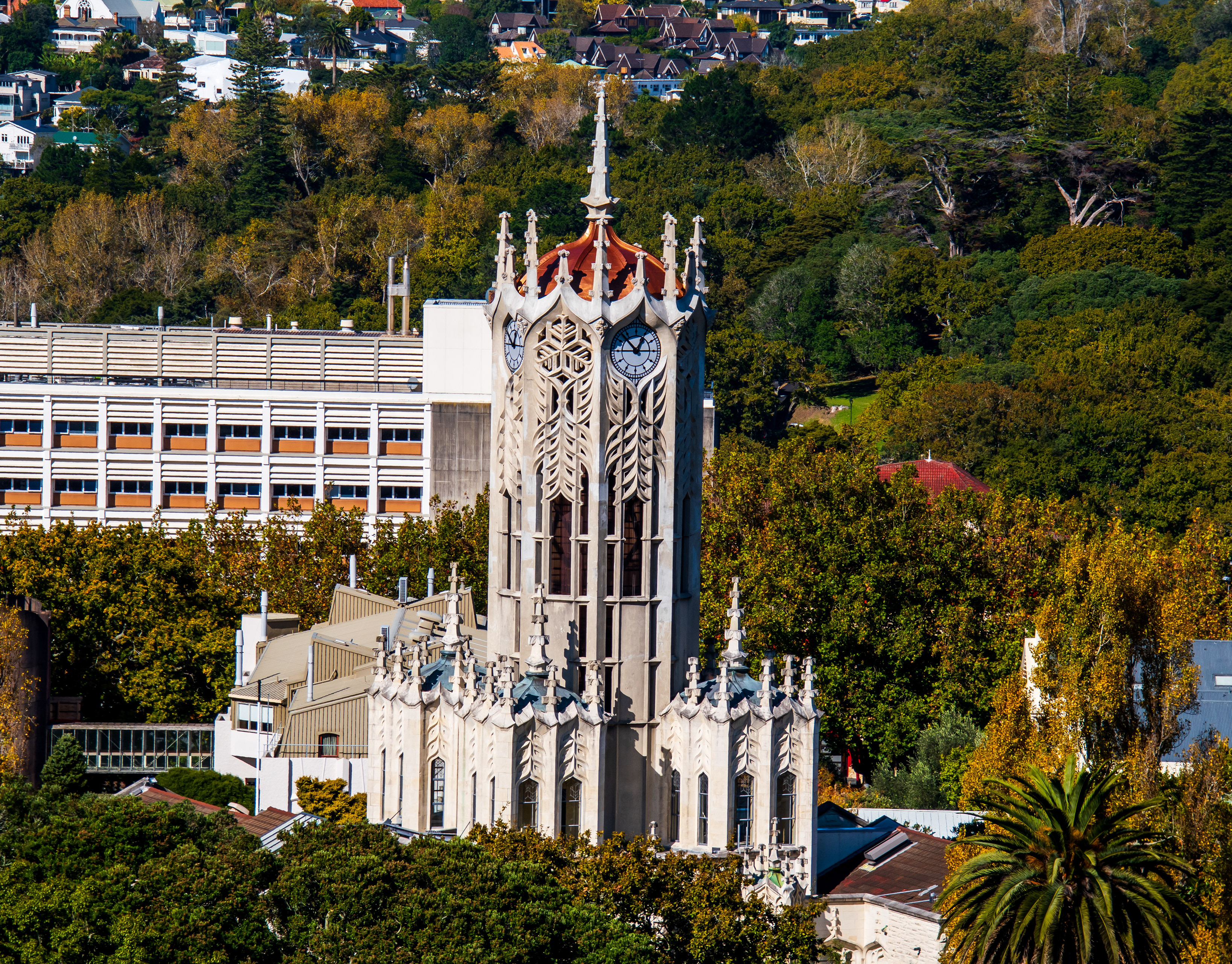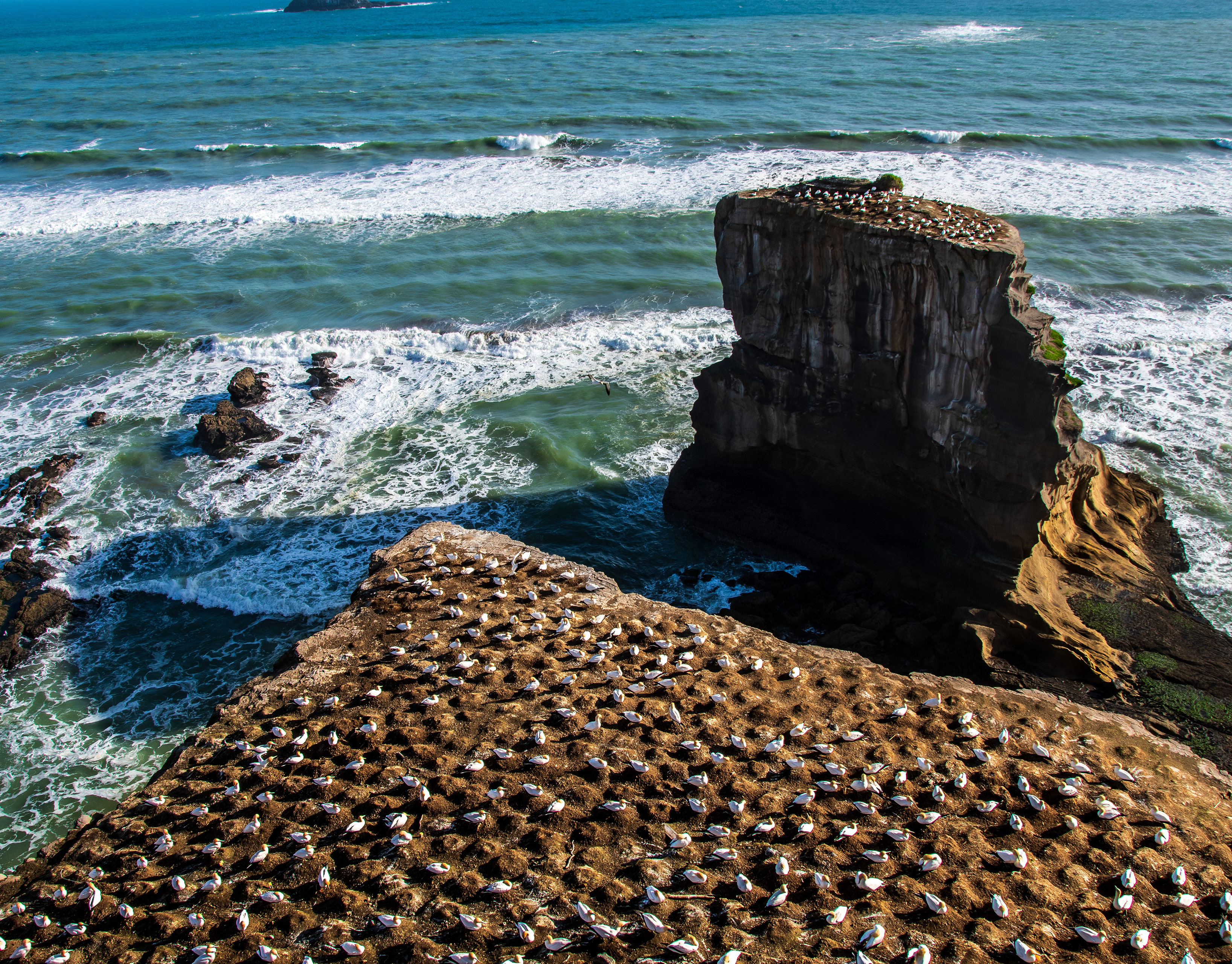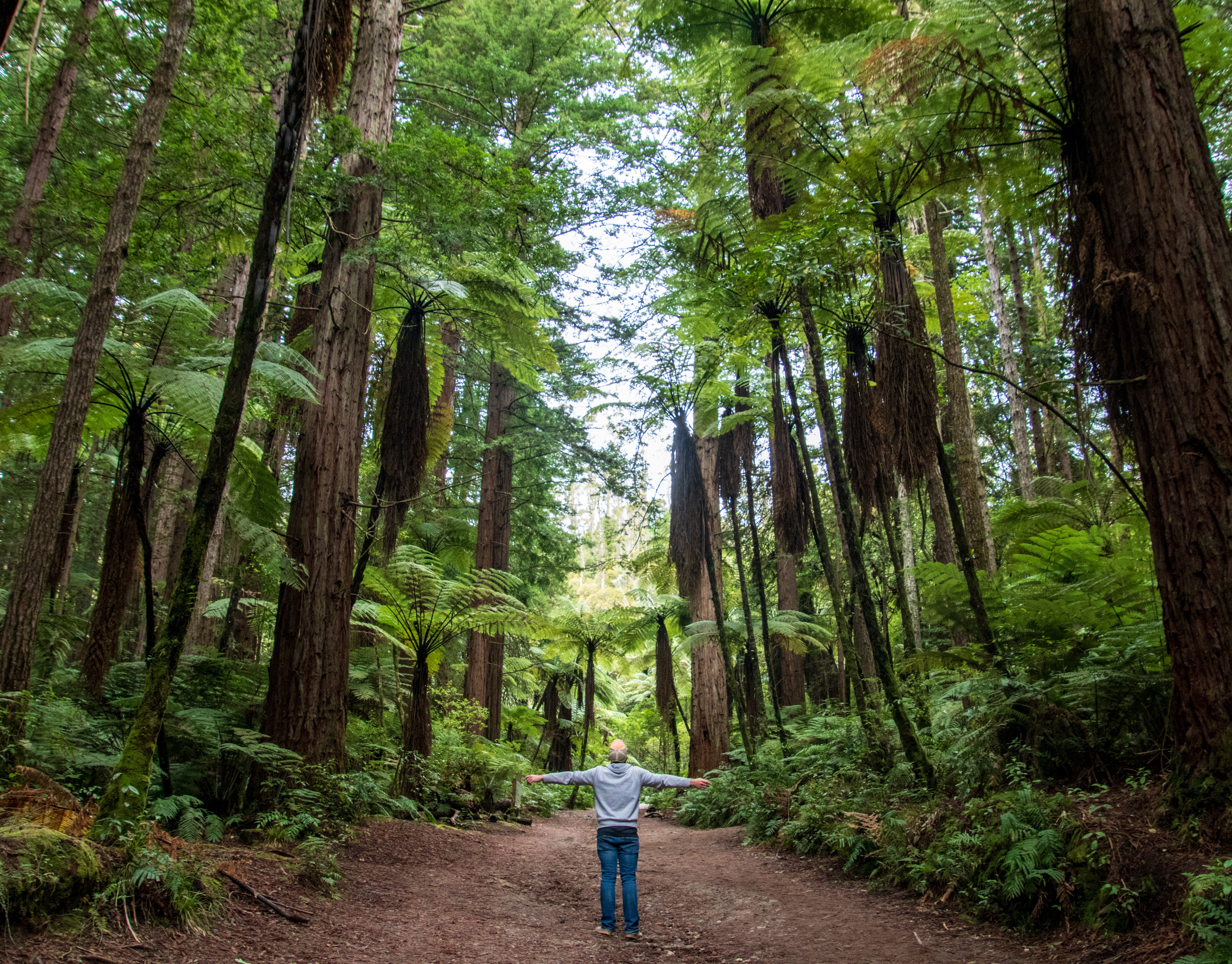Wai-O-Tapu, Geothermal Park
Named as "One of the 20 Most Surreal Places in the World" Thousands of years in the making, visitors can choose one or all of three walks which take between 30 and 75 minutes. Unique features include the world famous Champagne Pool naturally coloured springs, bubbling mud, steaming ground, expansive vistas, huge volcanic craters and sinter terrace formations. The natural bush setting adds another dimension to the experience as does the Lady Knox Geyser which erupts daily at 10.15 am to heights of up to 20 meters.



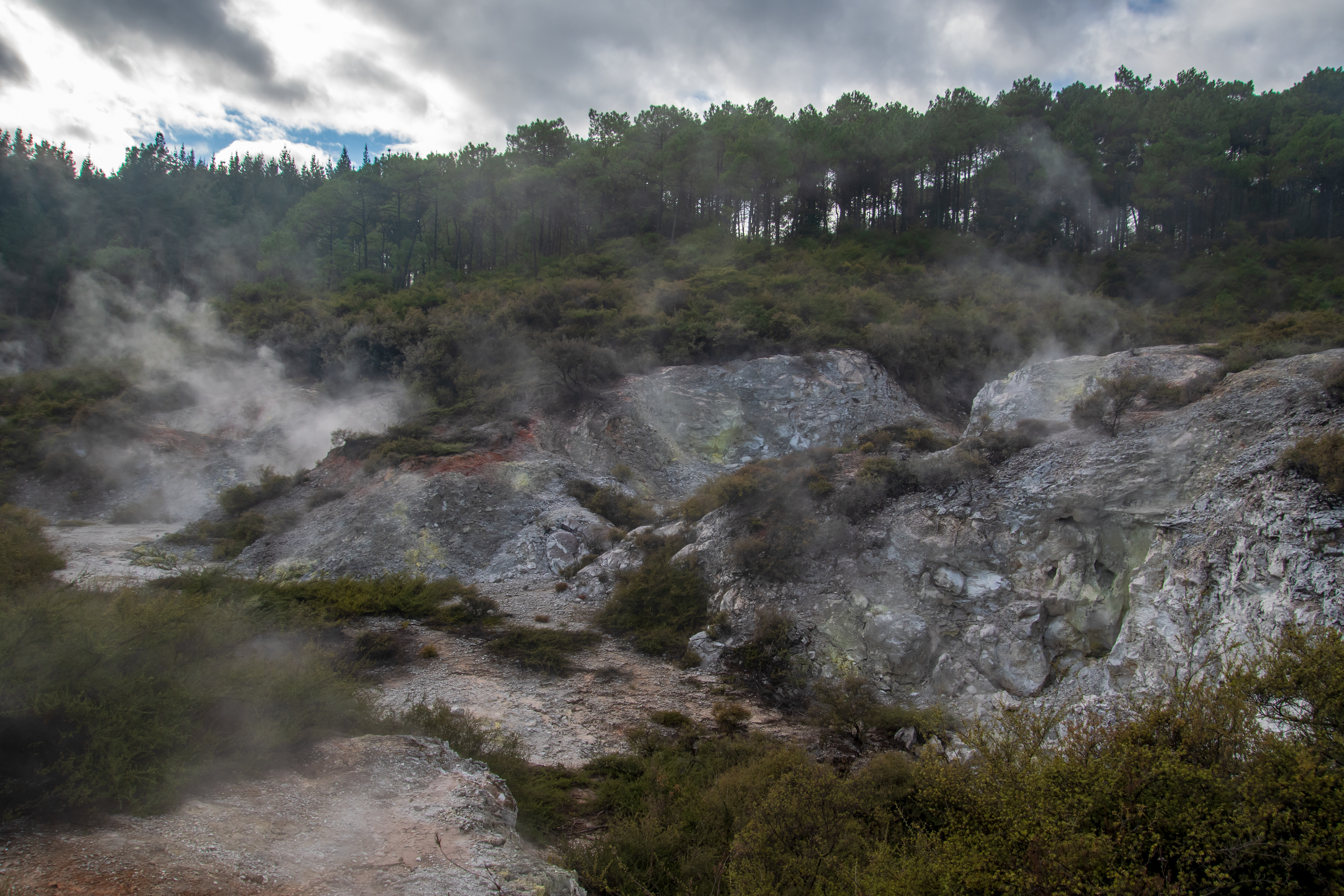
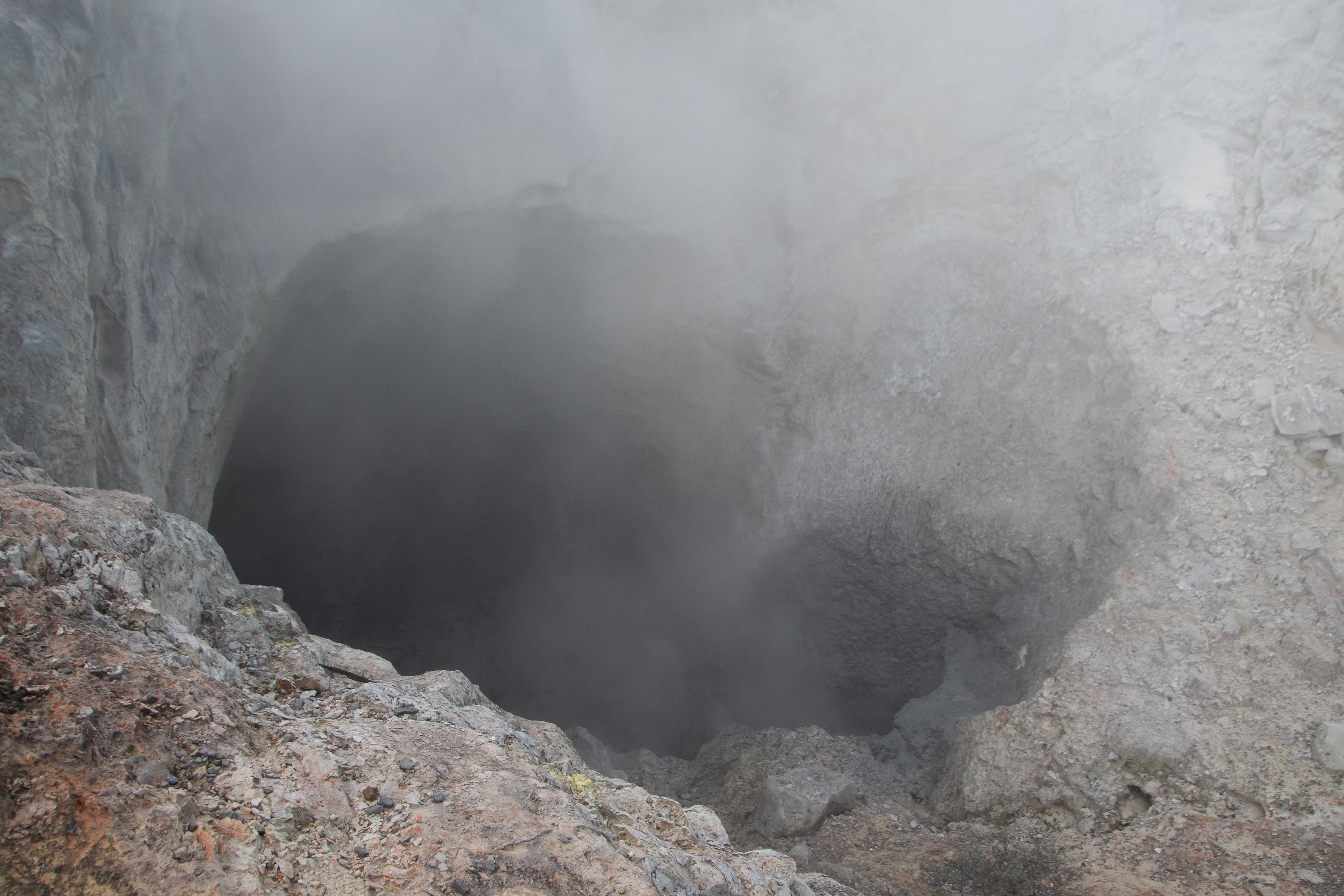

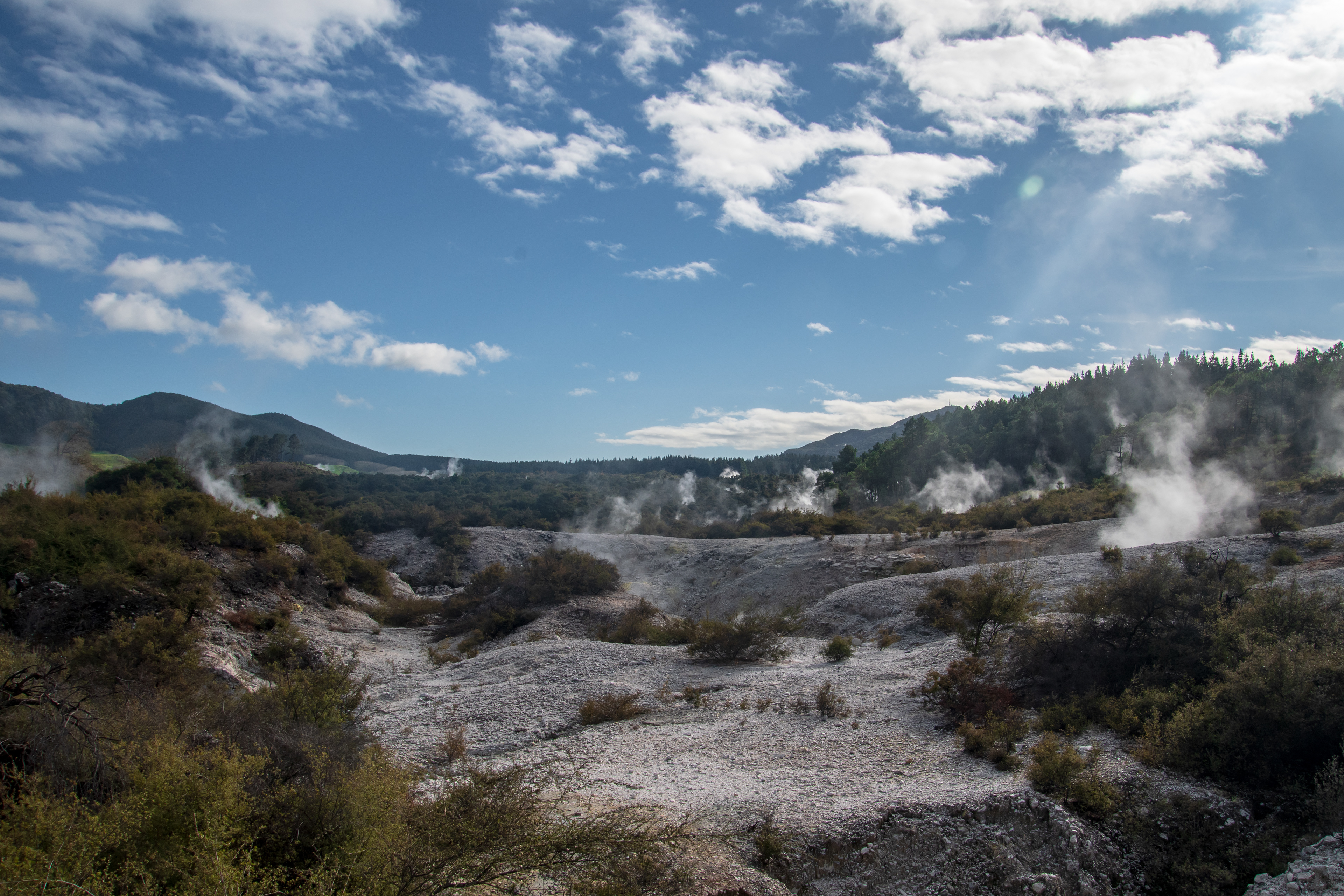
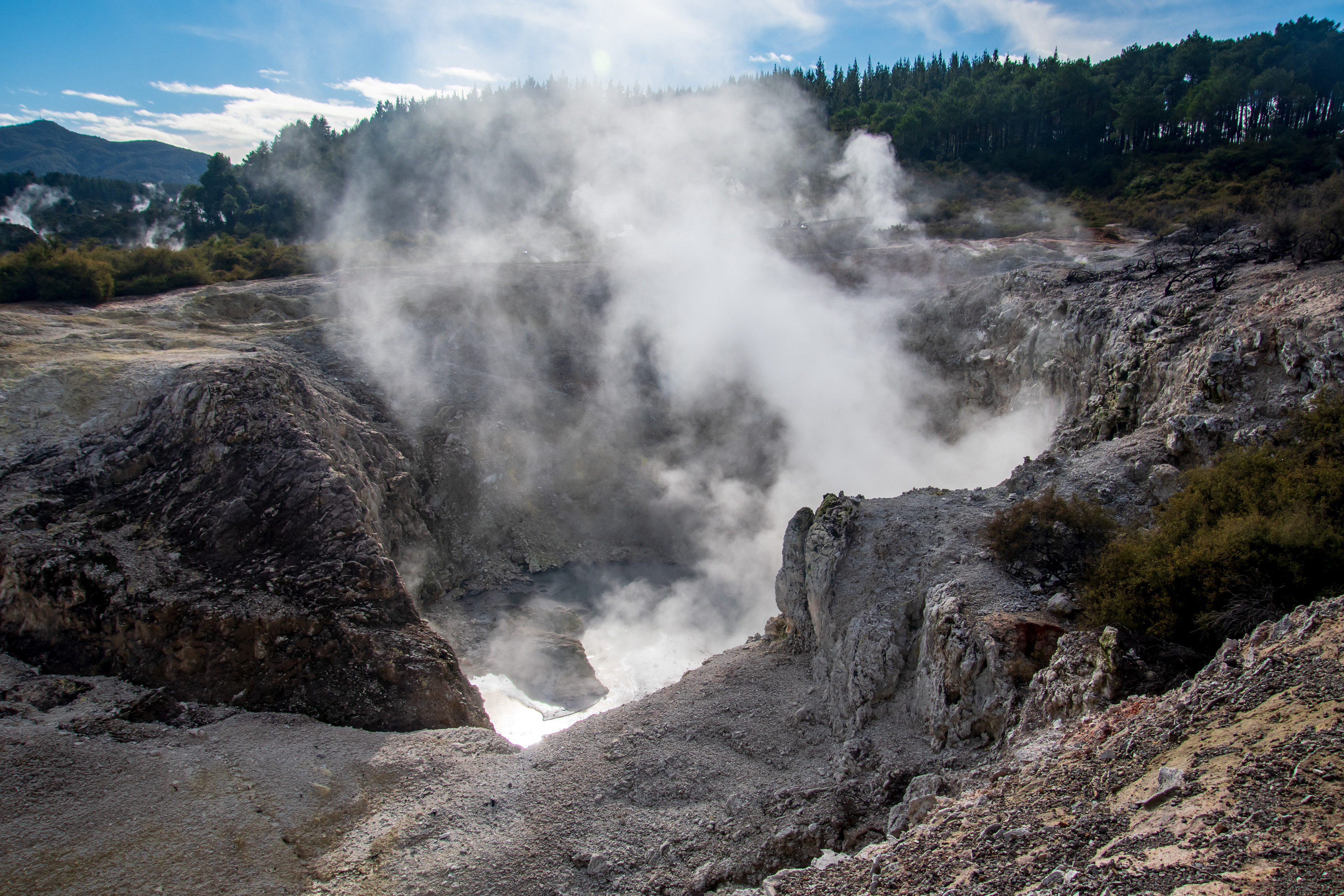
Artist's Palette
If there is one thing that jumps out about this geothermal attraction it has to be the veritable feast of colours. Bodies of water the colour of jade, muddy slate, or sepia; banks and ground dripping with sulphurous, russet and citreous rainbow hues. This is just a sprinkling of the colors.
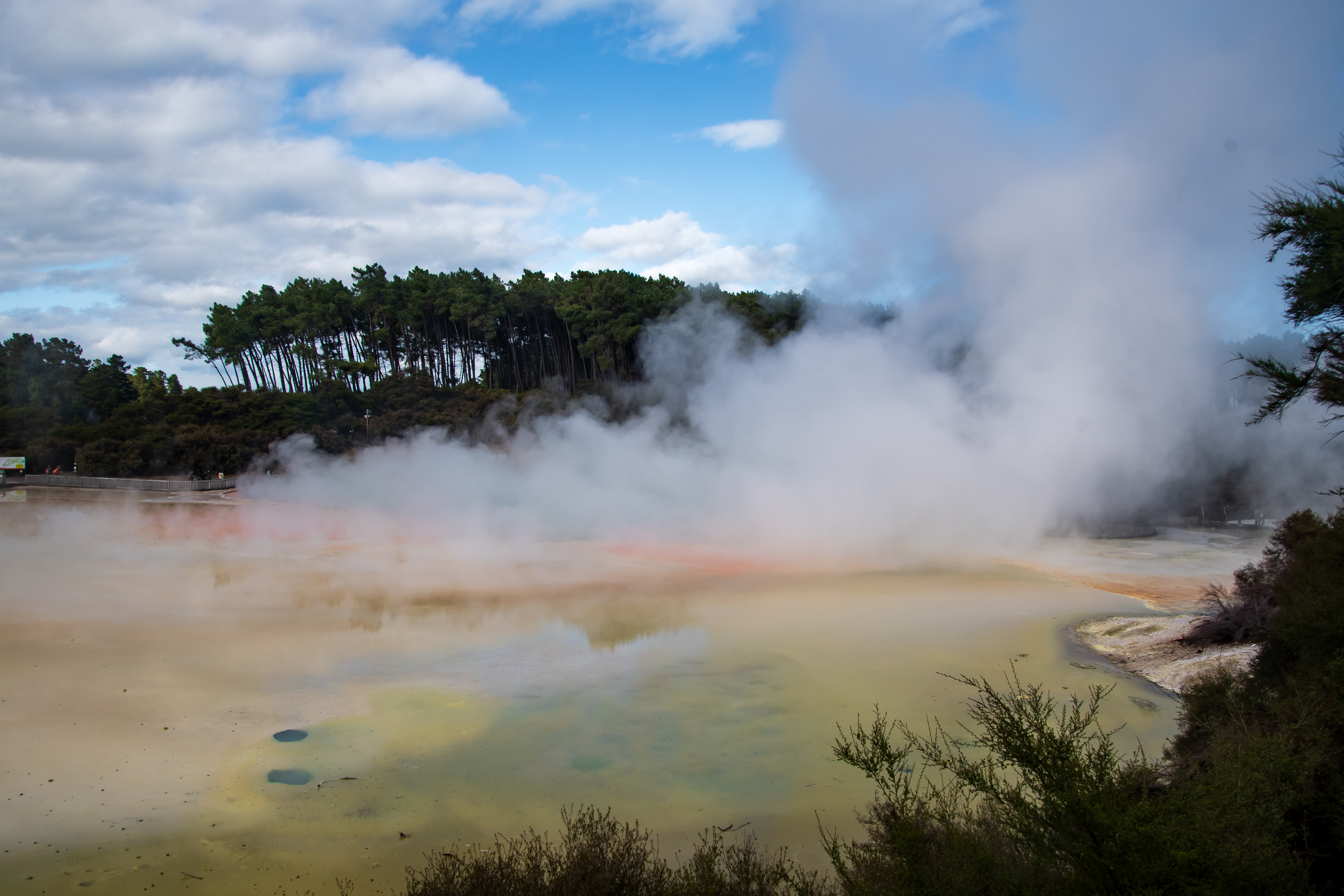

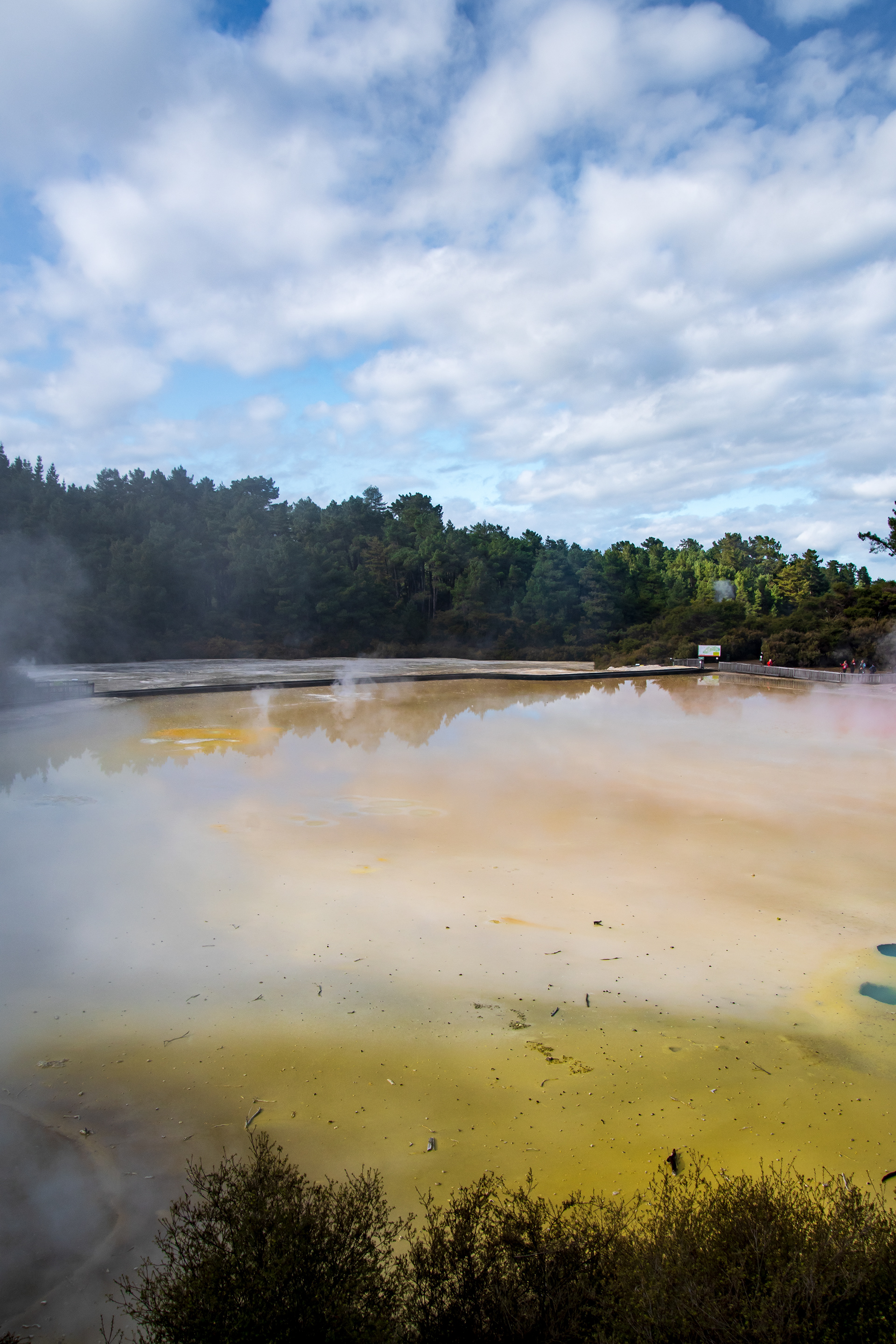

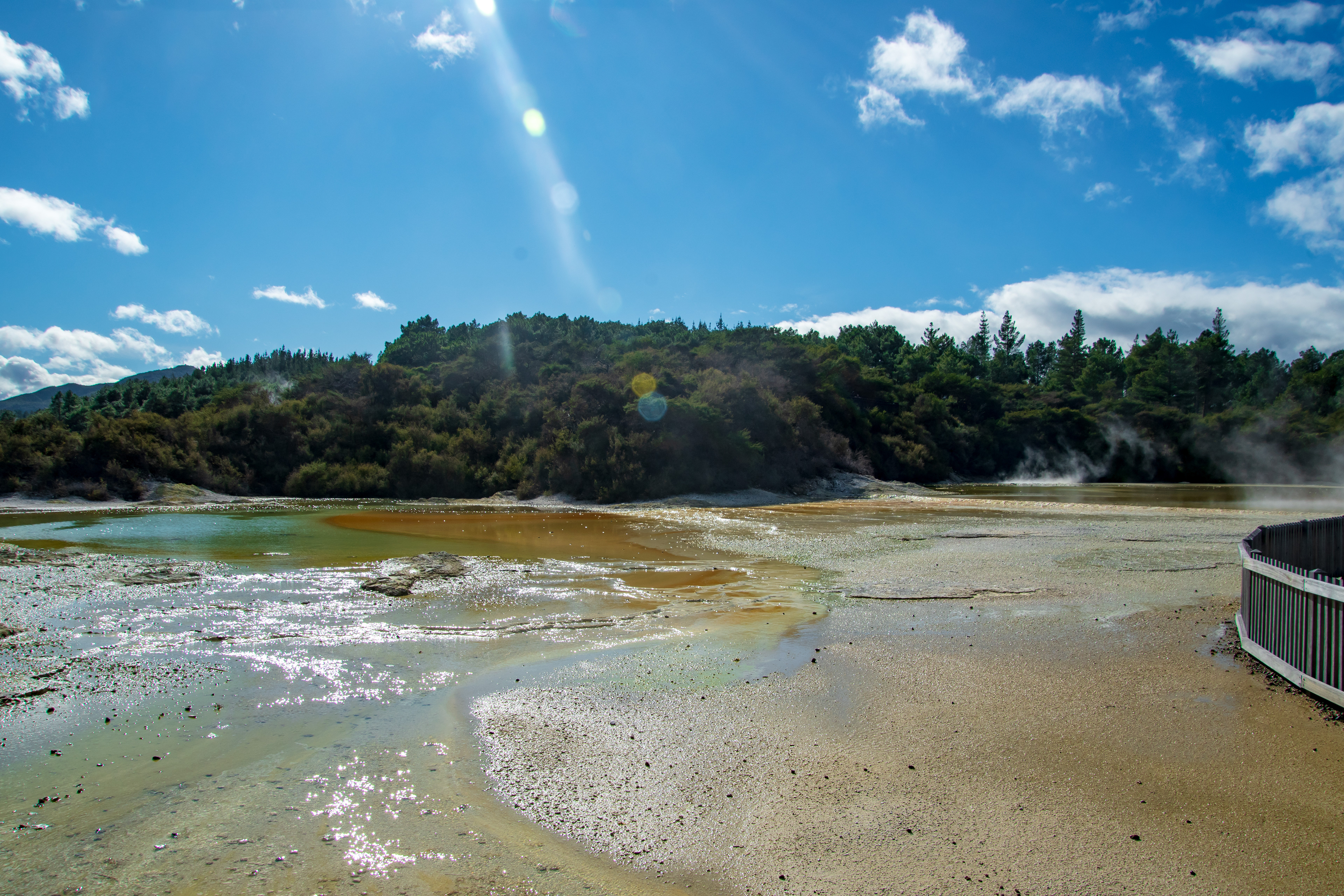
Champagne Pool
The name Champagne Pool is derived from the abundant efflux of Carbon Dioxide (CO2), similar to a glass of bubbling champagne. The hot spring was formed 900 years ago by a hydrothermal eruption, which makes it in geological terms a relatively young system. Its crater is around 65 m in diameter with a maximum depth of approximately 62 m and is filled with an estimated volume of 50,000 m3 of geothermal fluid. The deep geothermal water below Champagne Pool is of the order of 260 °C but water temperature within the pool is maintained at 73 °C to 75 °C by losing heat to the atmosphere. The pH of 5.5 is relatively constant due to buffering by the flux of CO2. Gases are mainly CO2, but to less extent Nitrogen (N2), Methane (CH4), Hydrogen (H2), Hydrogen sulphide (H2S) and traces of oxygen (O2). The siliceous geothermal fluid is oversaturated with metalloid compounds such as orpiment (As2S3) and stibnite (Sb2S3), which precipitate and form orange subaqueous deposits. The colourful deposits are in sharp contrast to the grey-white silica sinter surrounding Champagne Pool.
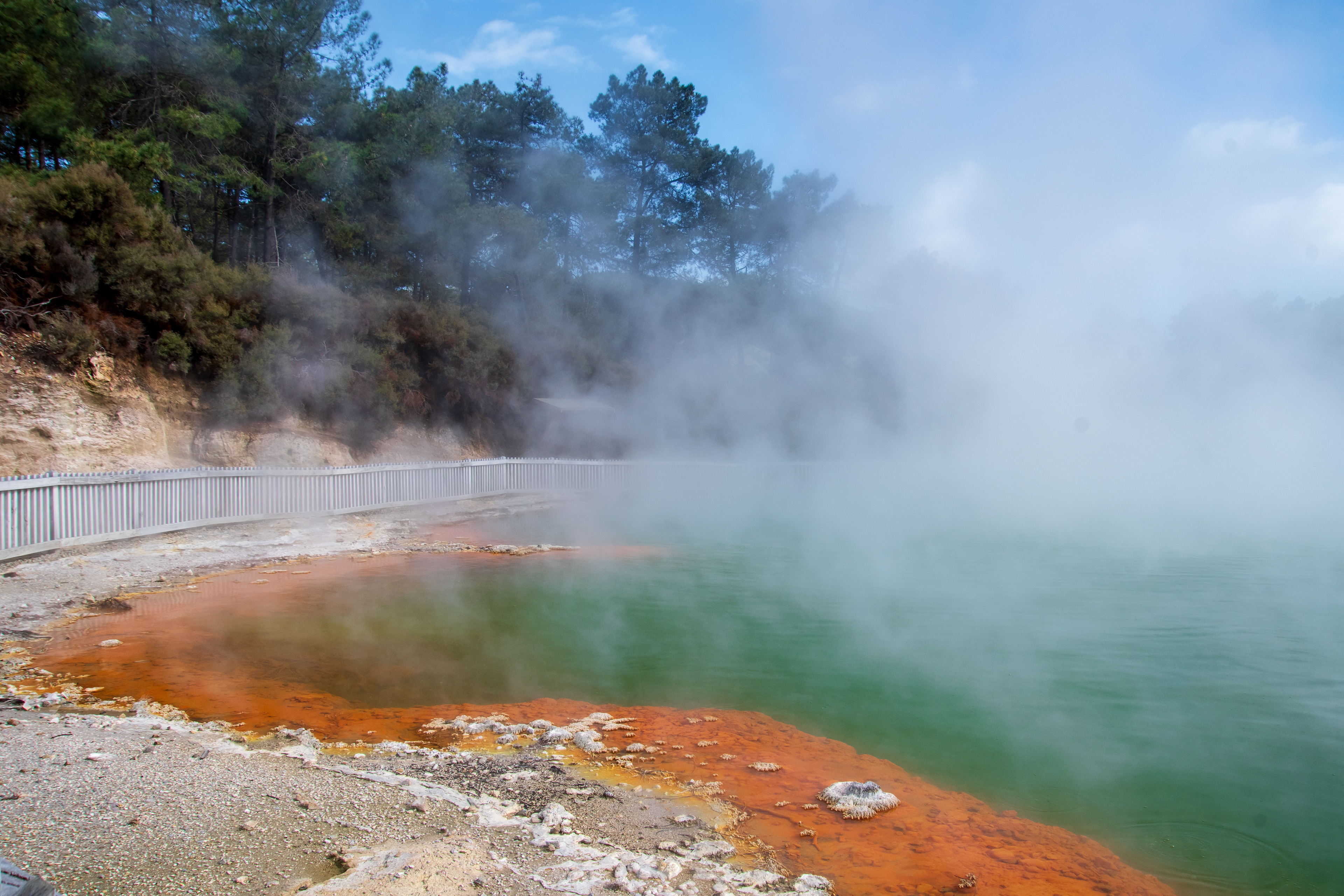
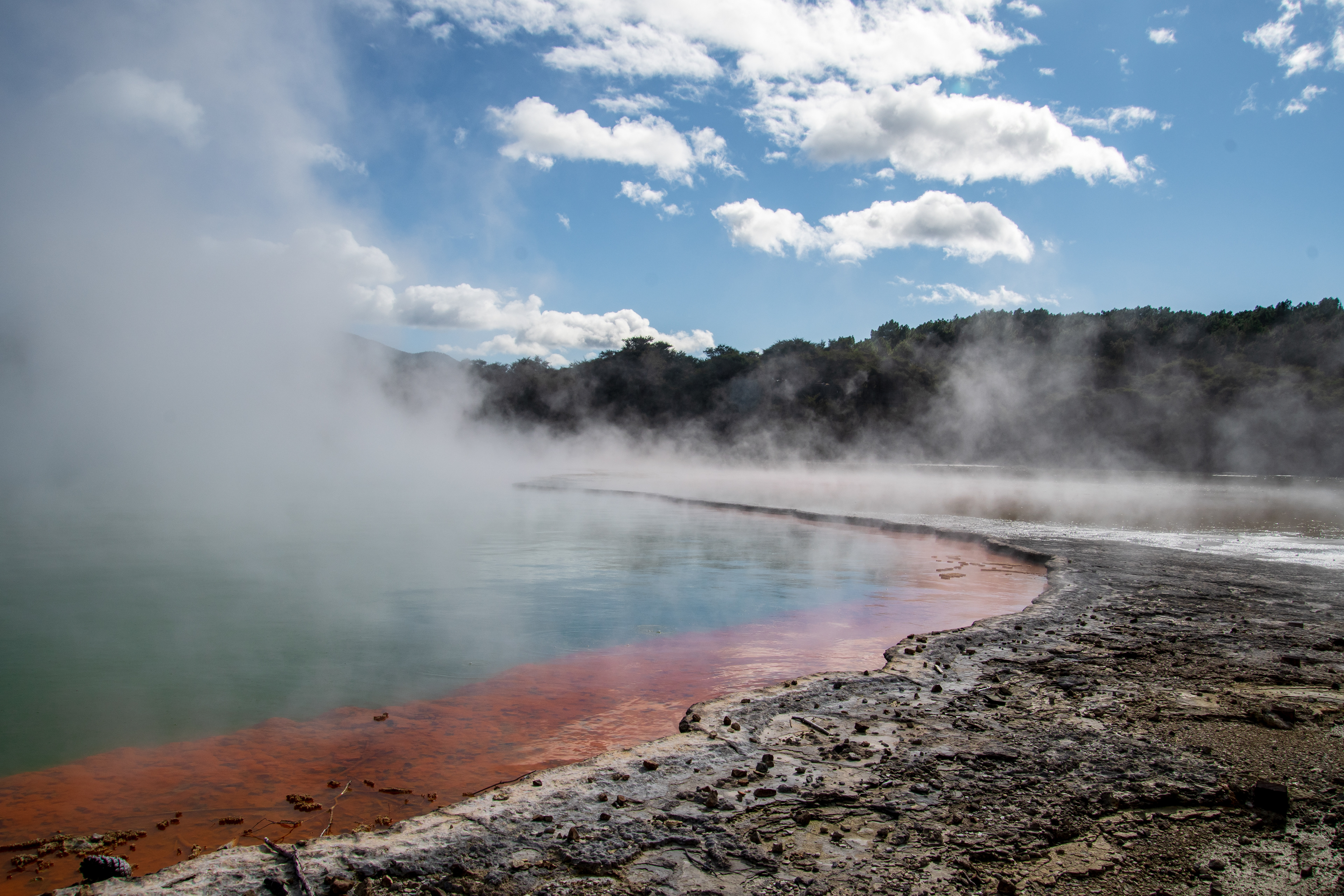
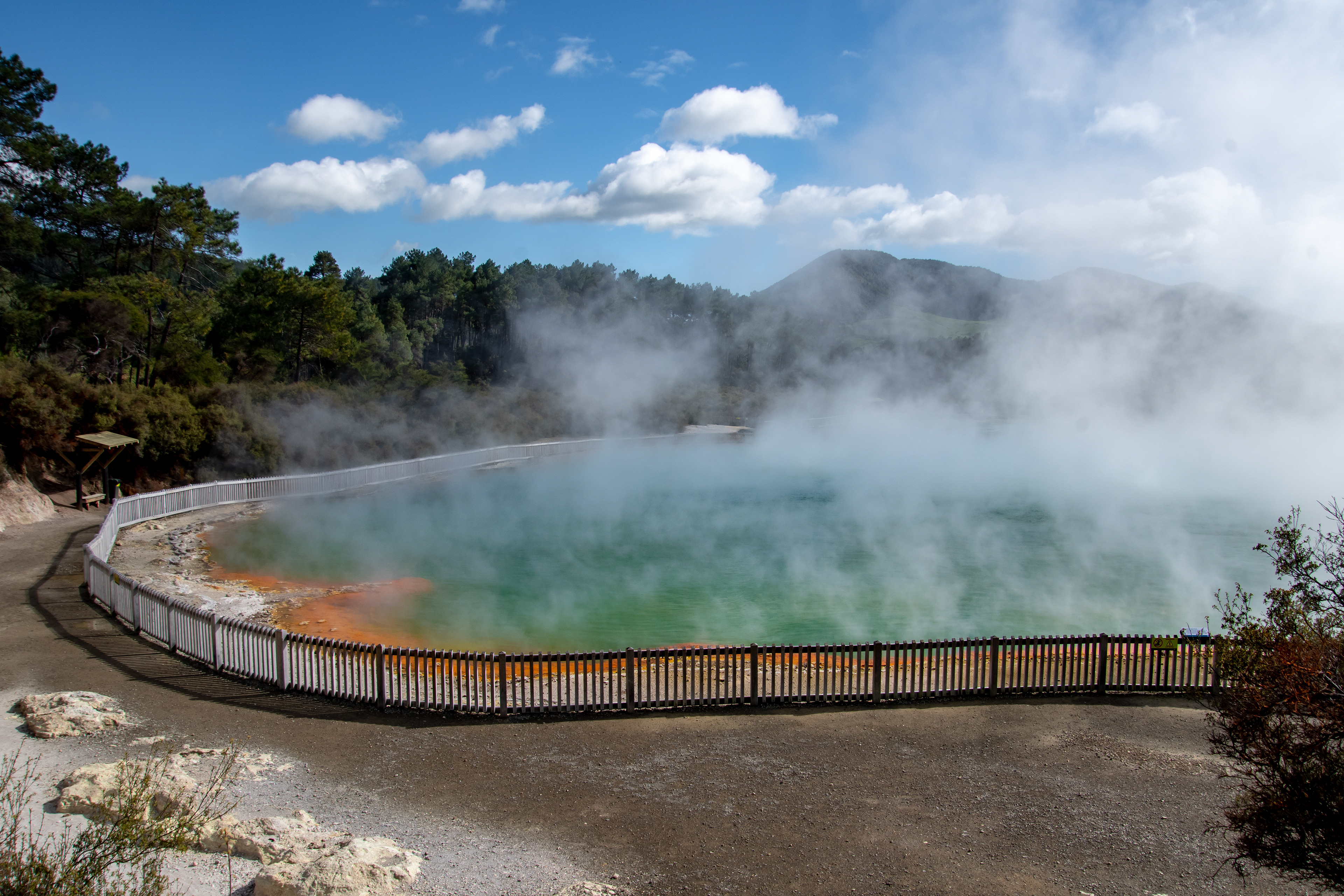


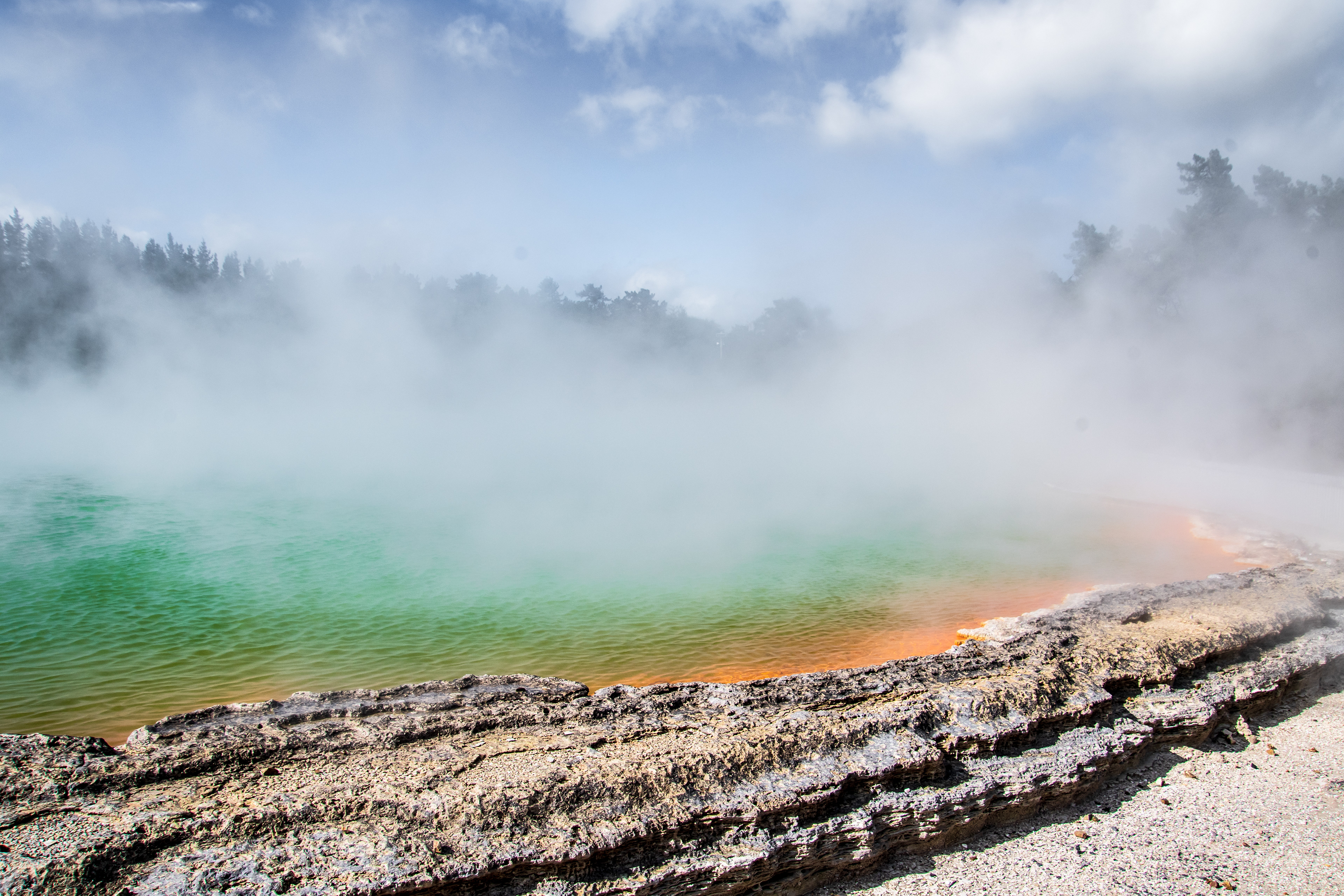

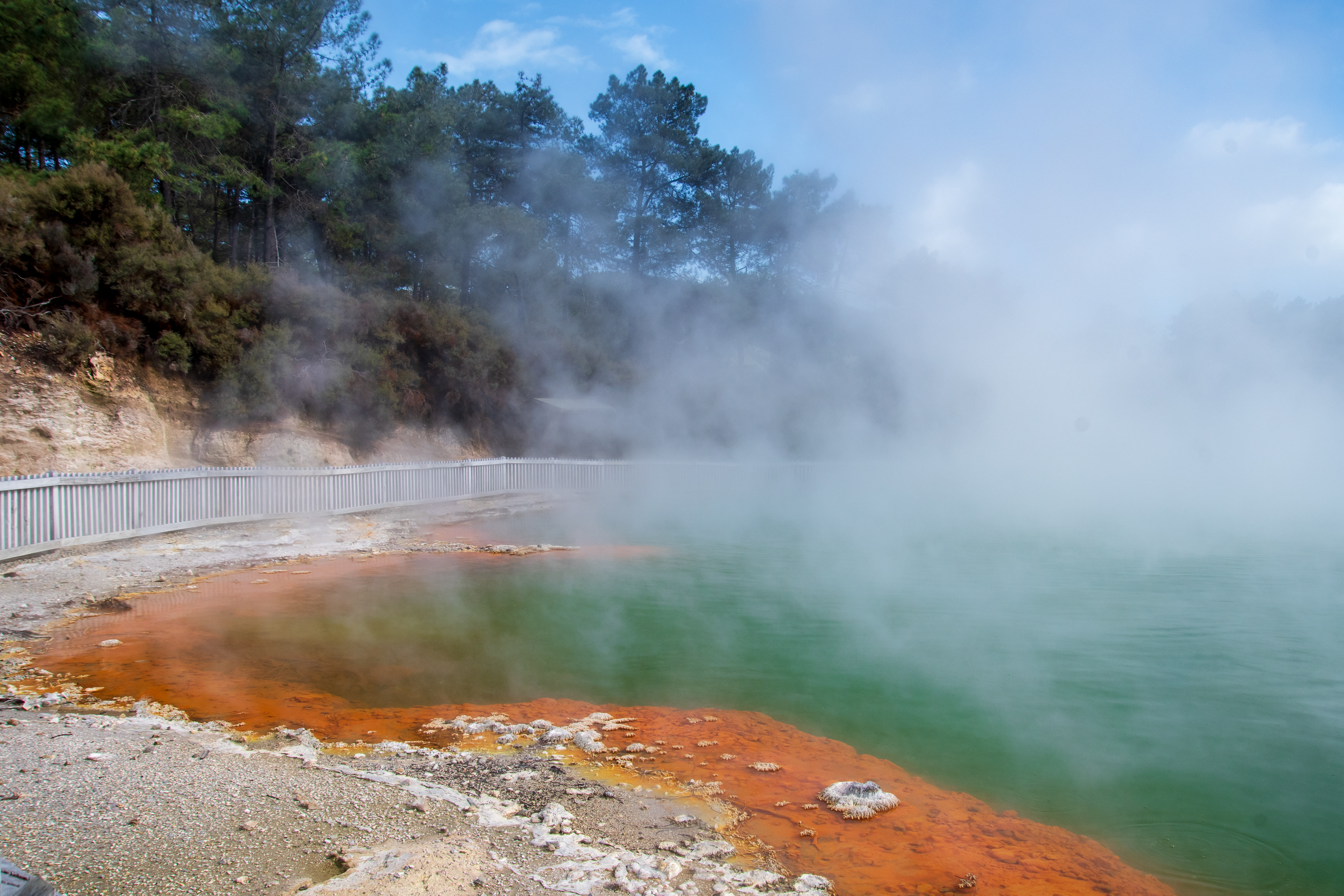
Roto Karikitea, The Devil's Bath
This crater is filled with excess water from the champagne pool. The fluorescent green color is the result from a deposit of minerals (Sulphur) being suspended in the water and refracting the sunlight. The pool will vary in colors, being brighter on sunny days and duller on cloudy days. The pH of this pool is 2, making it extremely acidic. The temperature of the water is 14 degree Celsius.
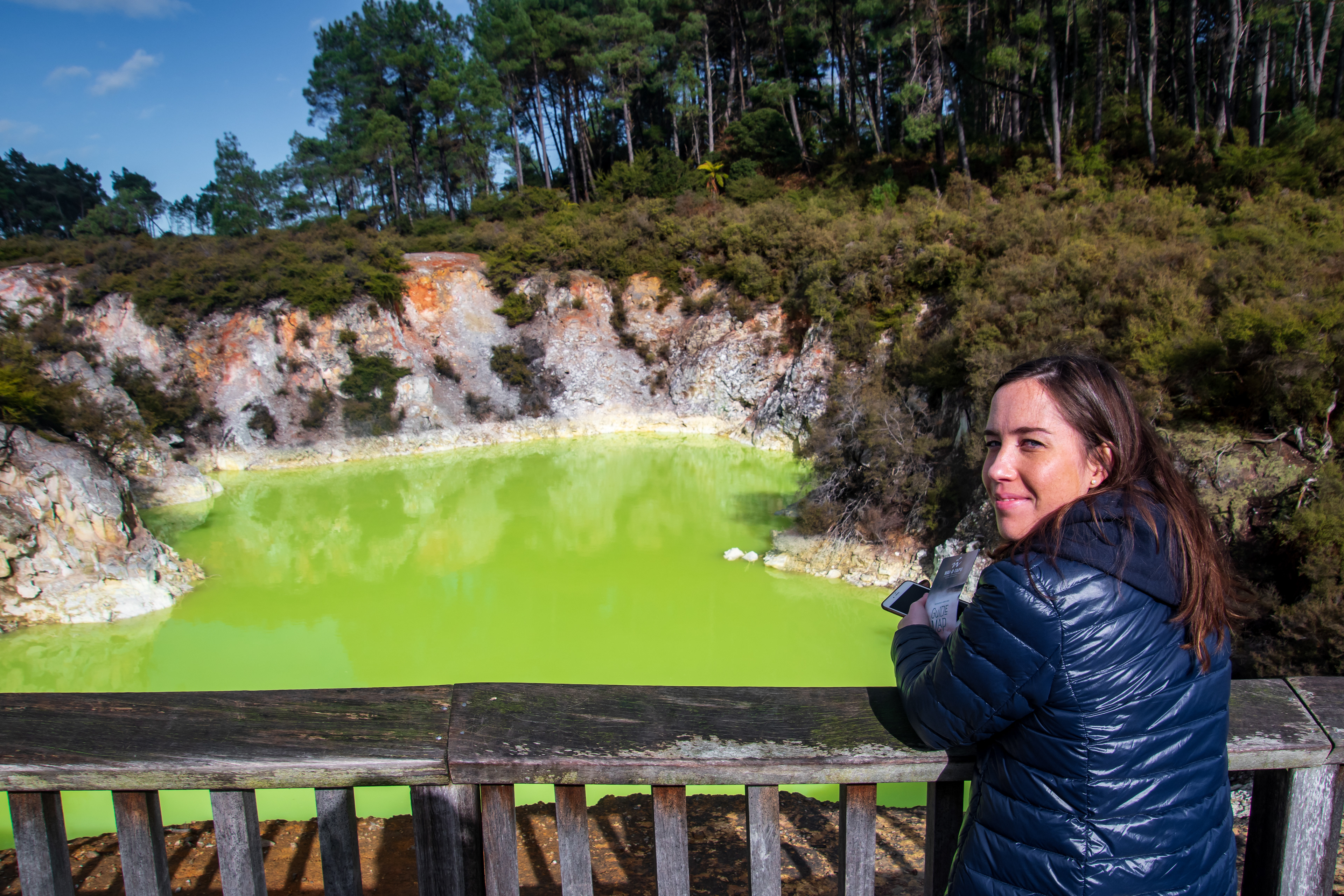
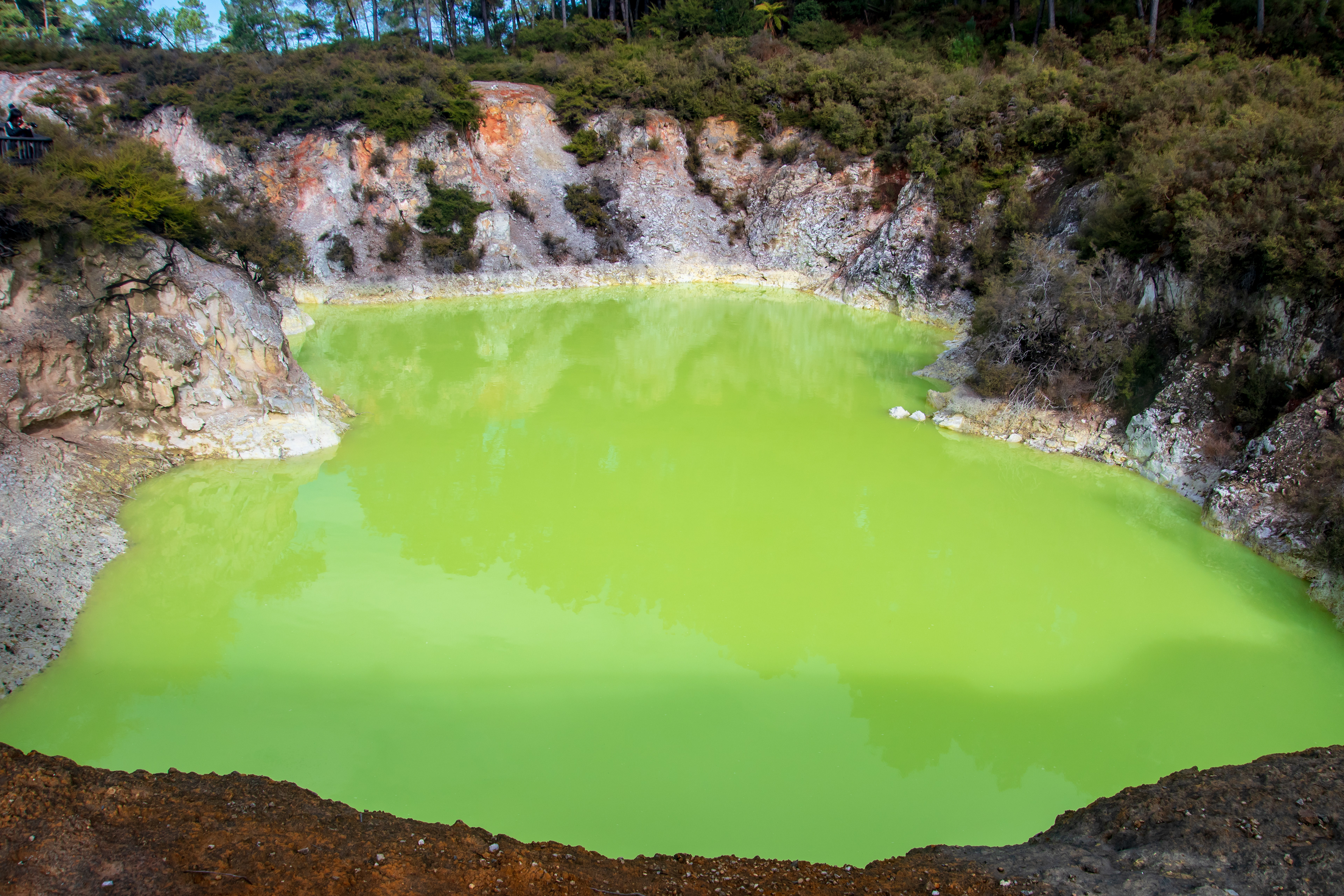
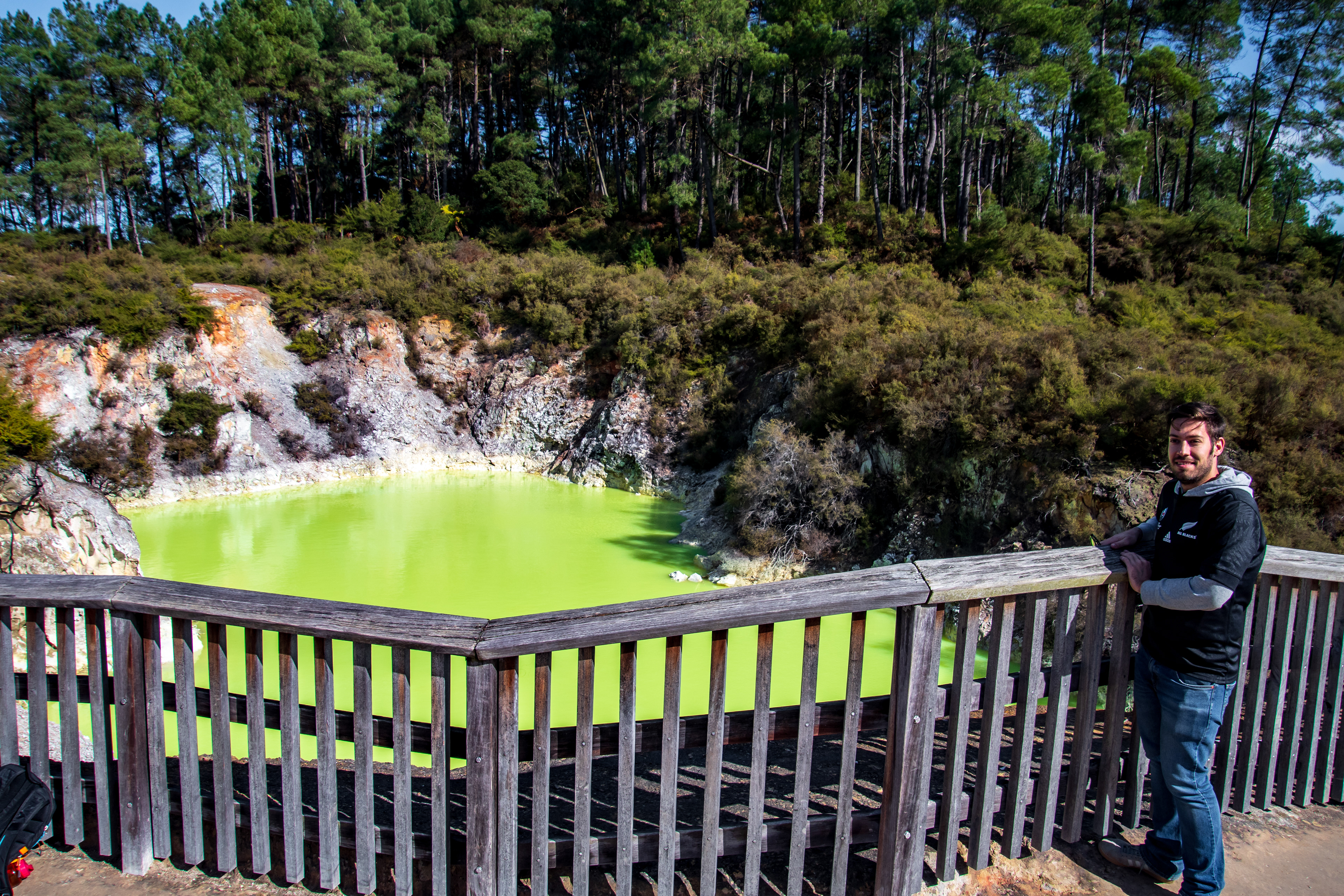
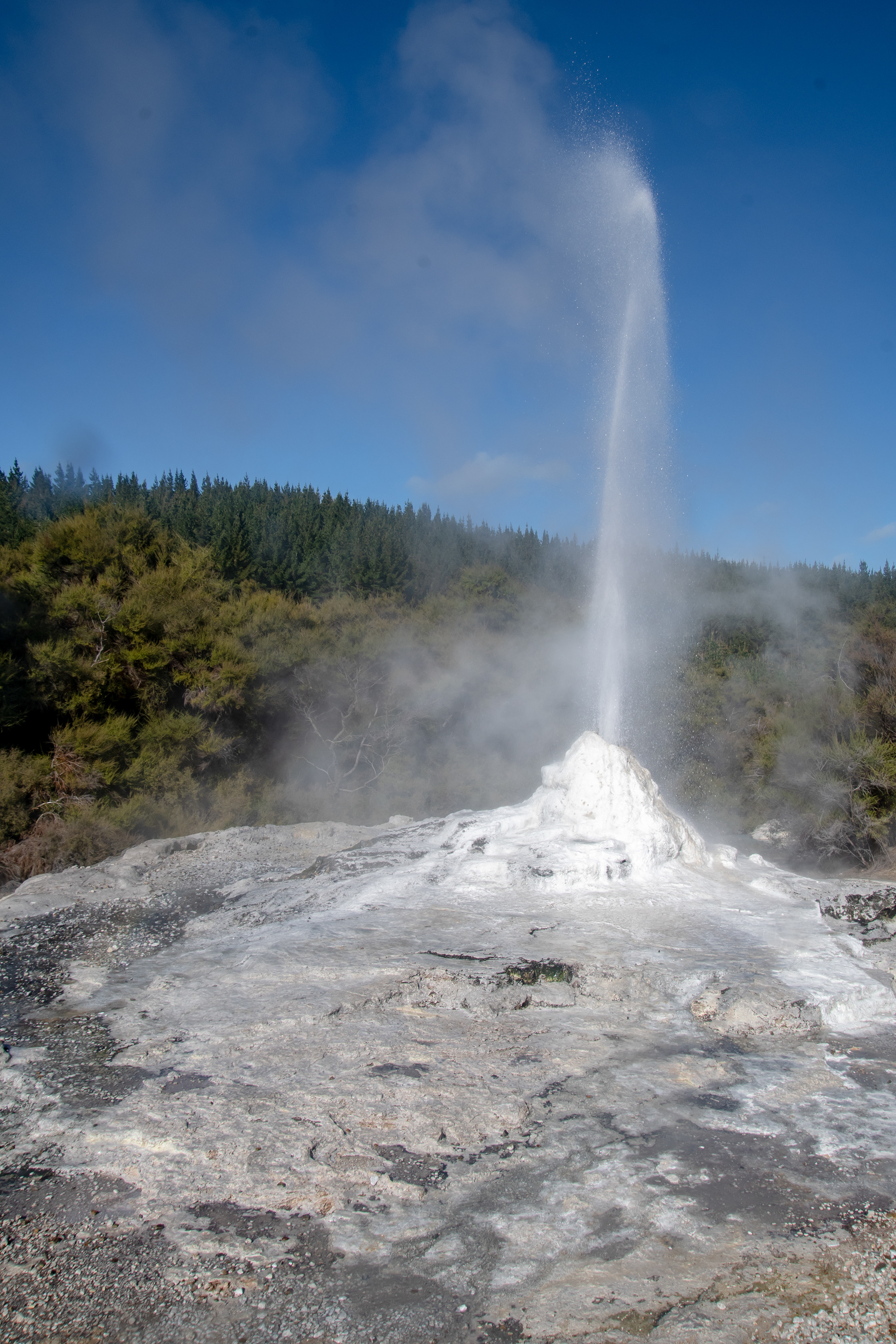
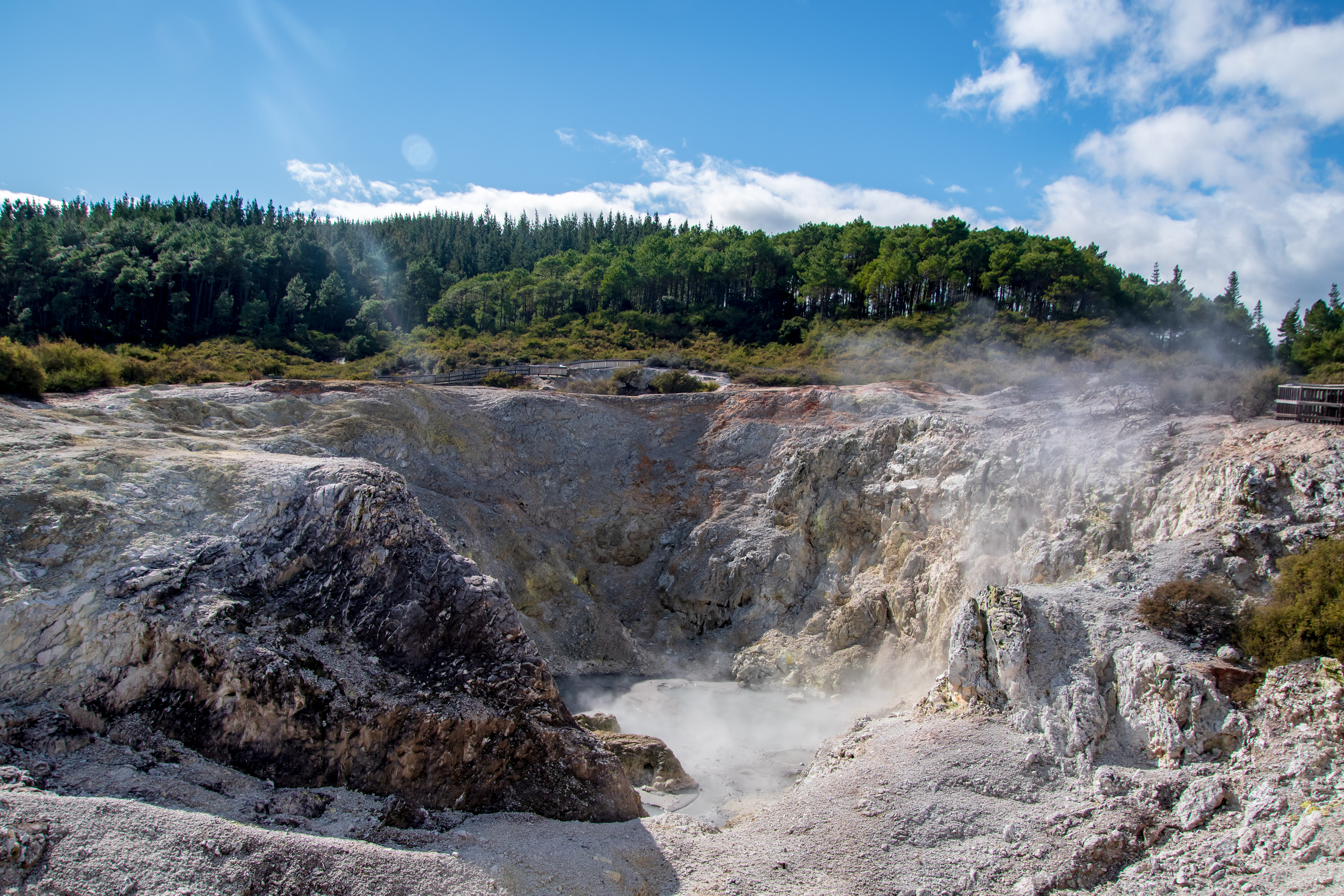

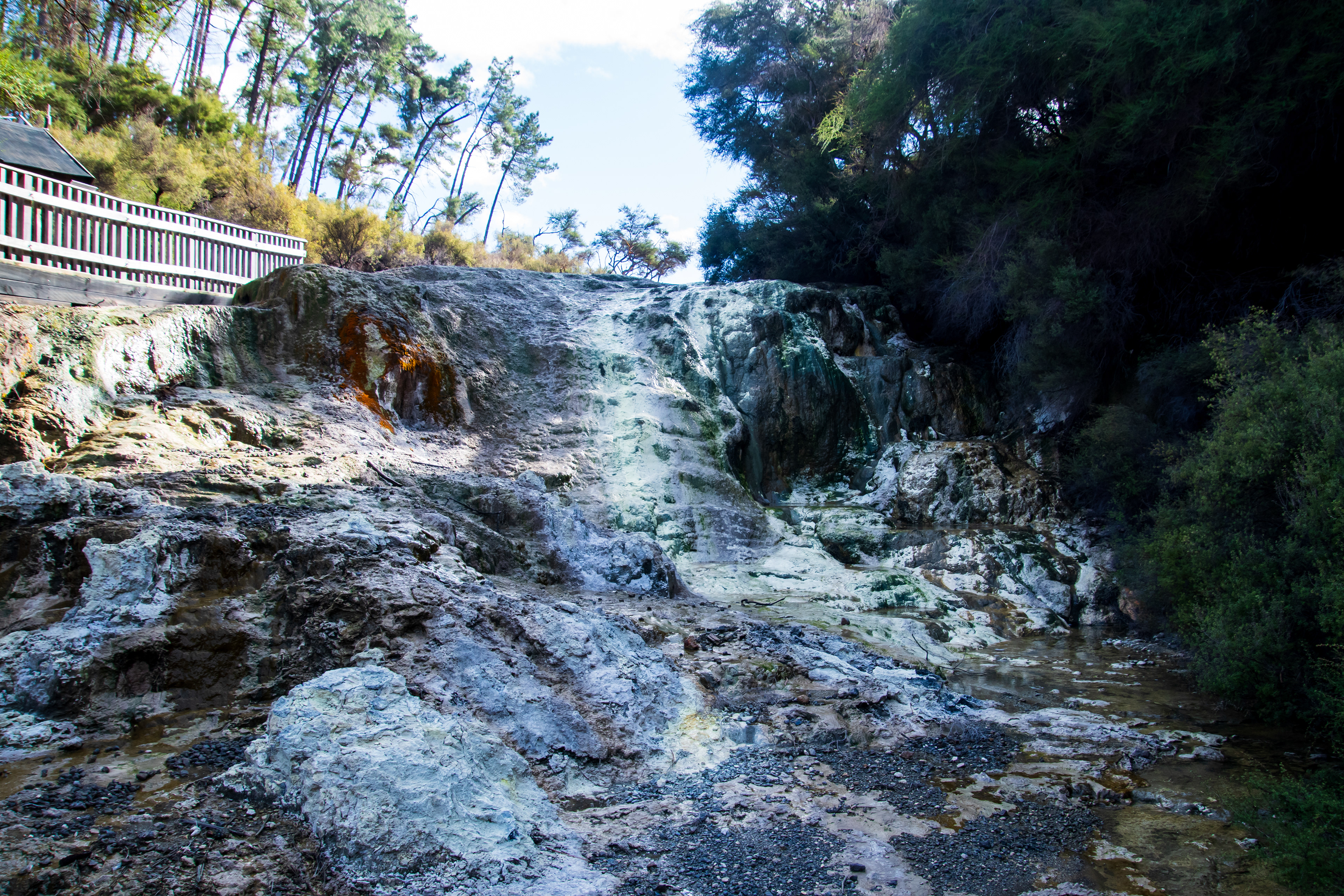
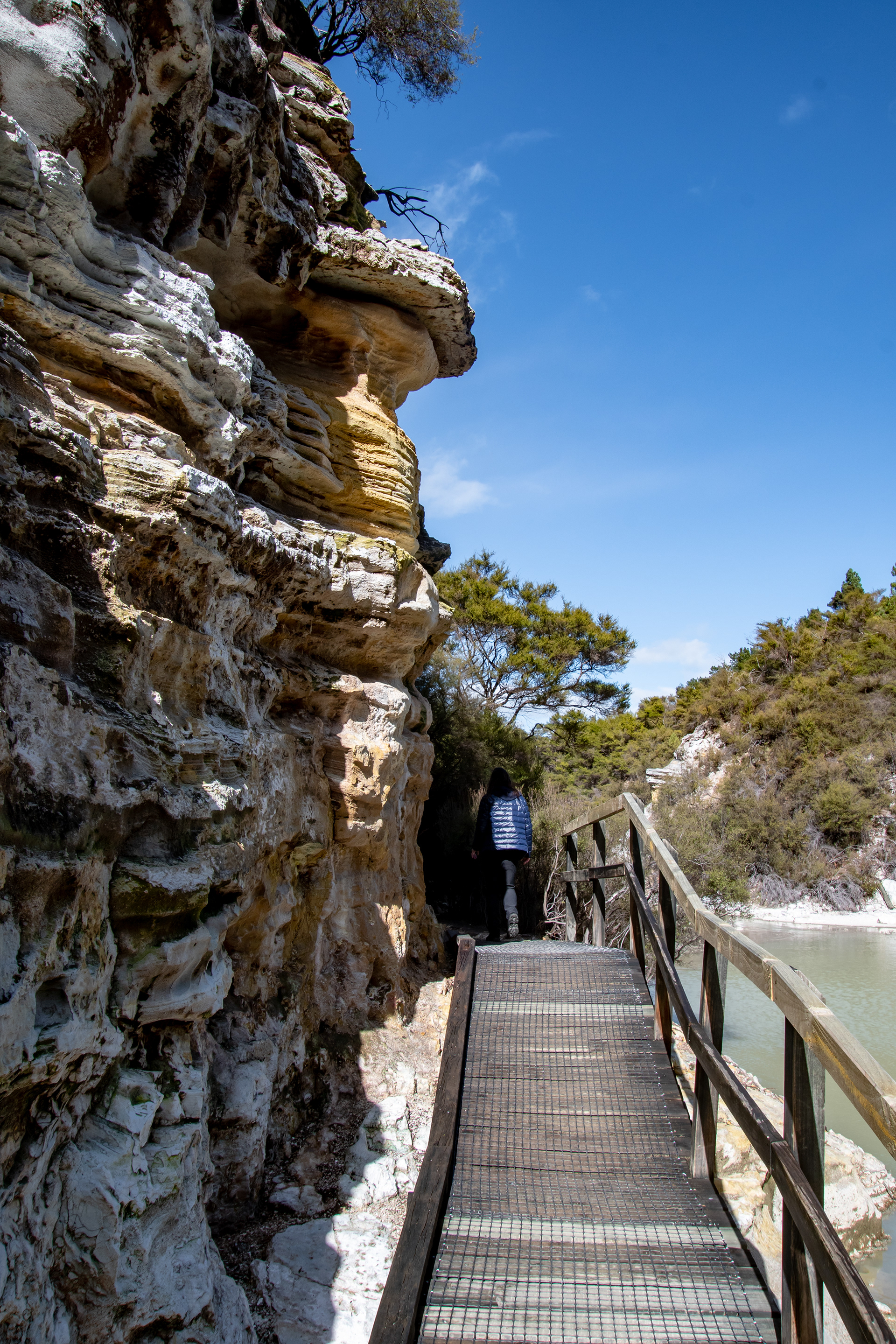
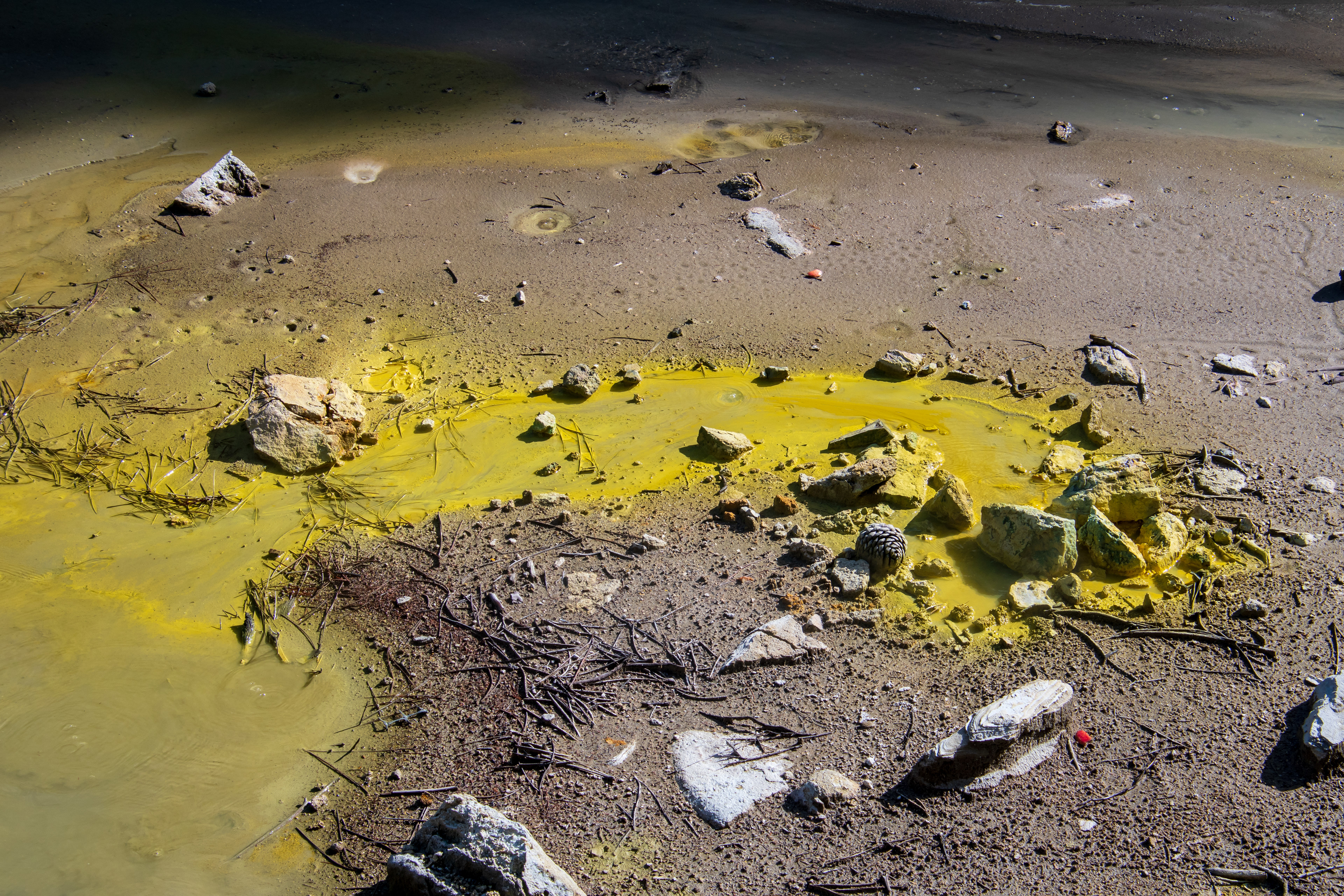

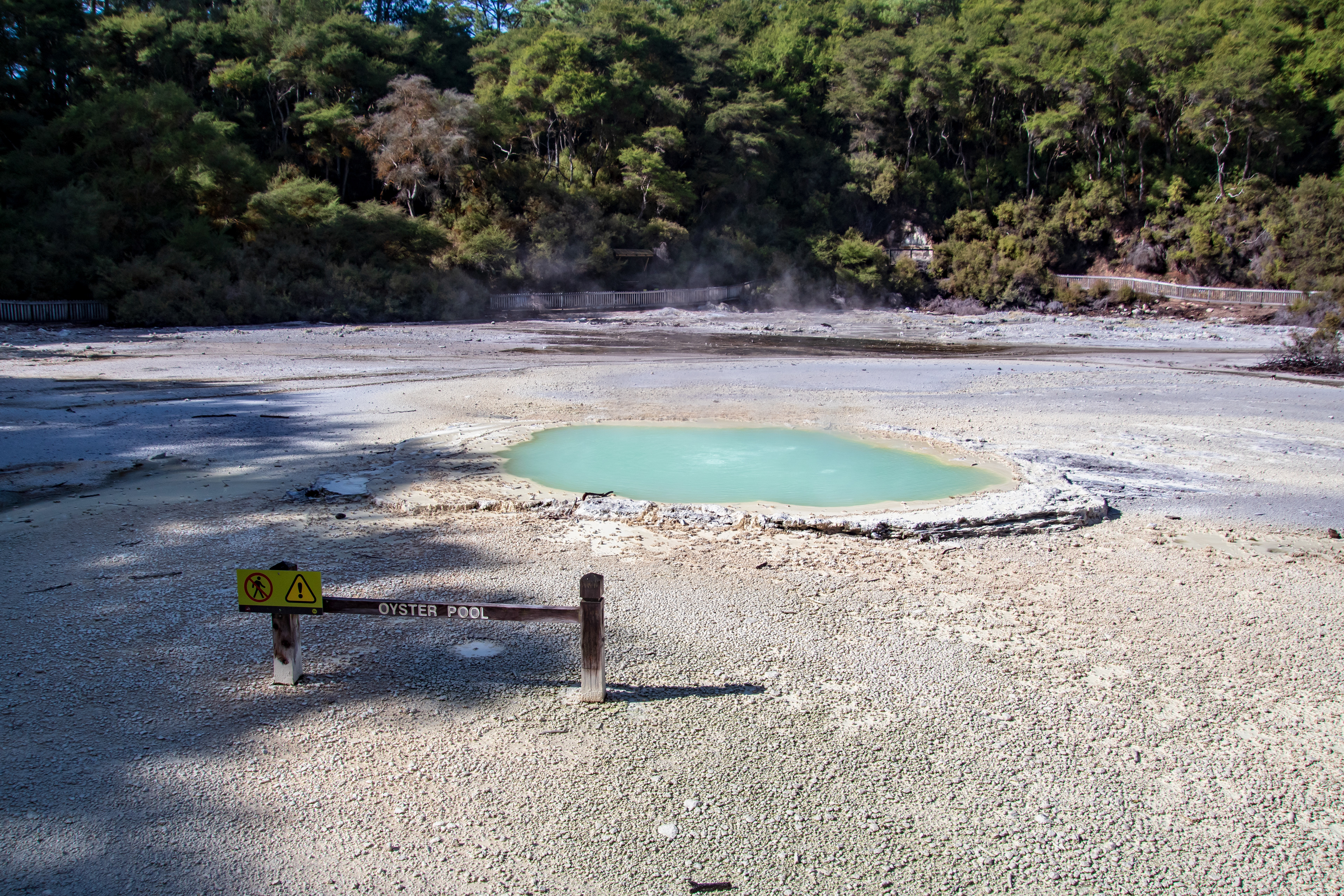

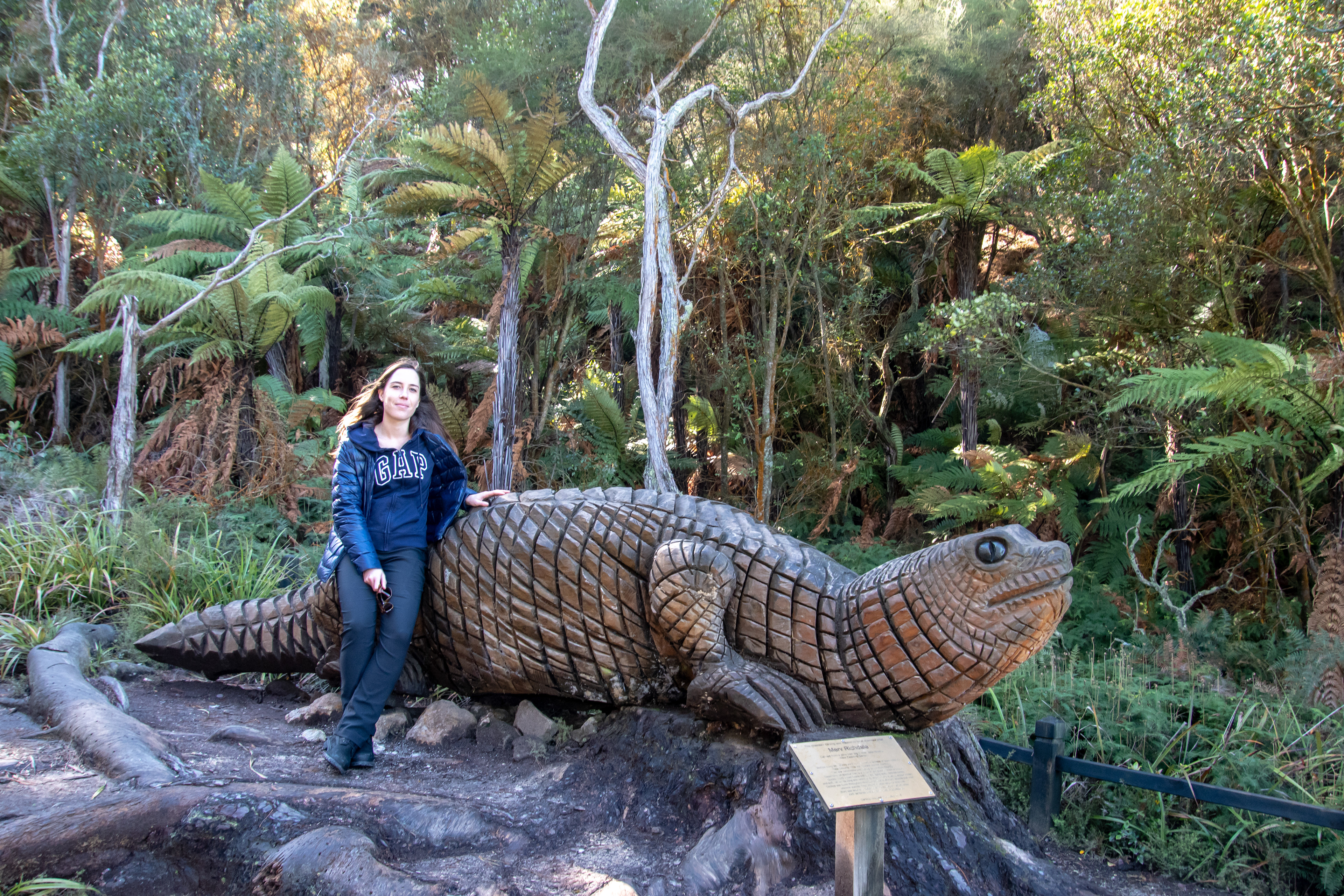
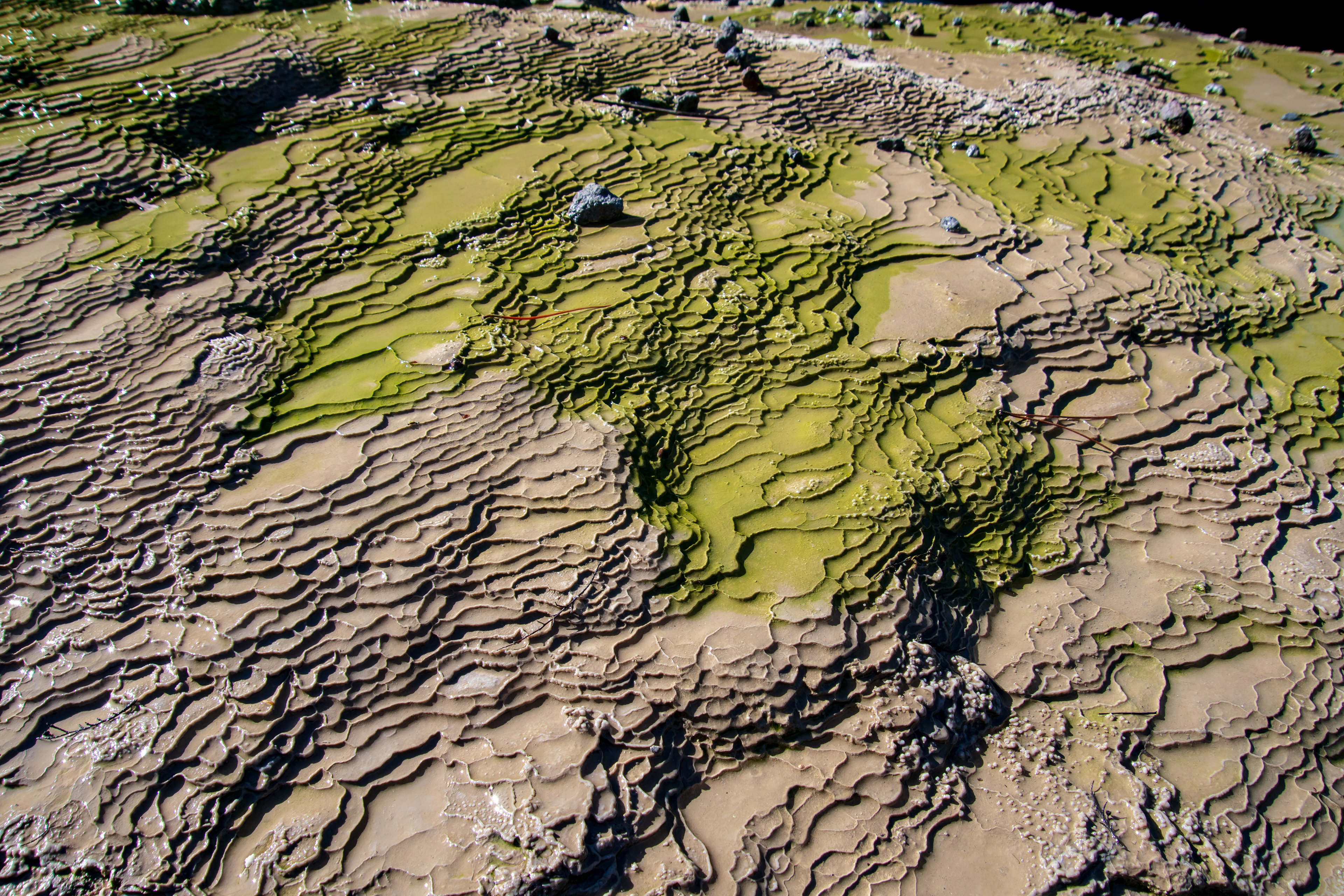
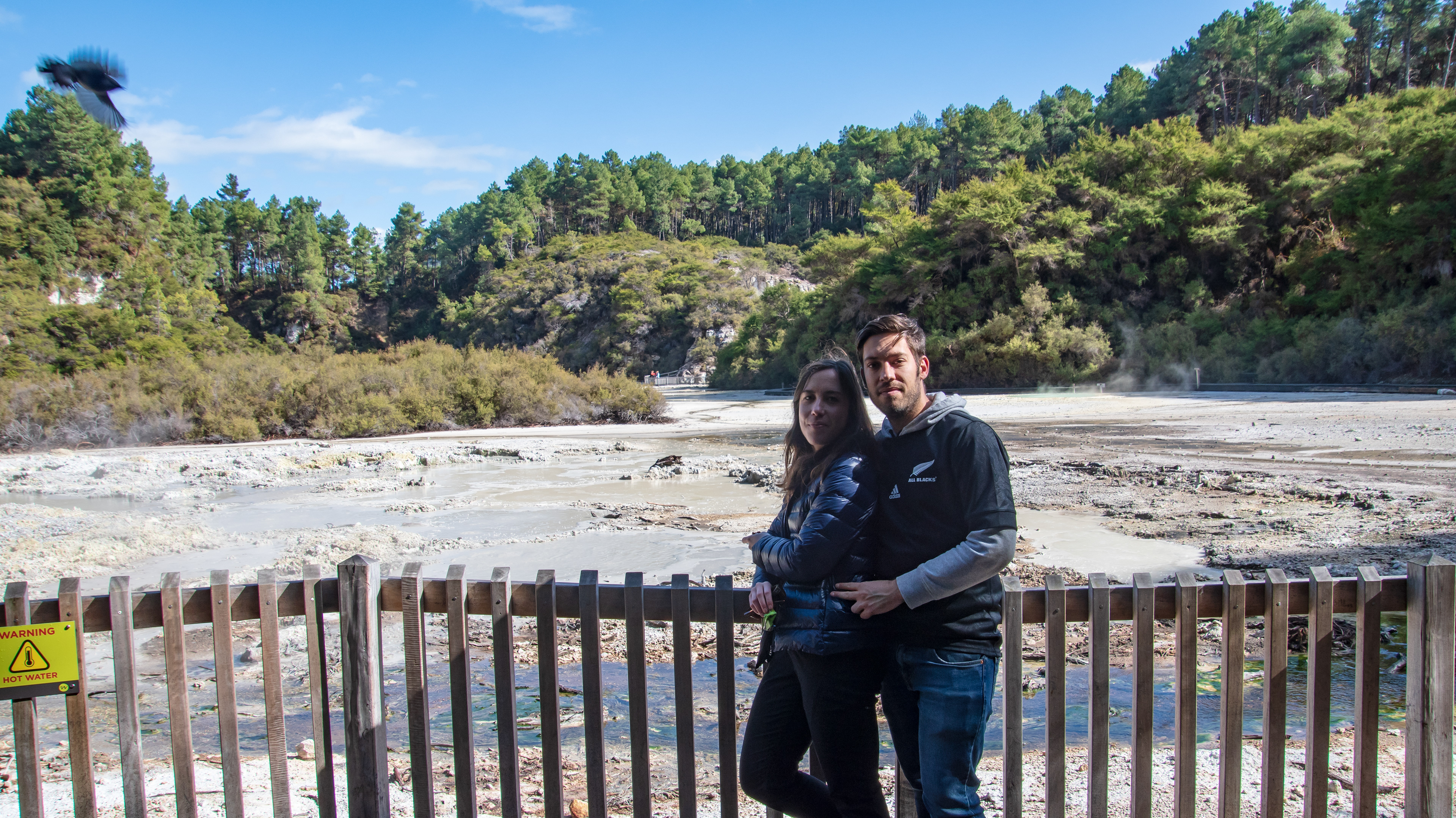
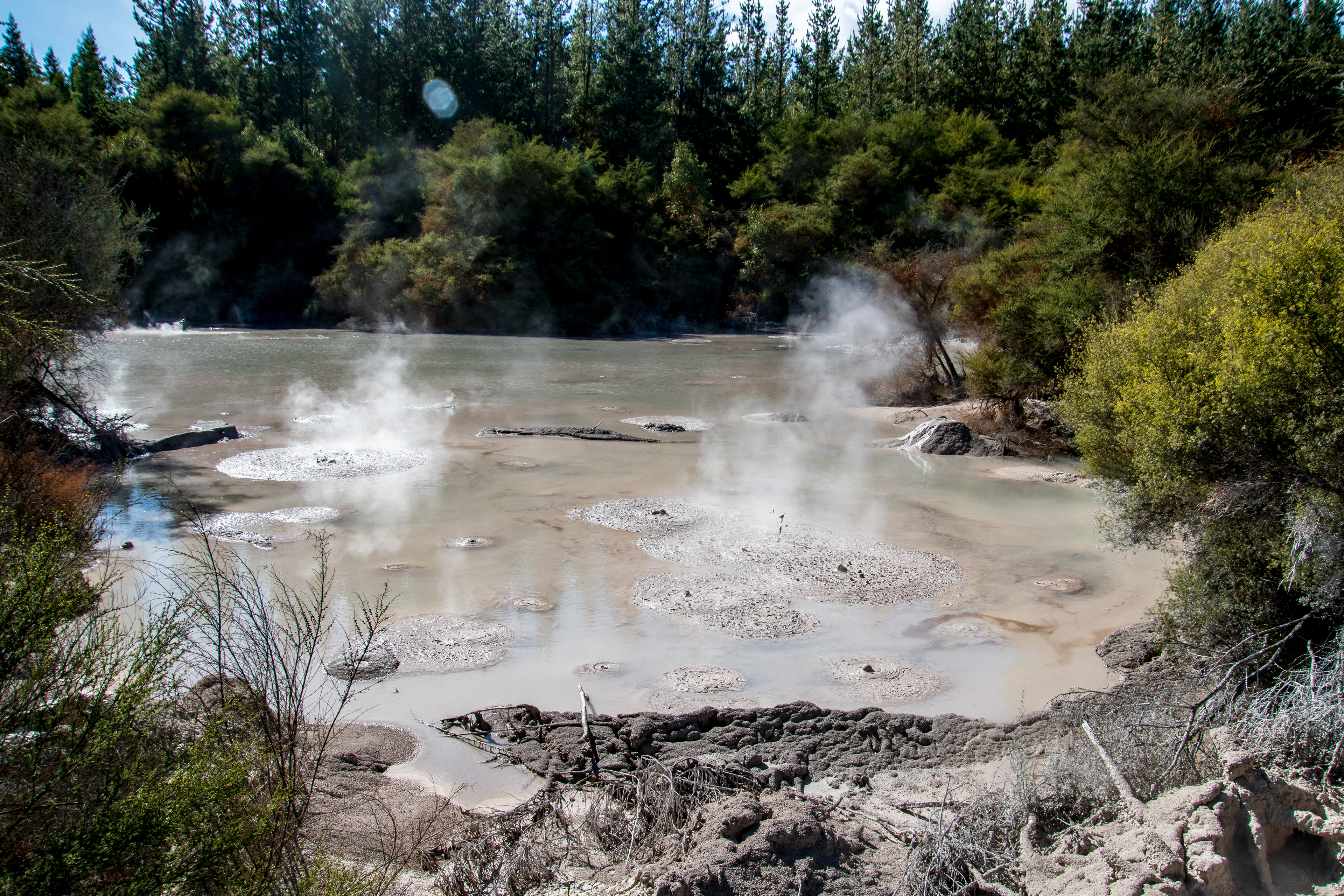
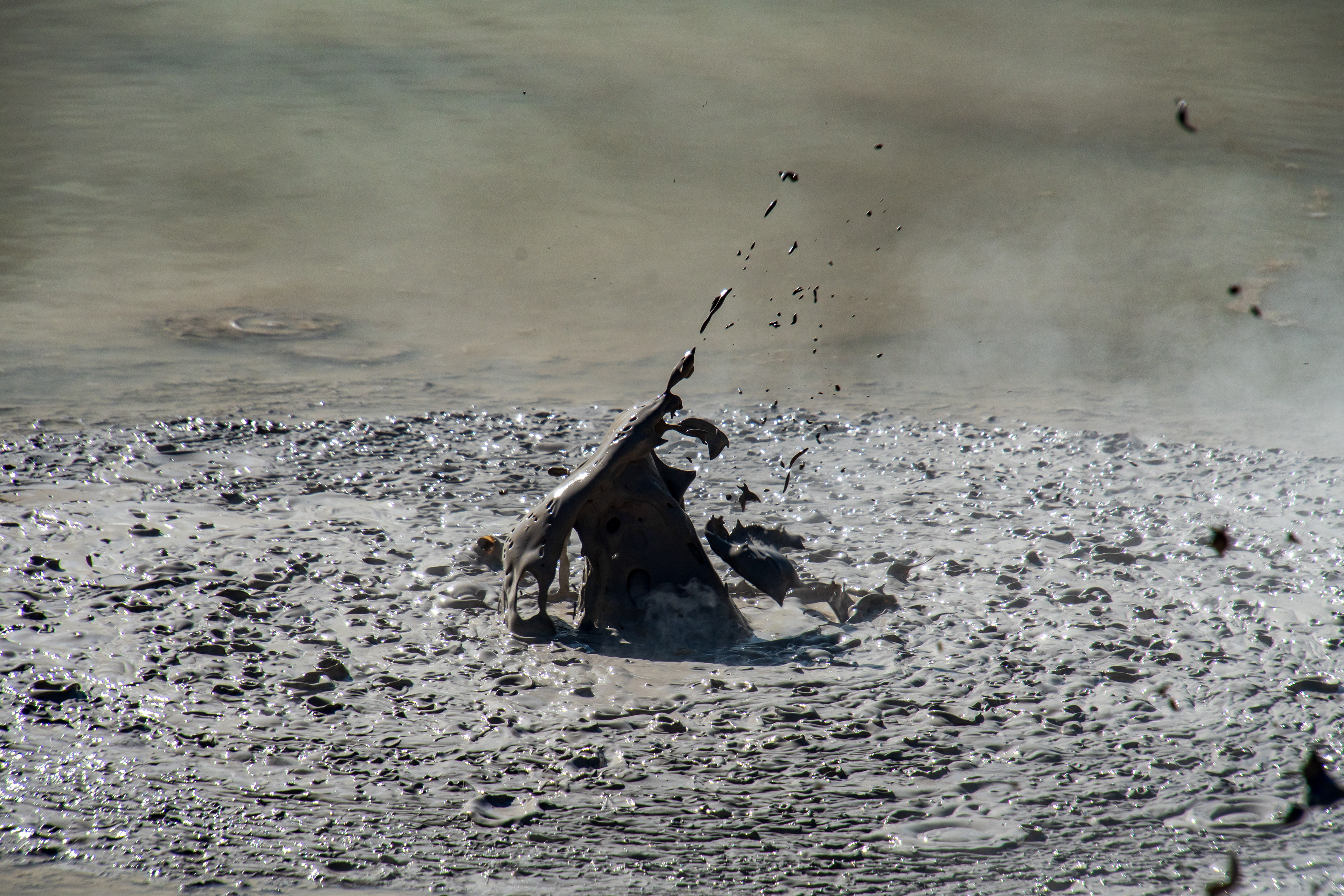

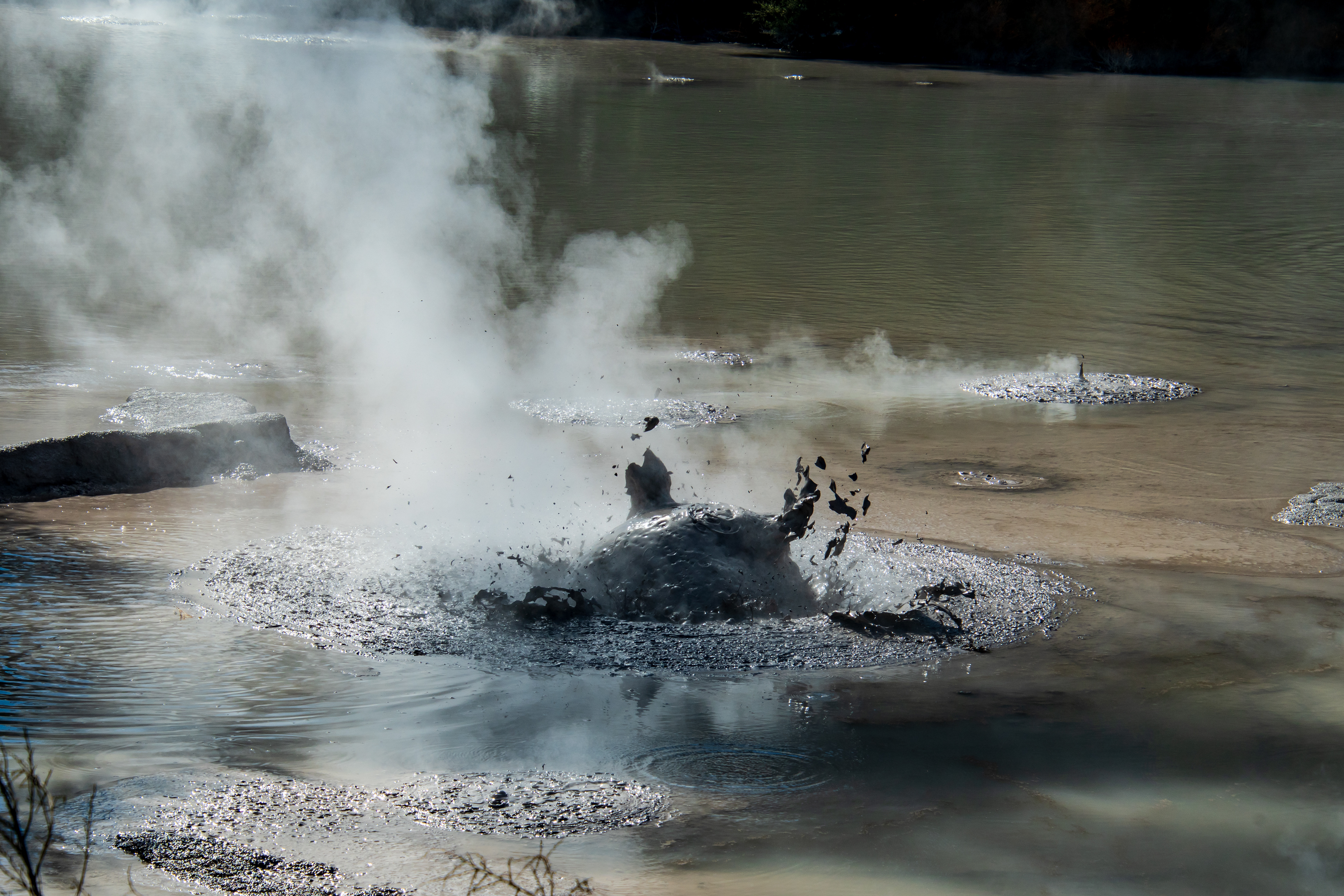
Waimangu Volcanic Valley
Experience spectacular volcanic craters, enormous hot water springs, beautiful geothermal features, rare and unusual plant life, brilliantly coloured micro biology and a wide array of birds. Be immersed in the stories of the Mt Tarawera volcanic eruption, its people, and the resulting dramatic landscape changes that created the world’s youngest geothermal valley. The Waimangu Volcanic Rift Valley is the hydrothermal system created on 10 June 1886 by the volcanic eruption of Mount Tarawera, on the North Island. It encompasses Lake Rotomahana, the site of the Pink and White Terraces, as well as the location of the Waimangu Geyser, which was active from 1900 to 1904.
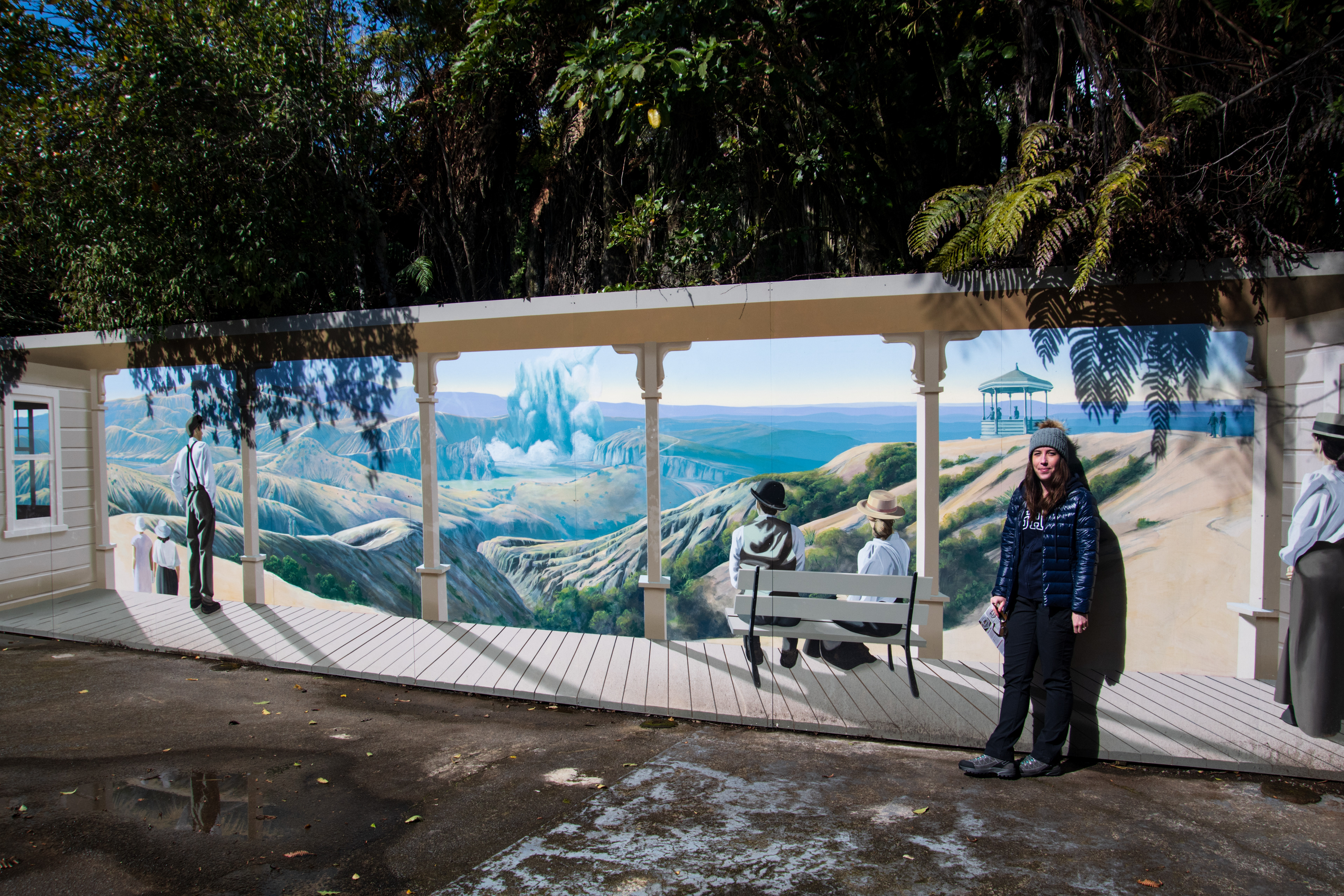
Southern Crater
The 50-metre-deep Southern Crater was formed by the 1886 Mount Tarawera eruption and has not been notably active since. Its floor is filled by the shallow two-metre-deep Emerald Pool, a cold water lake of mostly rainwater. The lake's water is usually a brown colour, but can vary depending on the state of the plants growing in it. Red aquatic fern growth is sometimes present.


Echo Crater, Frying Pan Lake
A short distance northeast lies Echo Crater, the biggest crater of the area, filled with the steaming-hot Frying Pan Lake, which is the largest hot spring in the world. The lake has an average depth of 6 m and covers 38,000 m2. The average temperature of its acidic (pH 3.5) water is 55 °C and the lake's overflow is the source of Waimangu Stream flowing through the valley and into Lake Rotomahana. Colourful sinter terraces are visible on the western shore of Frying Pan Lake, and immediately east of Echo Crater was the site of the extinct Waimangu Geyser. The crater area continued to be the source of eruptions in 1915, 1917, and last in 1973, and is still highly active, as evident by the steaming Cathedral Rocks to the north, and a cluster of hot springs and silica formations northeast of the lake referred to as "Hot Springs of Mother Earth (Nga Puia o te Papa)".

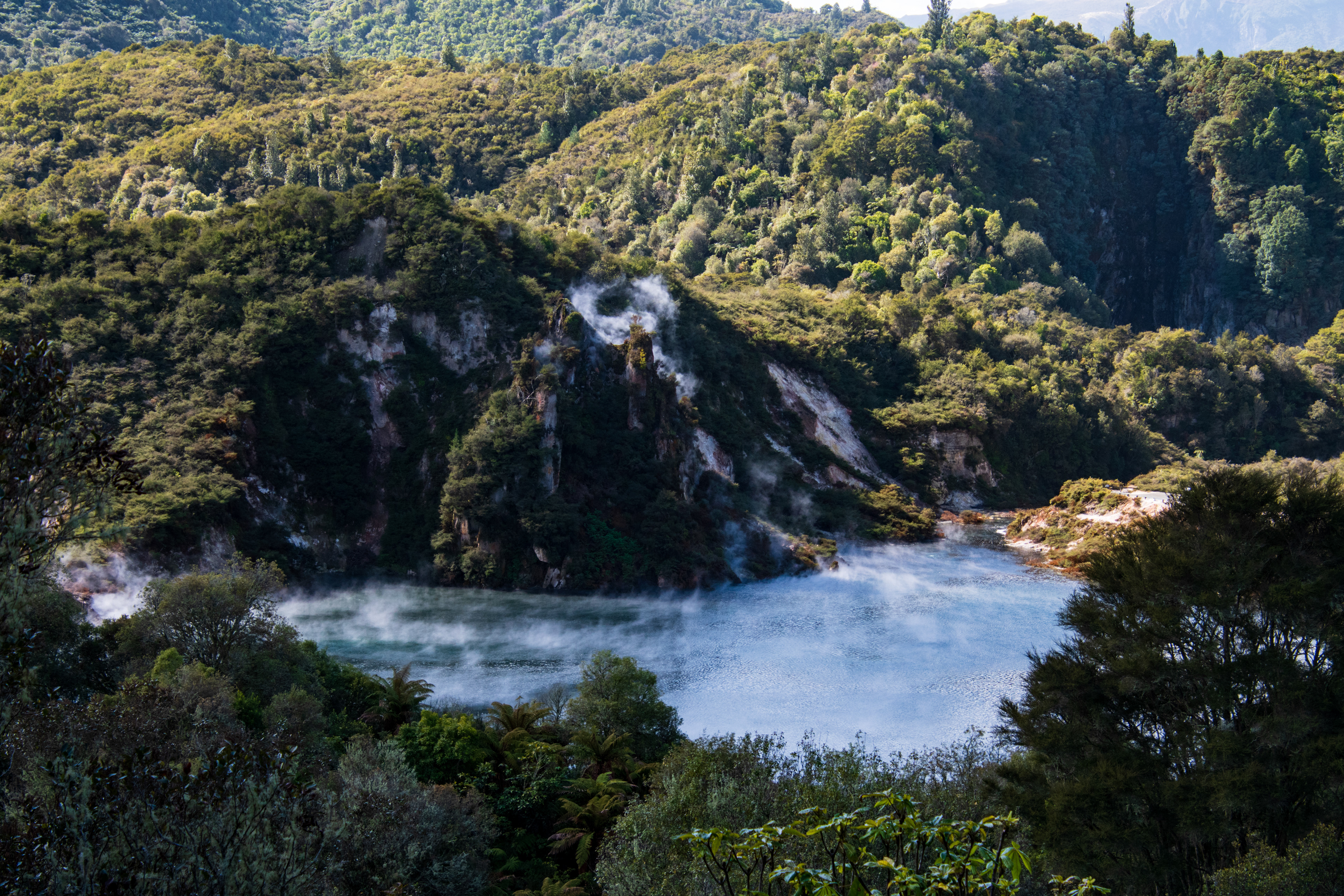
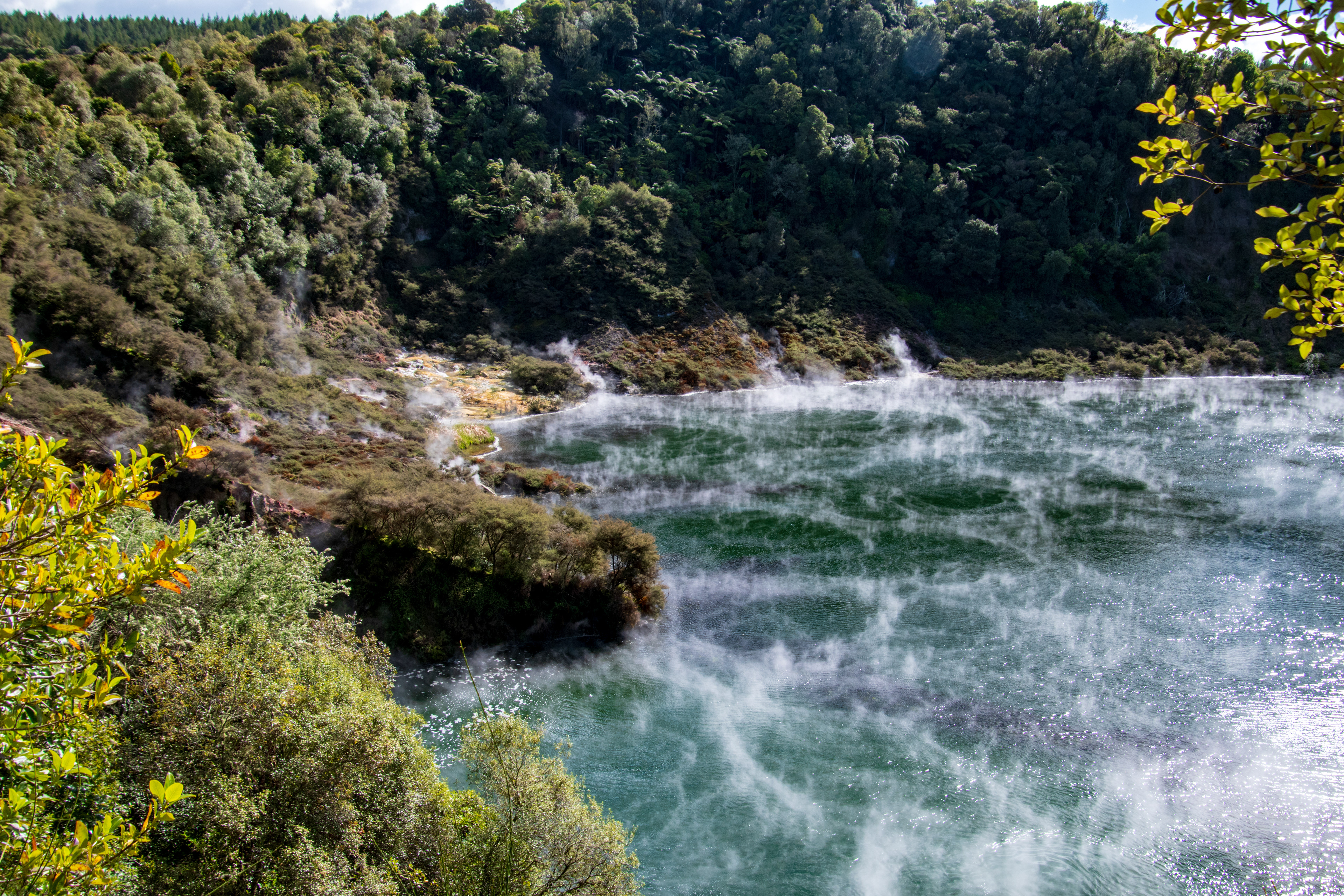
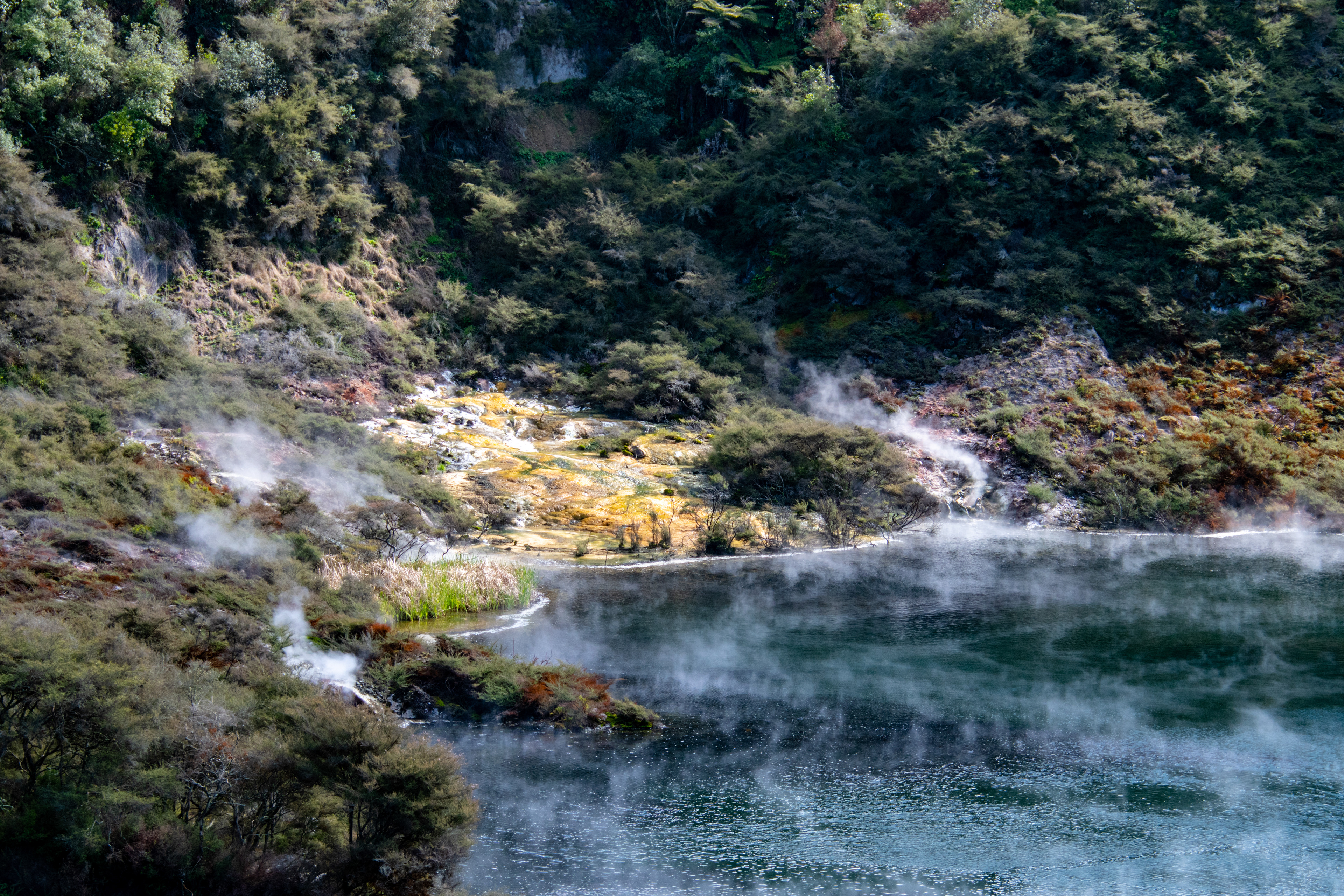
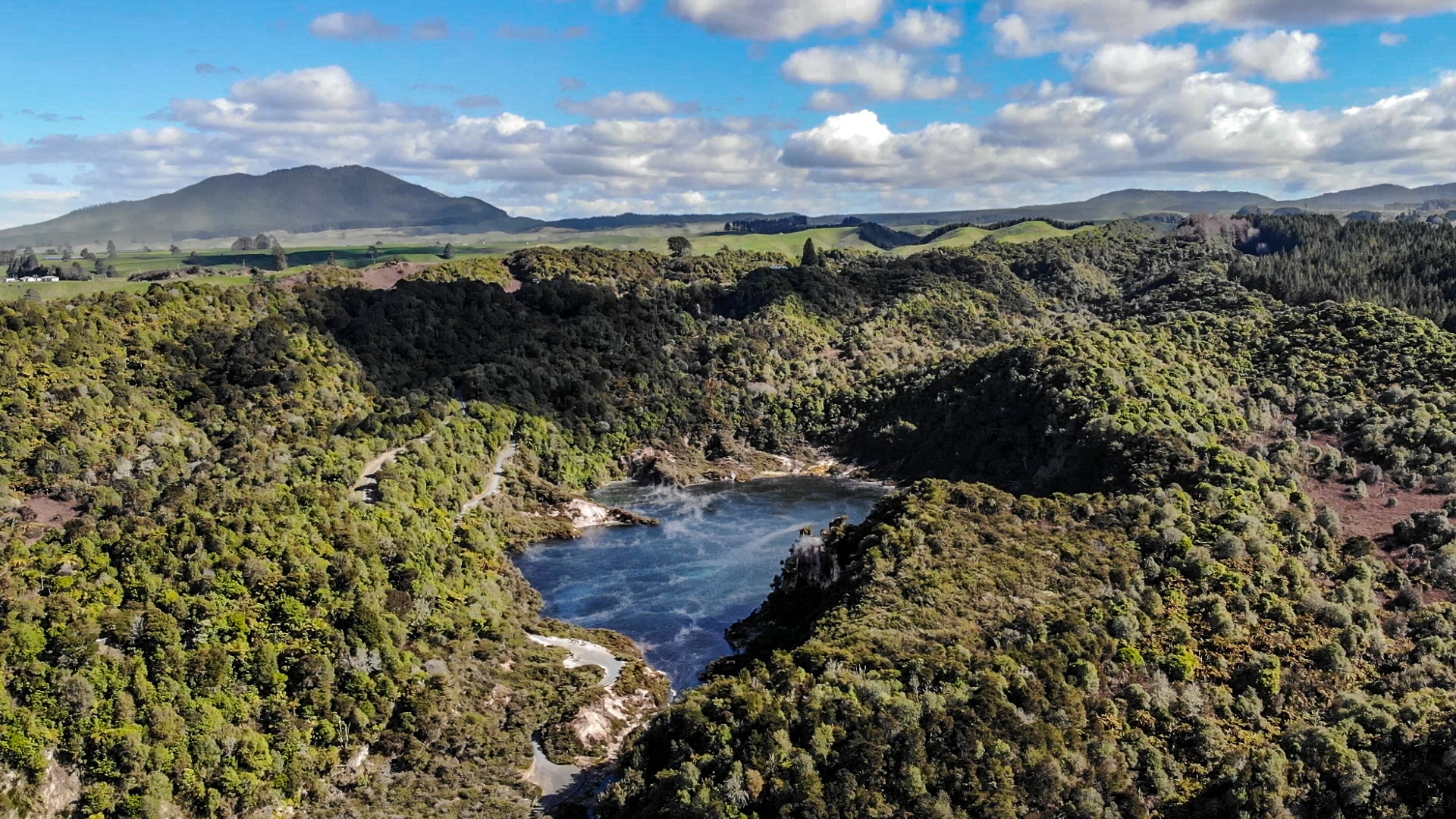
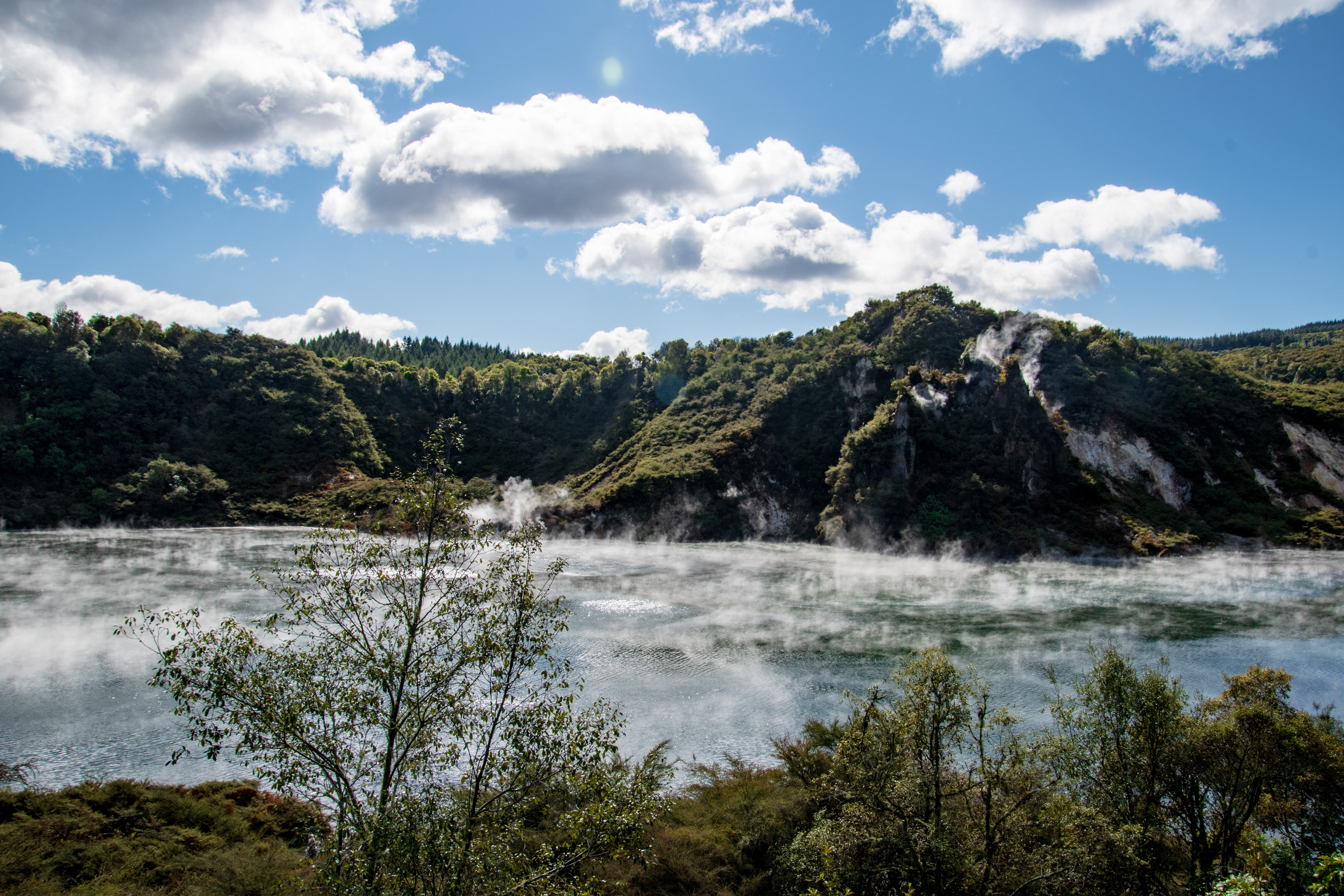
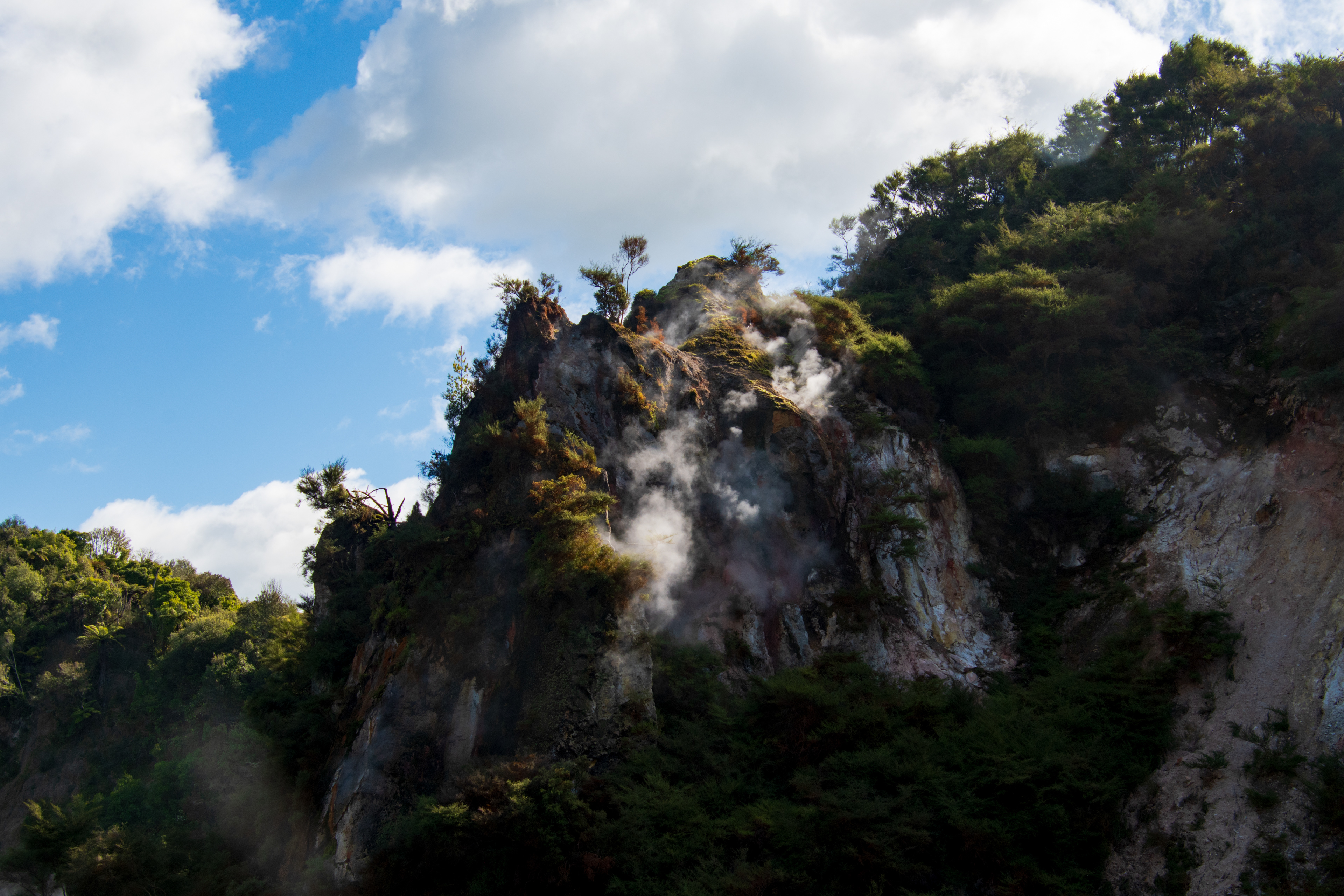
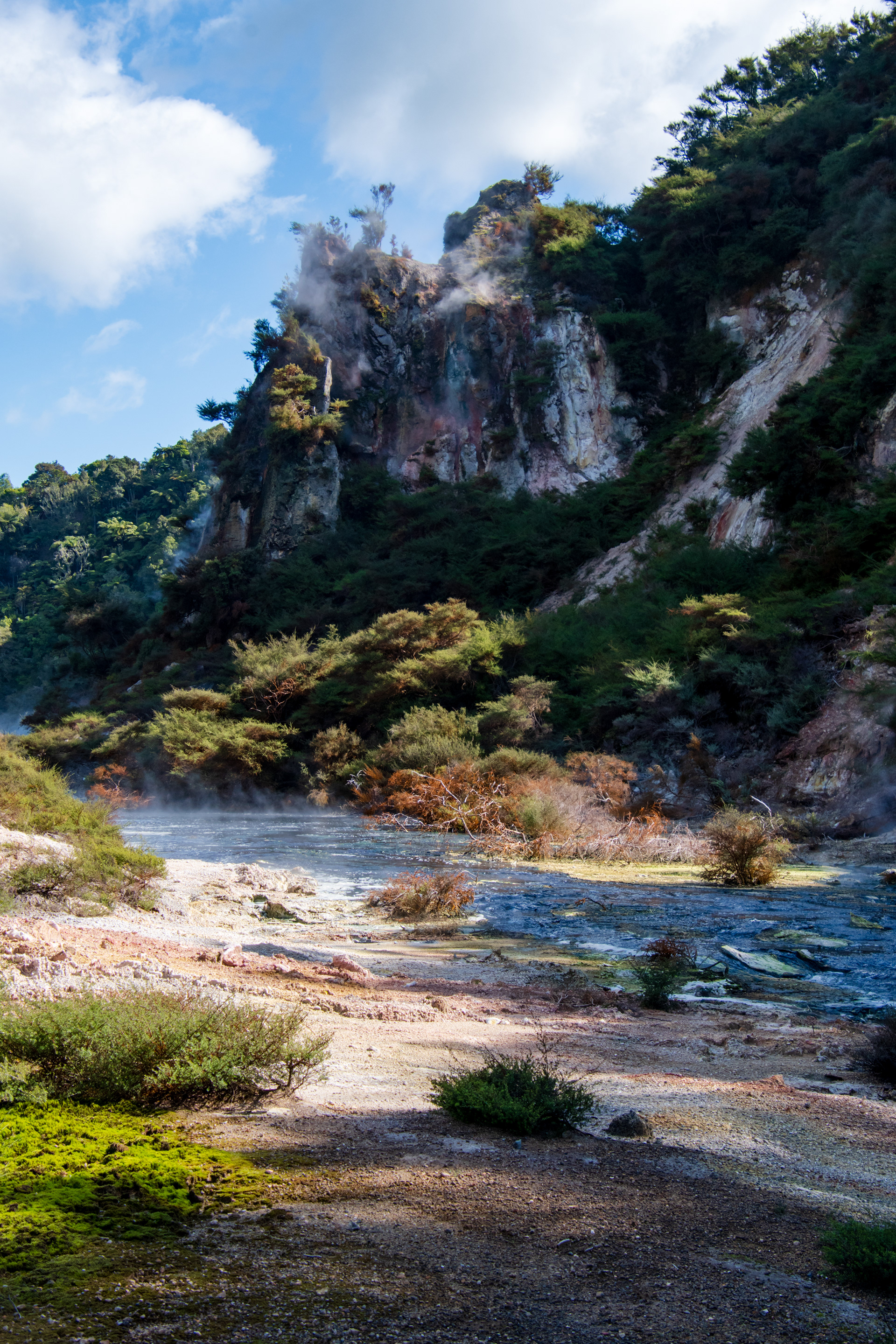
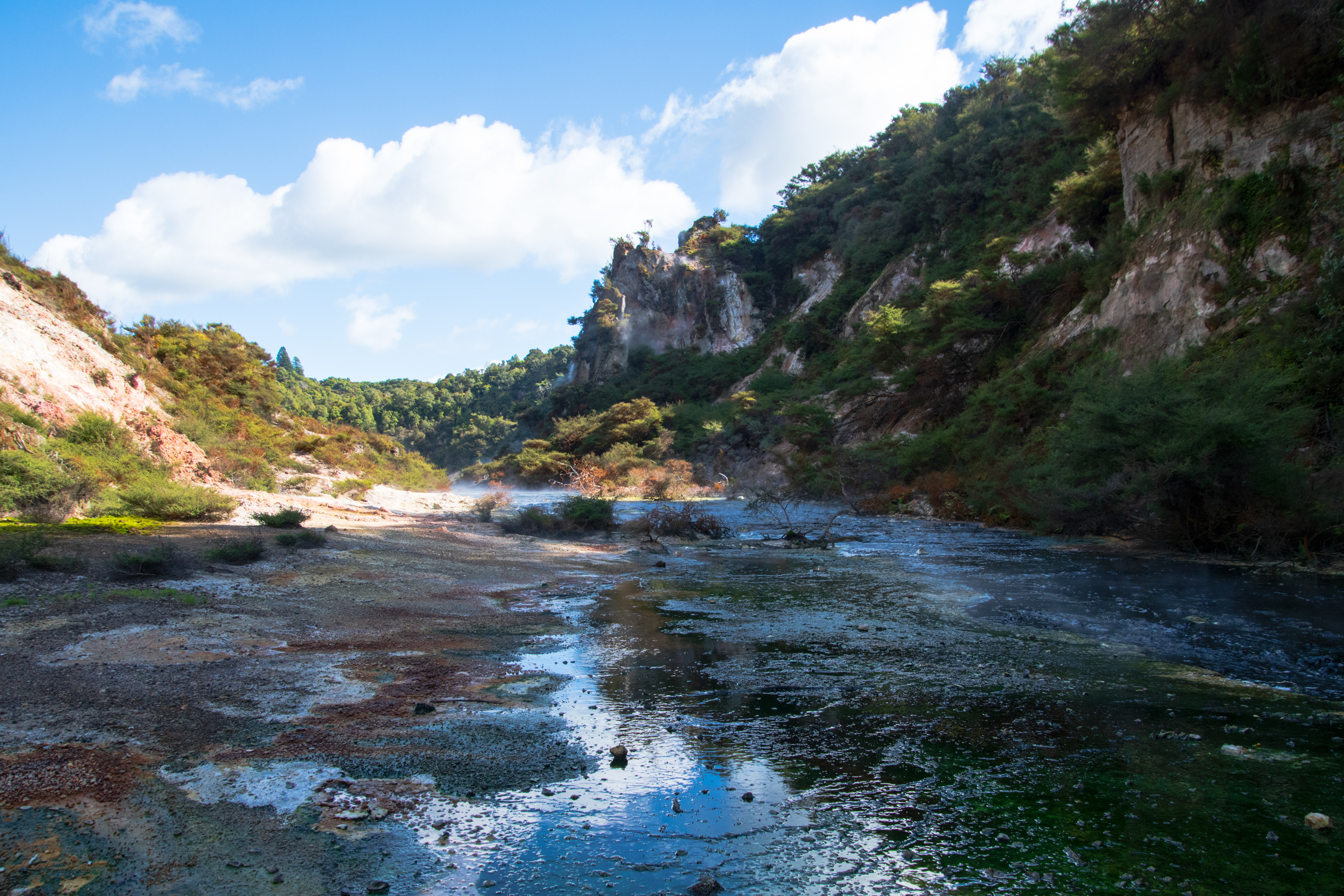
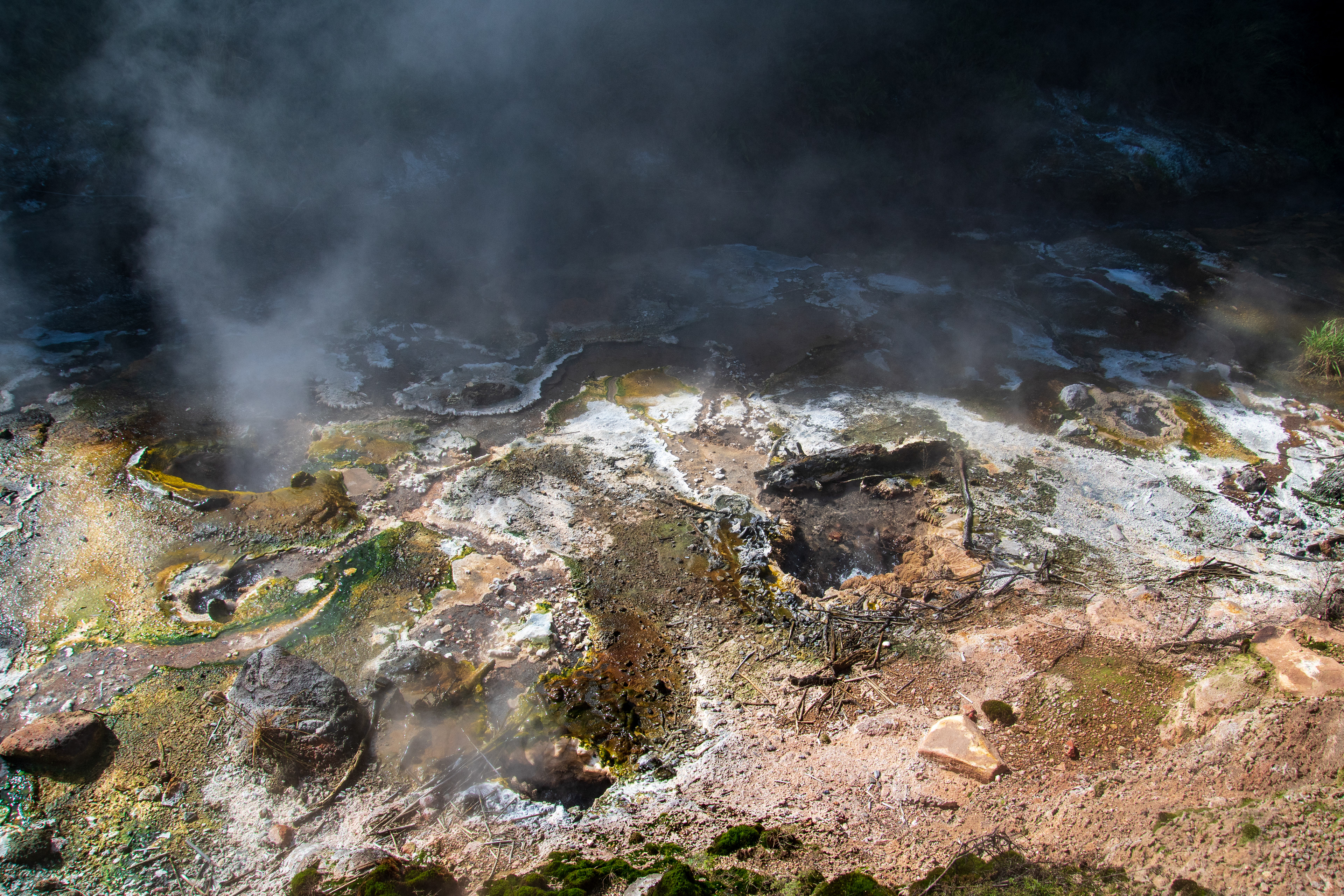
Bird's Nest Terrace
The picturesque Bird's Nest Terrace, is a delicate silica terrace with the small volcano-shaped Bird's Nest Spring atop continuously erupting near boiling-hot water about 1 m high. The terrace is covered in blue-green algae, which cannot survive in the hot stream of water running down from the spring, providing a colourful contrast of green and orange.
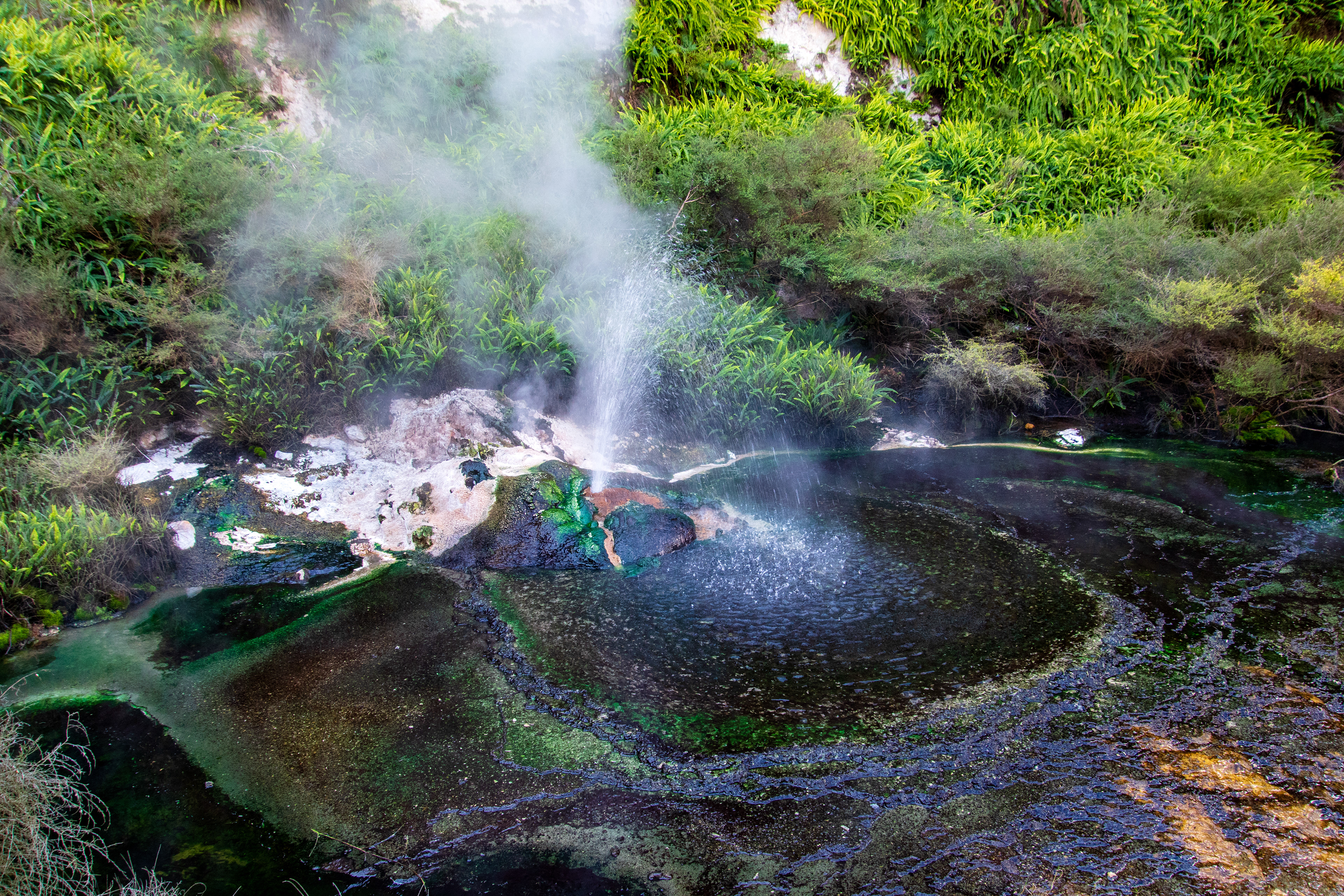
Inferno Crater
On the slope of Mt Haszard, is inferno Crater, filled with a striking pale blue lake of highly acidic water with a pH as low as 2.2. The crater was blasted into the side of the mountain as part of the 1886 Mount Tarawera eruption event and remains the site of the largest geyser-like feature in the world. Although the actual geyser plays at the bottom of the lake and cannot be seen, a handful of active fumaroles are visible on the shore and the cliff face behind the lake. The water level of this up-to-30-metre-deep lake follows a complicated rhythmic cycle that is interconnected with the nearby Frying Pan Lake. Mt. Haszard was named after school teacher Charles Haszard and members of his family who were killed during the Mount Tarawera eruption. The locally prominent small mountain contains the shallow Raupo Pond Crater, the 56-metre-deep, steep-sided Fairy Crater, and Black Crater.

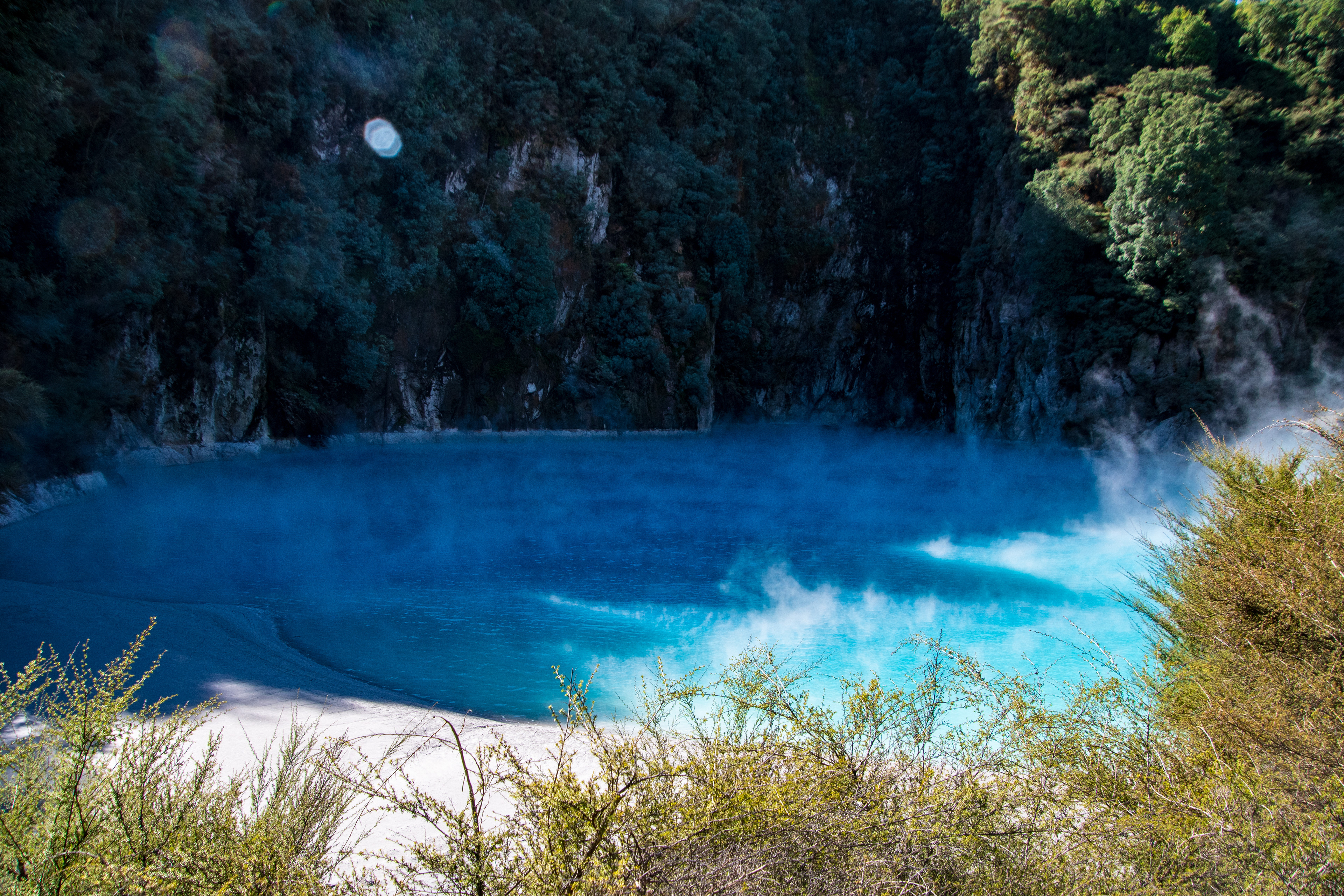

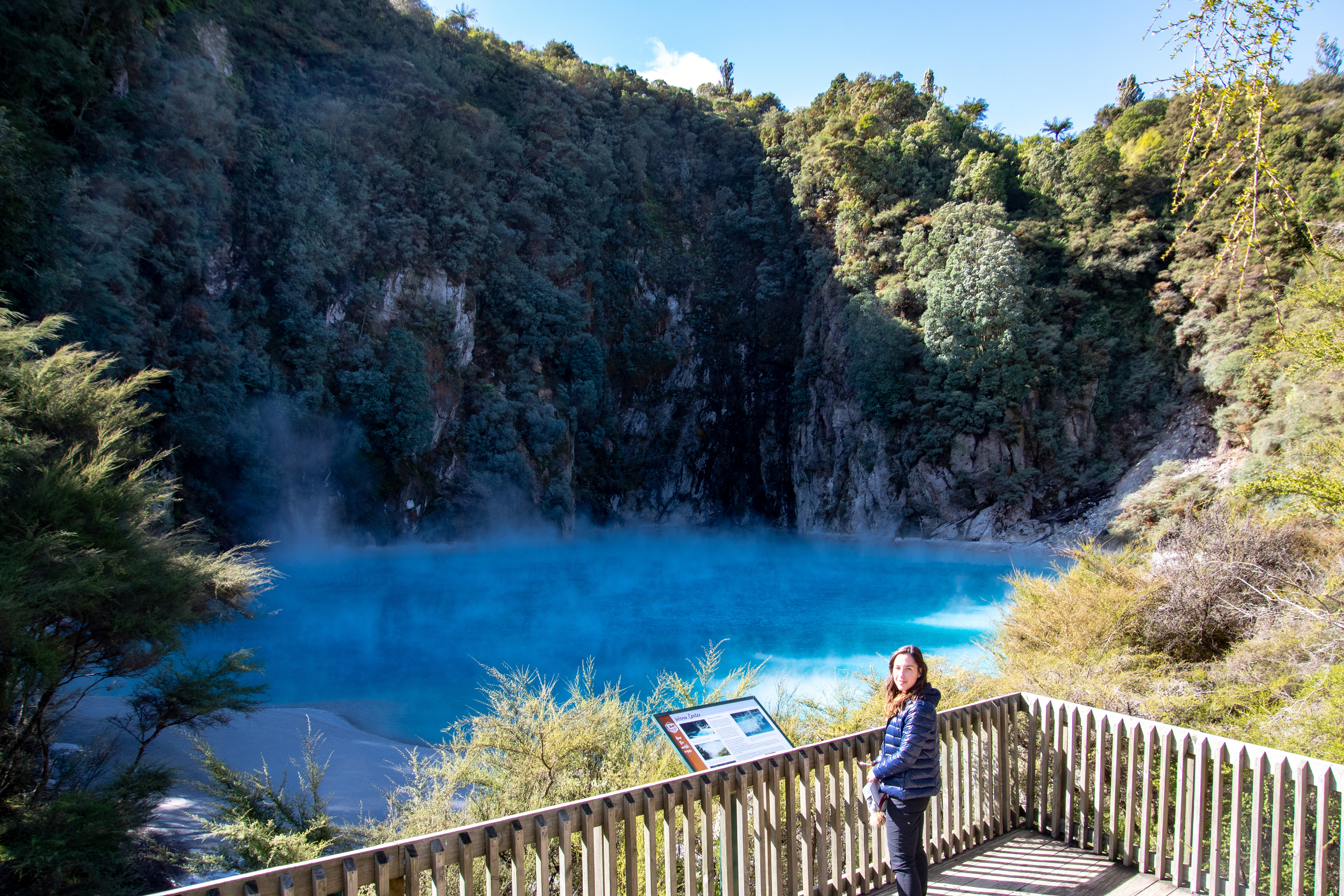

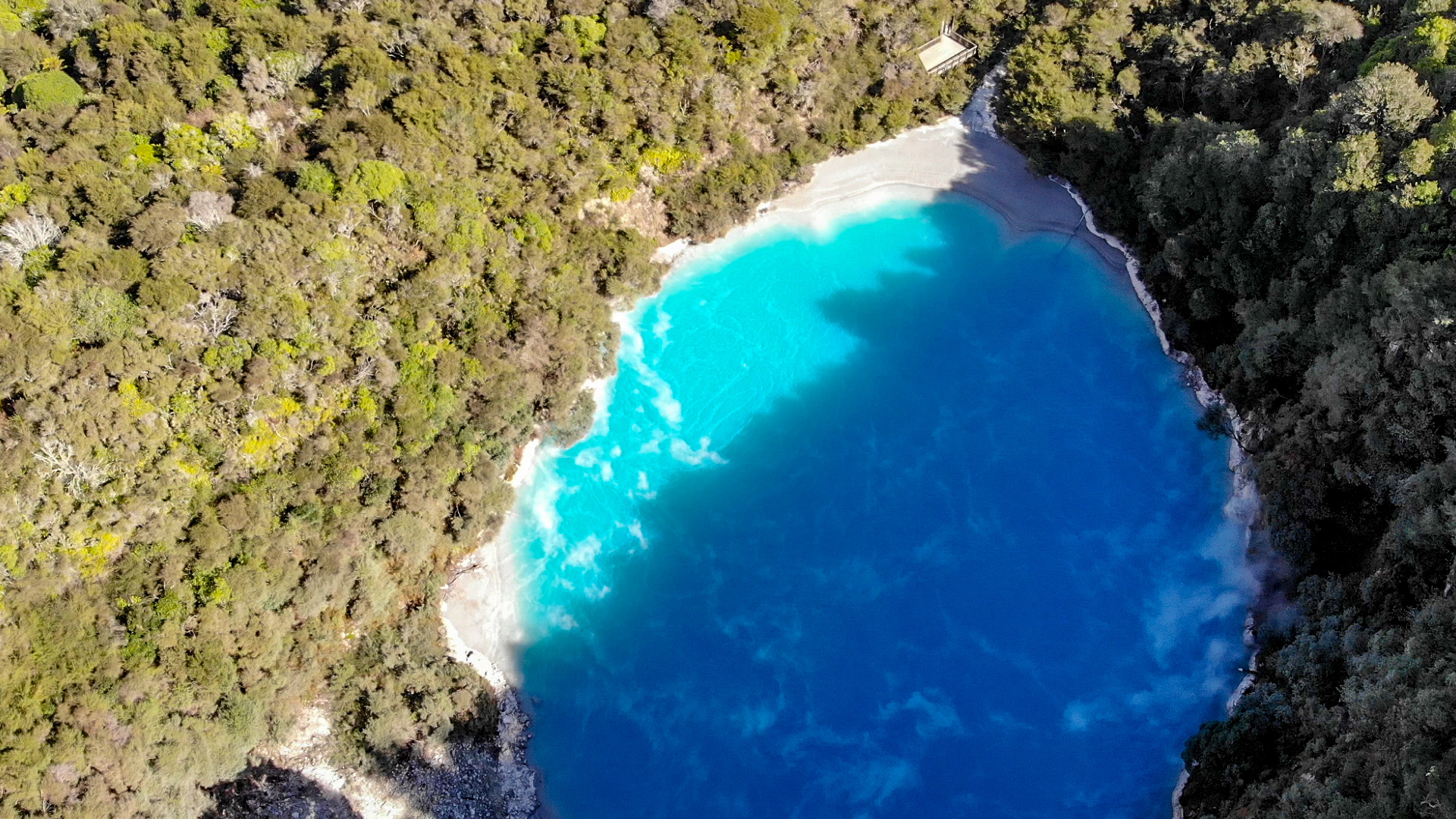
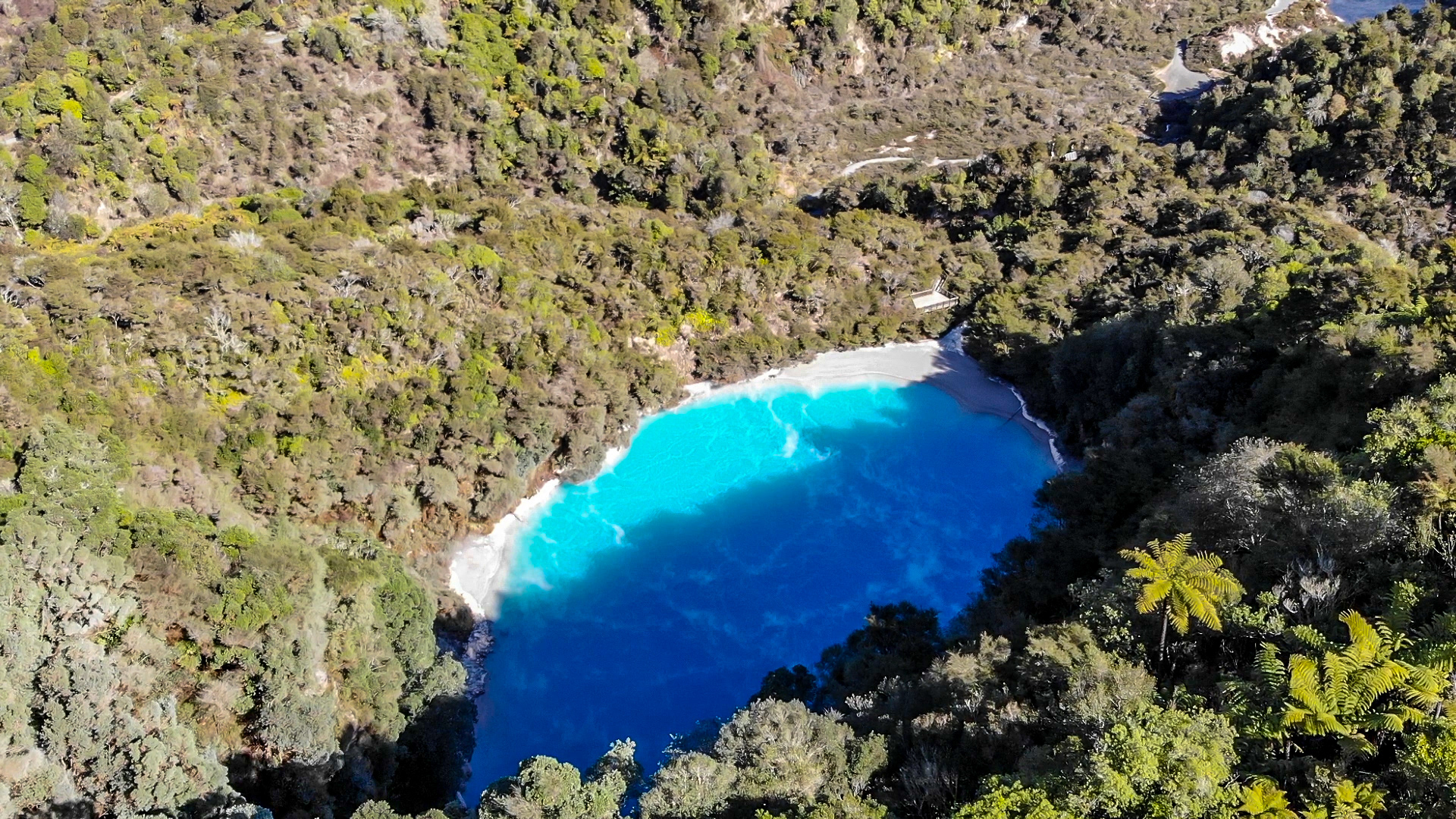
Waimangu Stream from Frying Pan Lake
The margins of Waimangu Stream from Frying Pan Lake to east of Inferno Crater are covered with delicate silica formations and colourful mineral deposits containing traces of arsenic, molybdenum, antimony, and tungsten, while the stream bed is home to blue-green algae and filamentous colonies of the photosynthetic bacterium chloroflexus aurantiacus in a range of colours from bright green to orange.

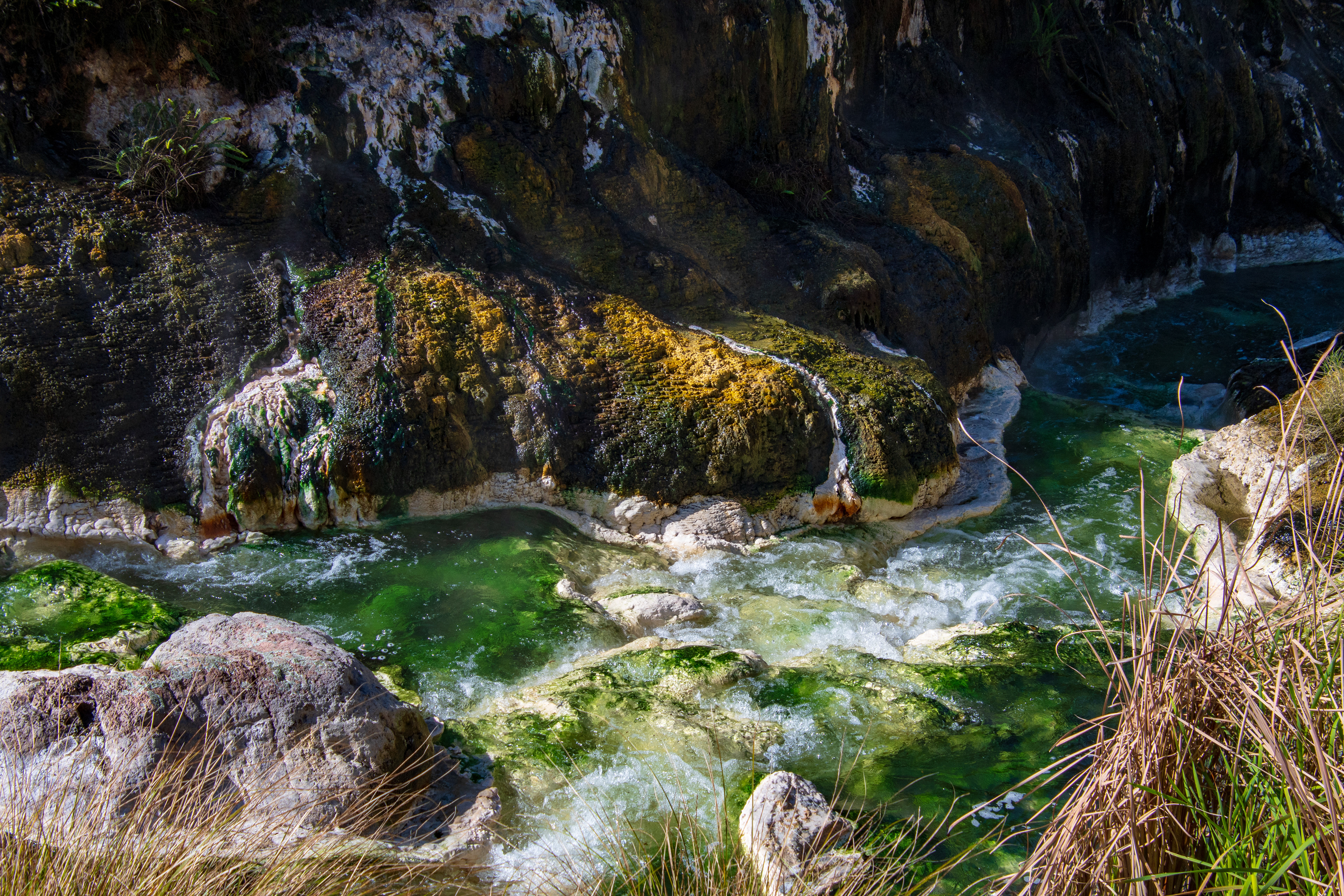
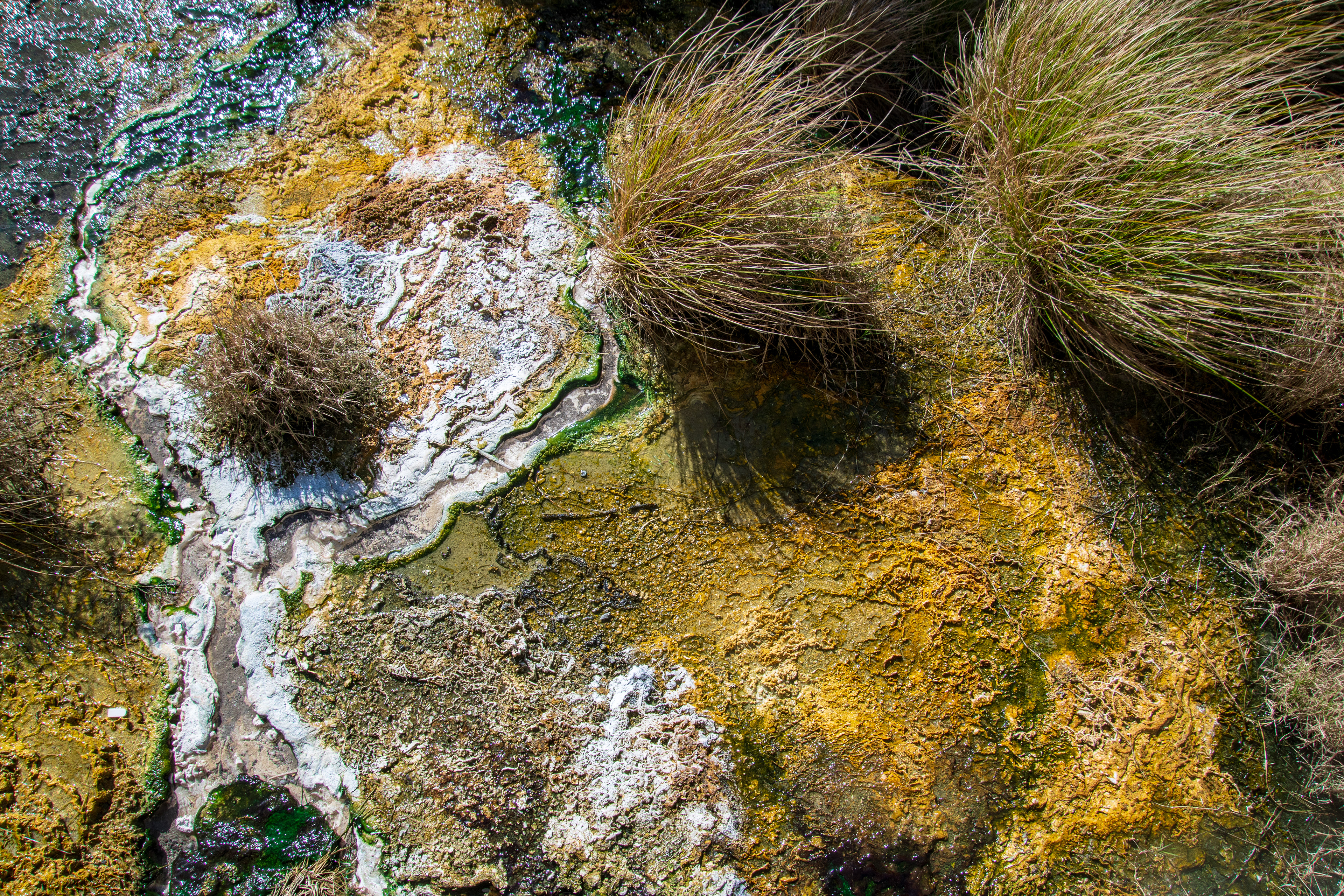
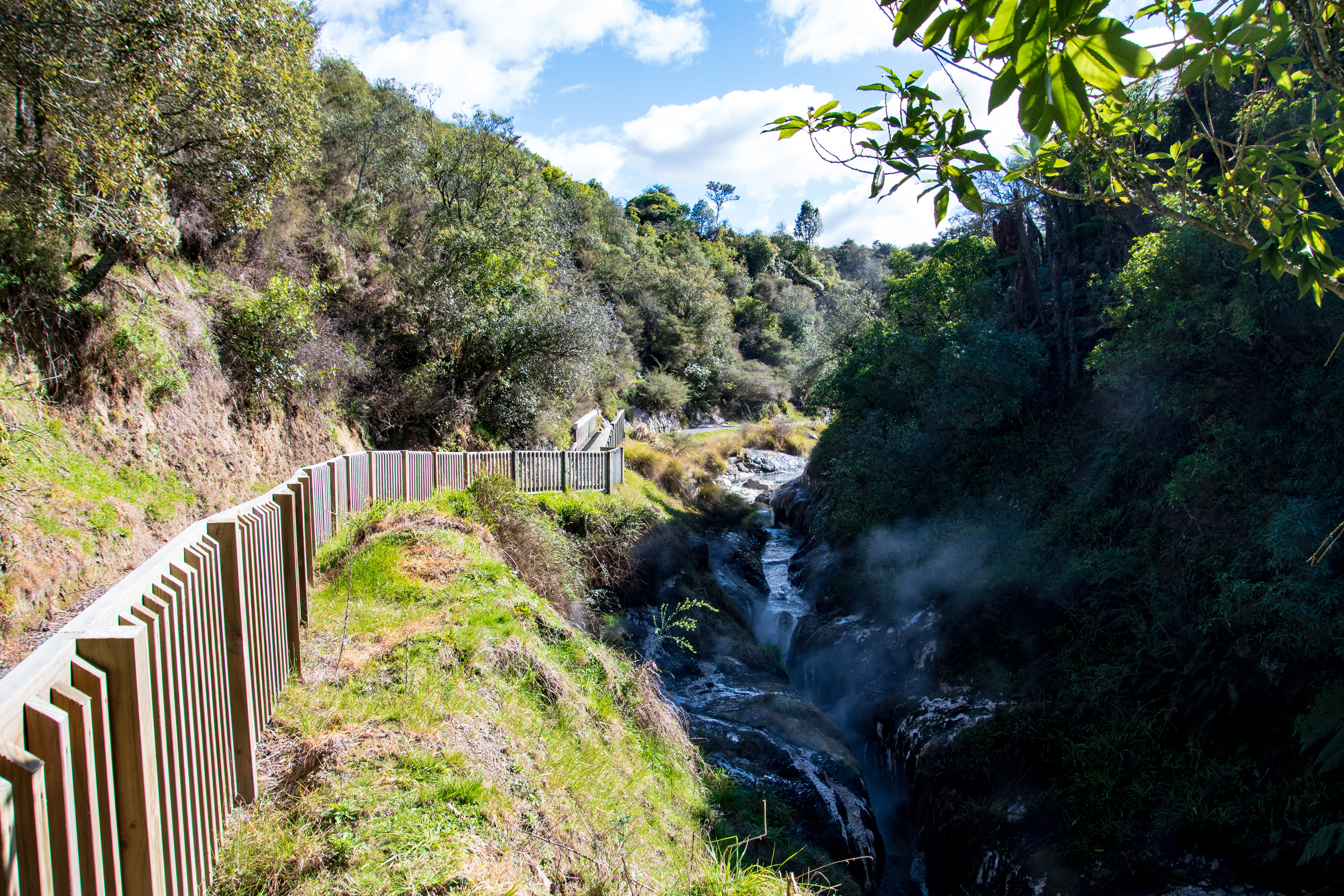
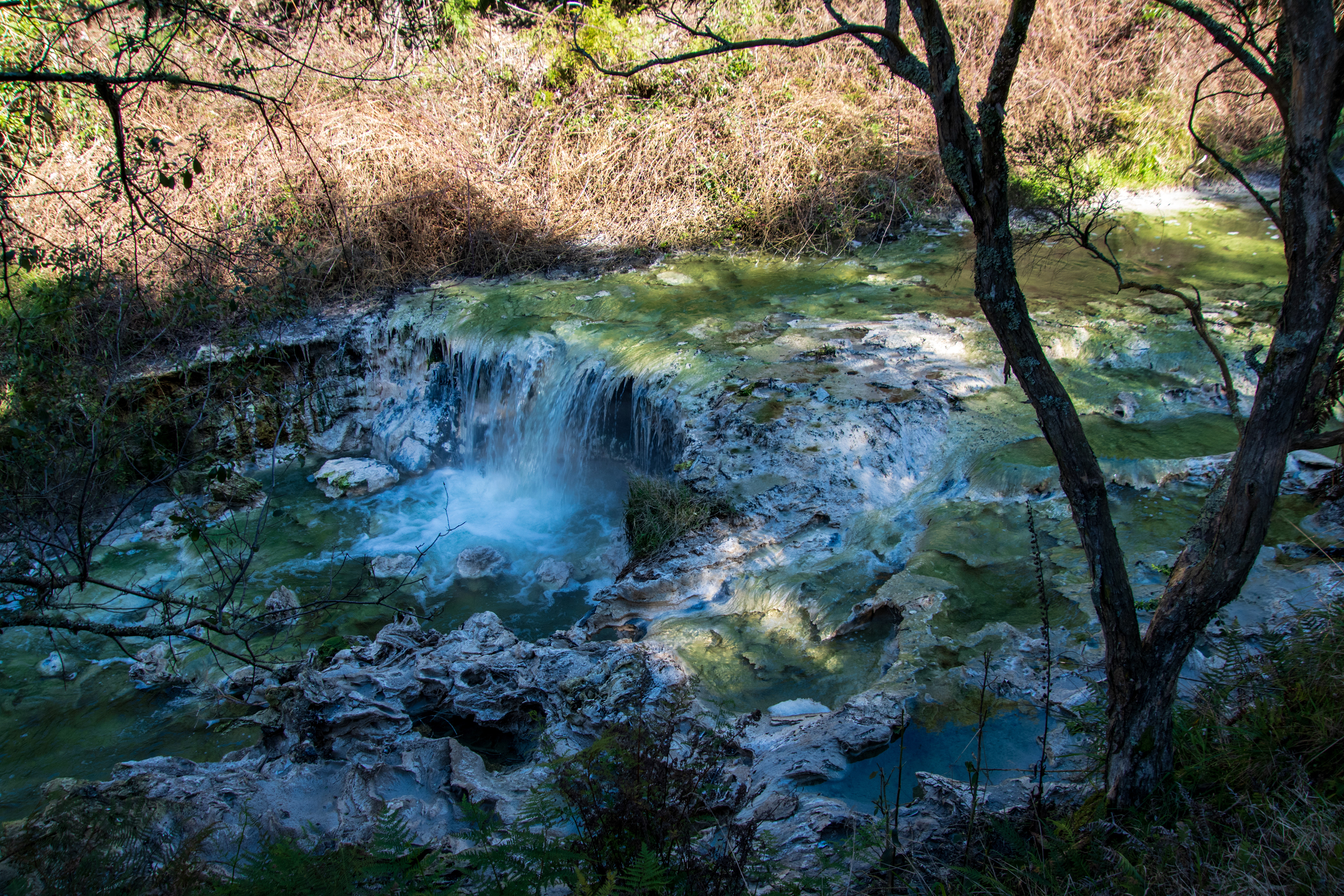
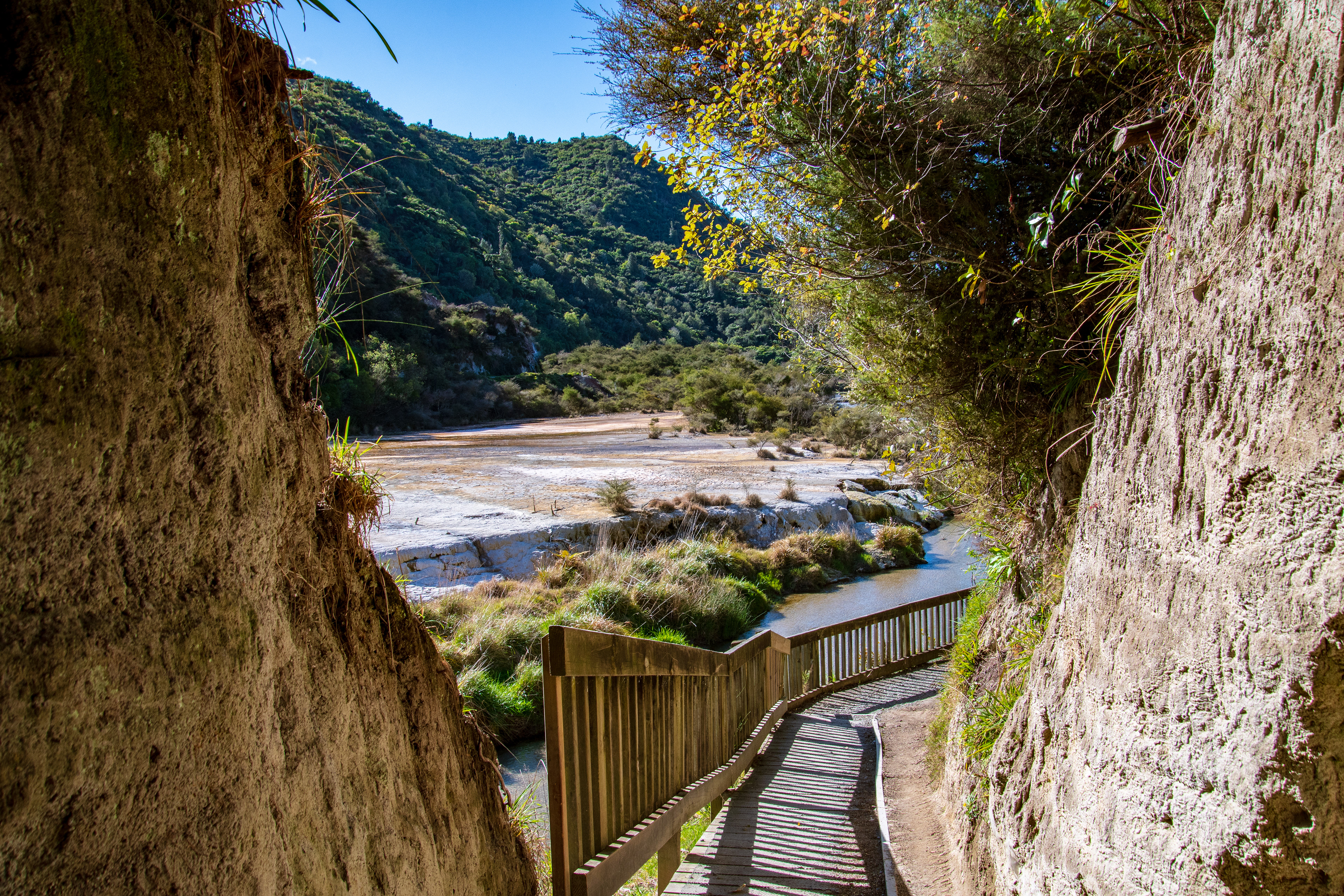
Marble Terrace
Further geothermal features along the lower part of the valley include the Marble Terrace, featuring an expansive sinter flat and buttresses composed of similar material to the Pink and White Terraces, and the multi-coloured Warbrick Terrace. The white and orange silica deposits of the Marble Terrace are fed by the hot spring in Iodine Pool, with small waves of water overflowing the pool at around 97 °C temperature and washing over the terrace. Iodine Pool is named after the brown colouring of the rocks and bank around it.
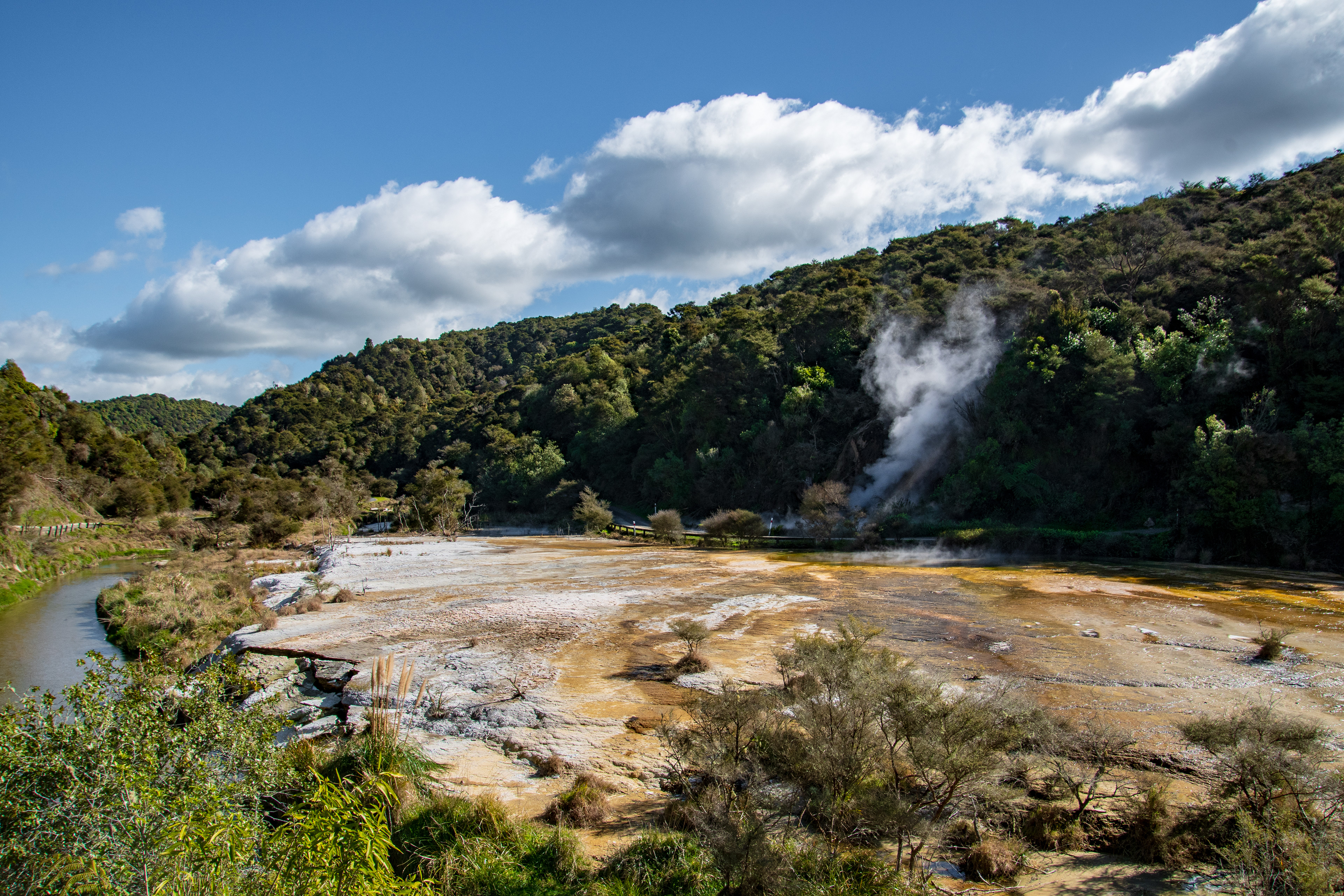
Warbrick Terrace and it's blue pool
Warbrick Terrace at the end of the Rift Valley is named after members of the Warbrick family, who were involved in guiding tours in the area in the two decades following the 1886 Mount Tarawera eruption. The terrace is a set of fast-growing orange and white silica platforms similar to Marble Terrace. From the 1930s to the 1950s, a small geyser played on the terrace. The area in this open-sided crater features several small clearly visible hot springs and a prominent aggregation of layers forming a dam around a pale blue pool of silica-rich water. The dam started growing in the 1990s by sinter deposition that is assisted by the growth of algae and encloses an ever-deepening pond of water behind it. The pond drains from time to time, revealing the delicate silica formations and edges
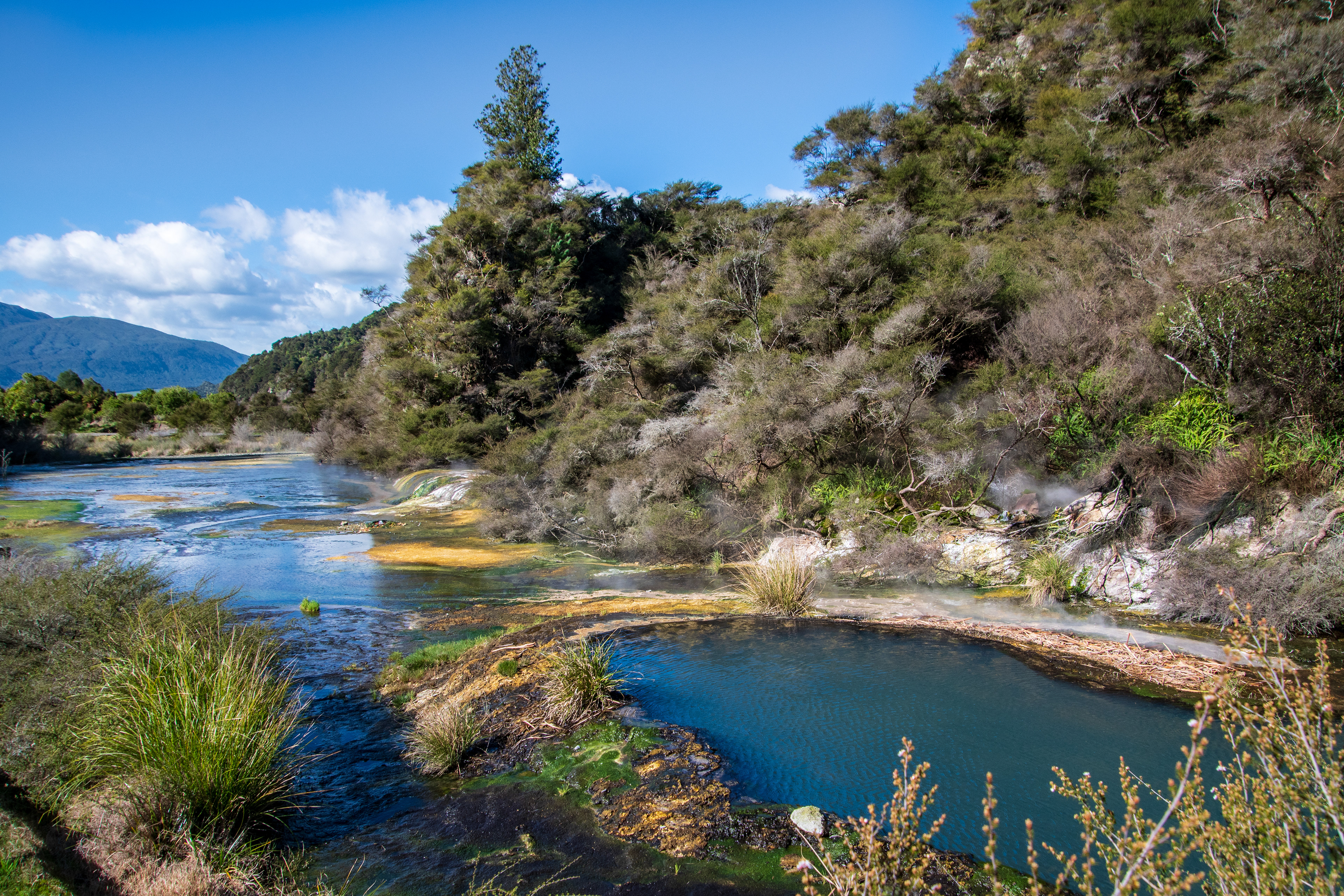
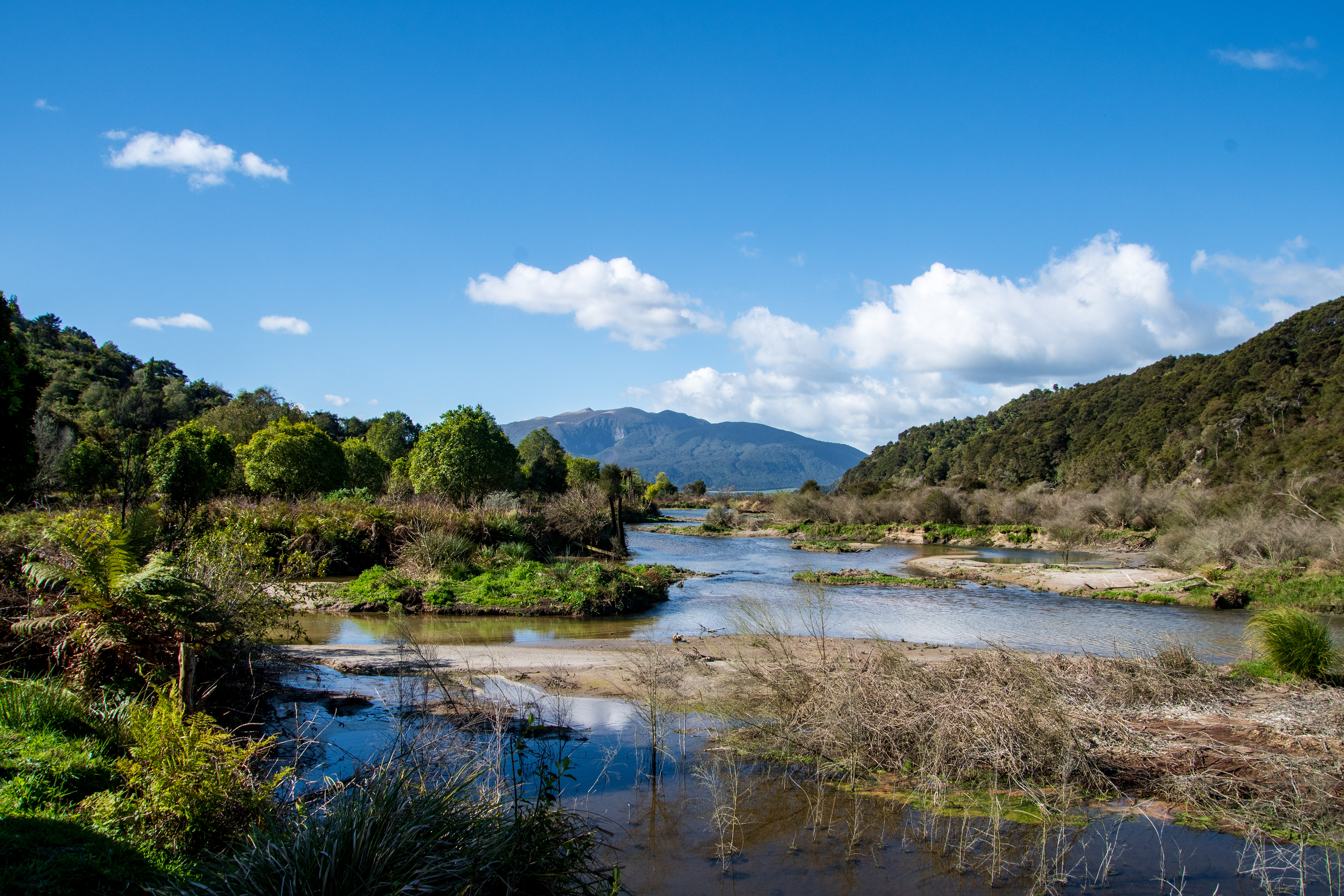
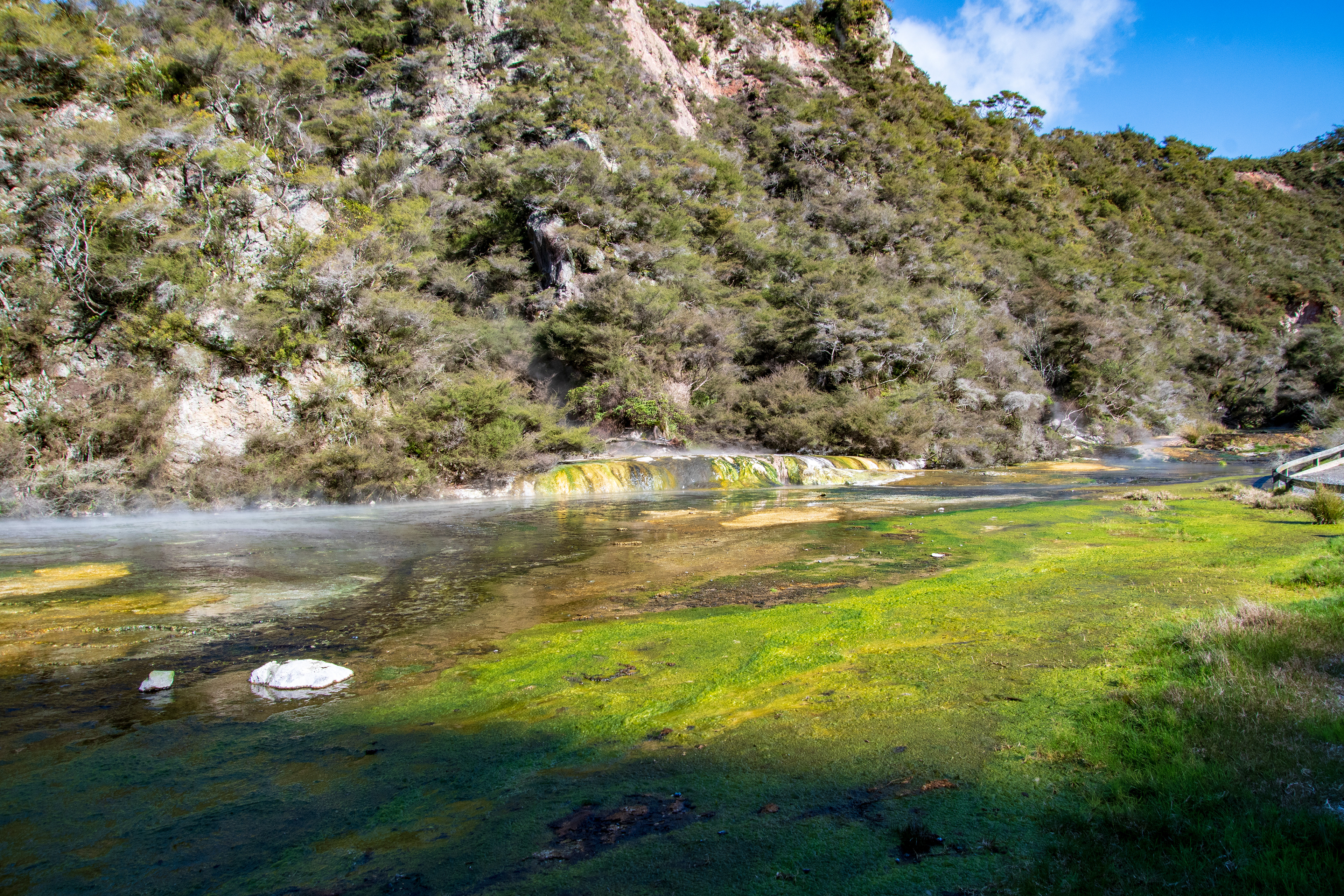
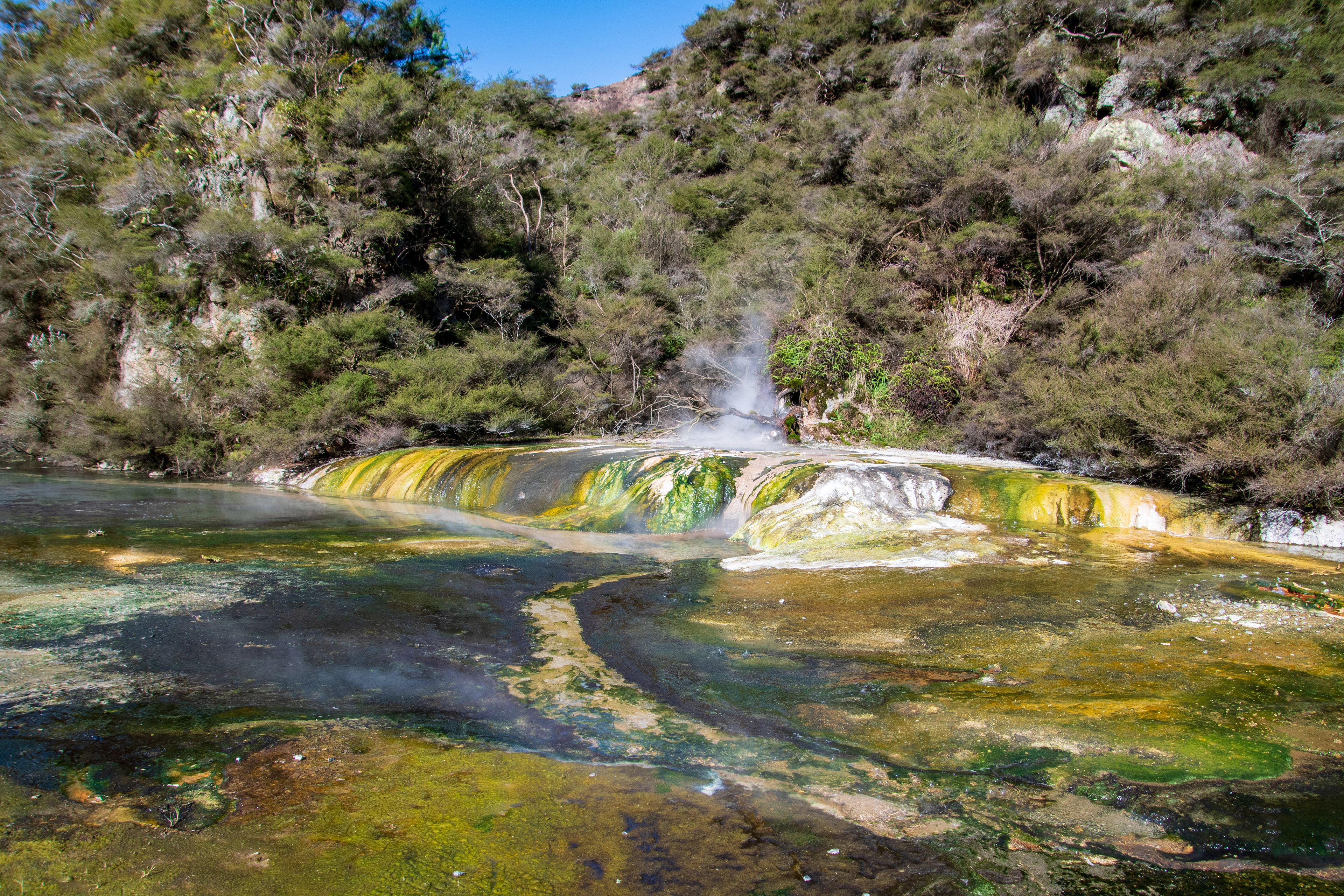
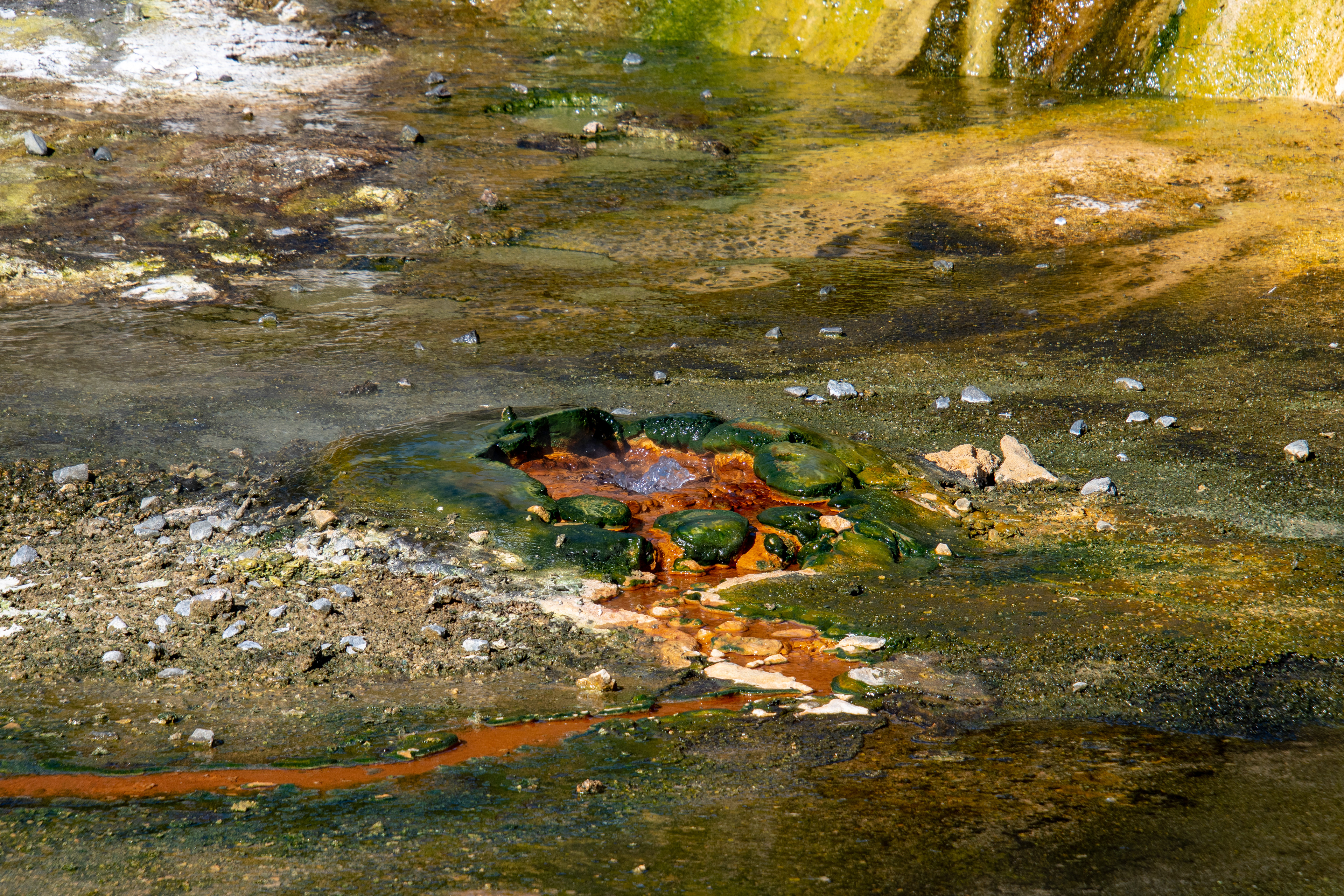
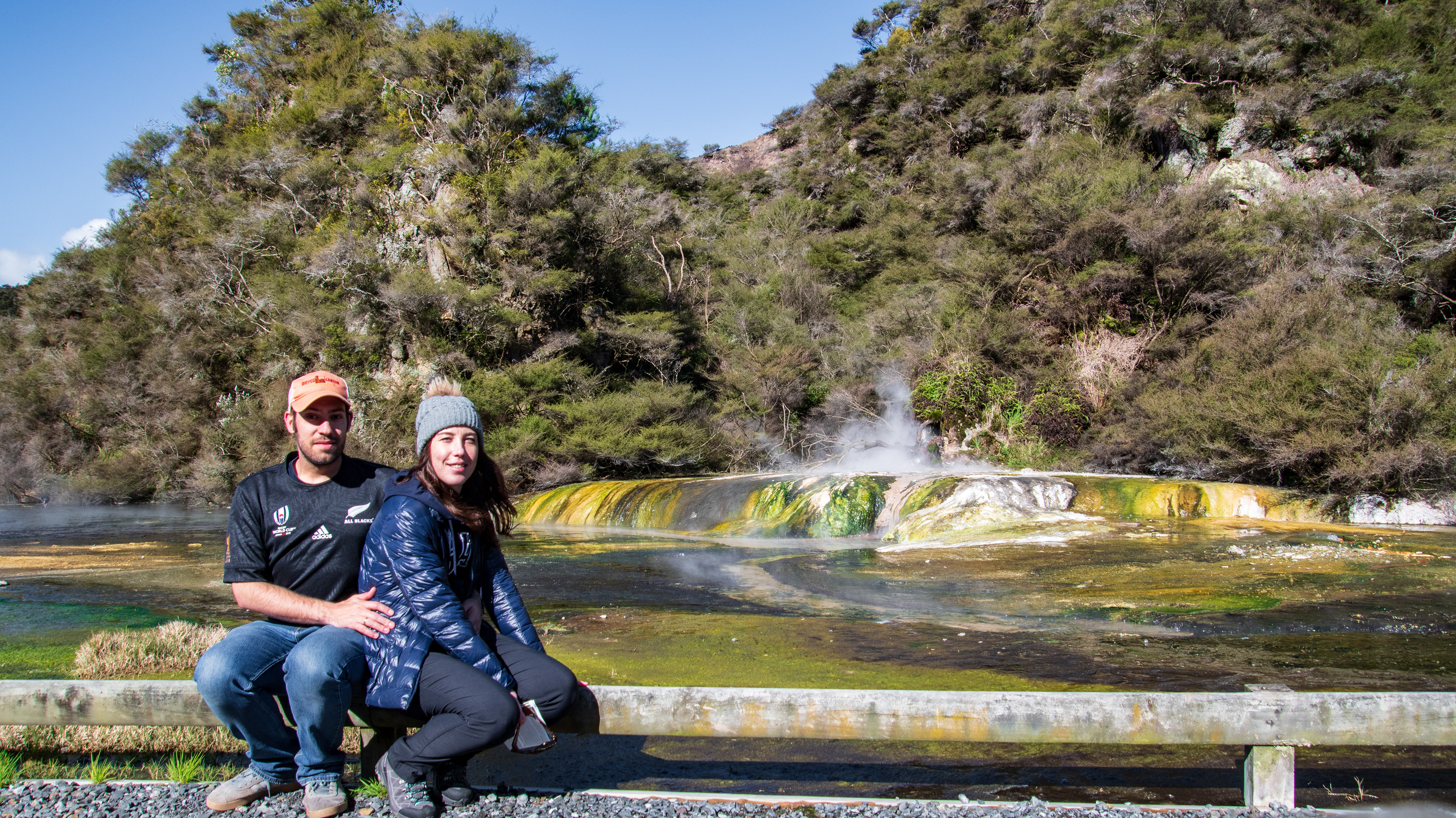
Te Puia, Incredible Earth Forces
You will encounter bubbling mud, pools of boiling water still used for cooking, and stunning geysers. The Pōhutu geyser is the star of the show.

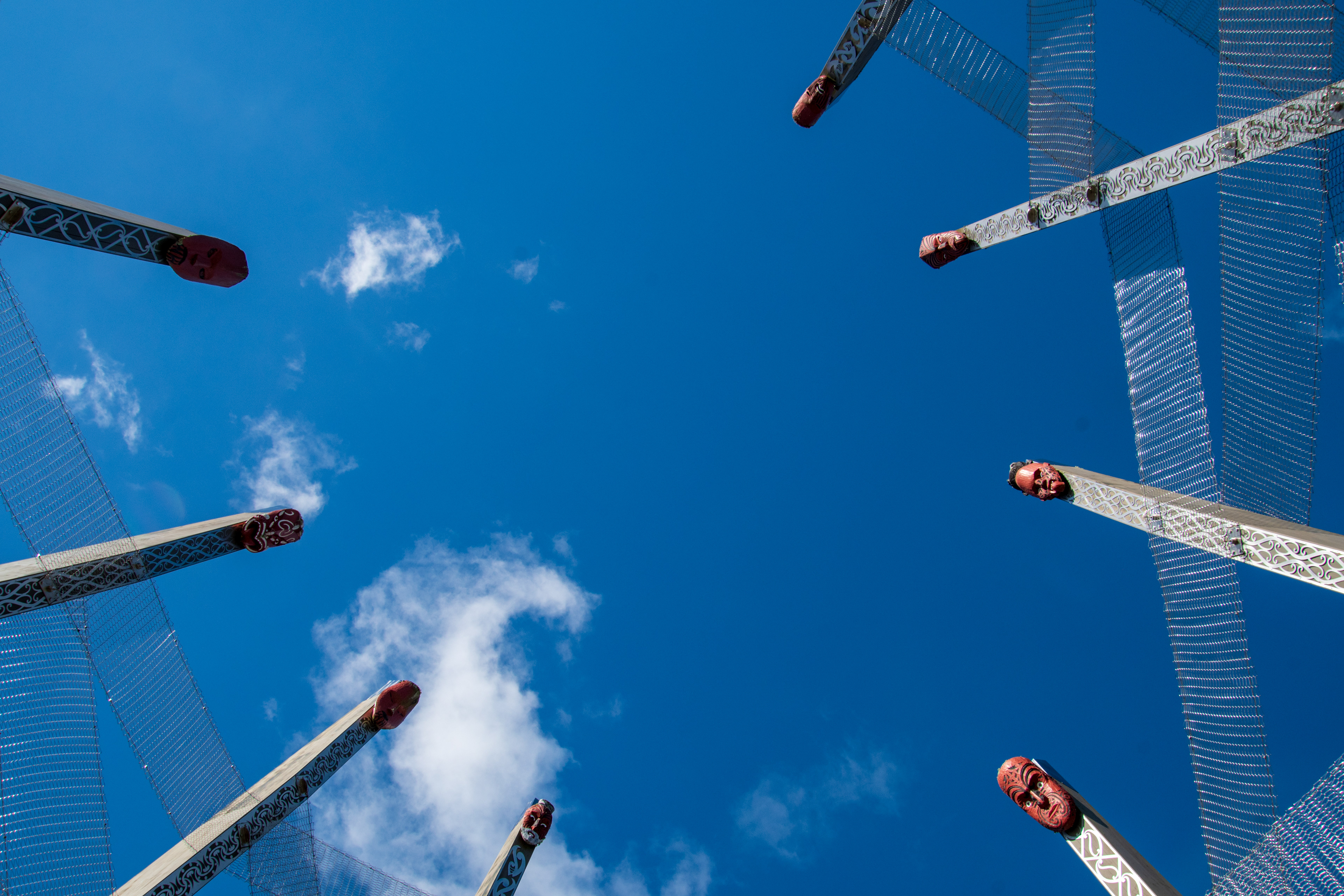
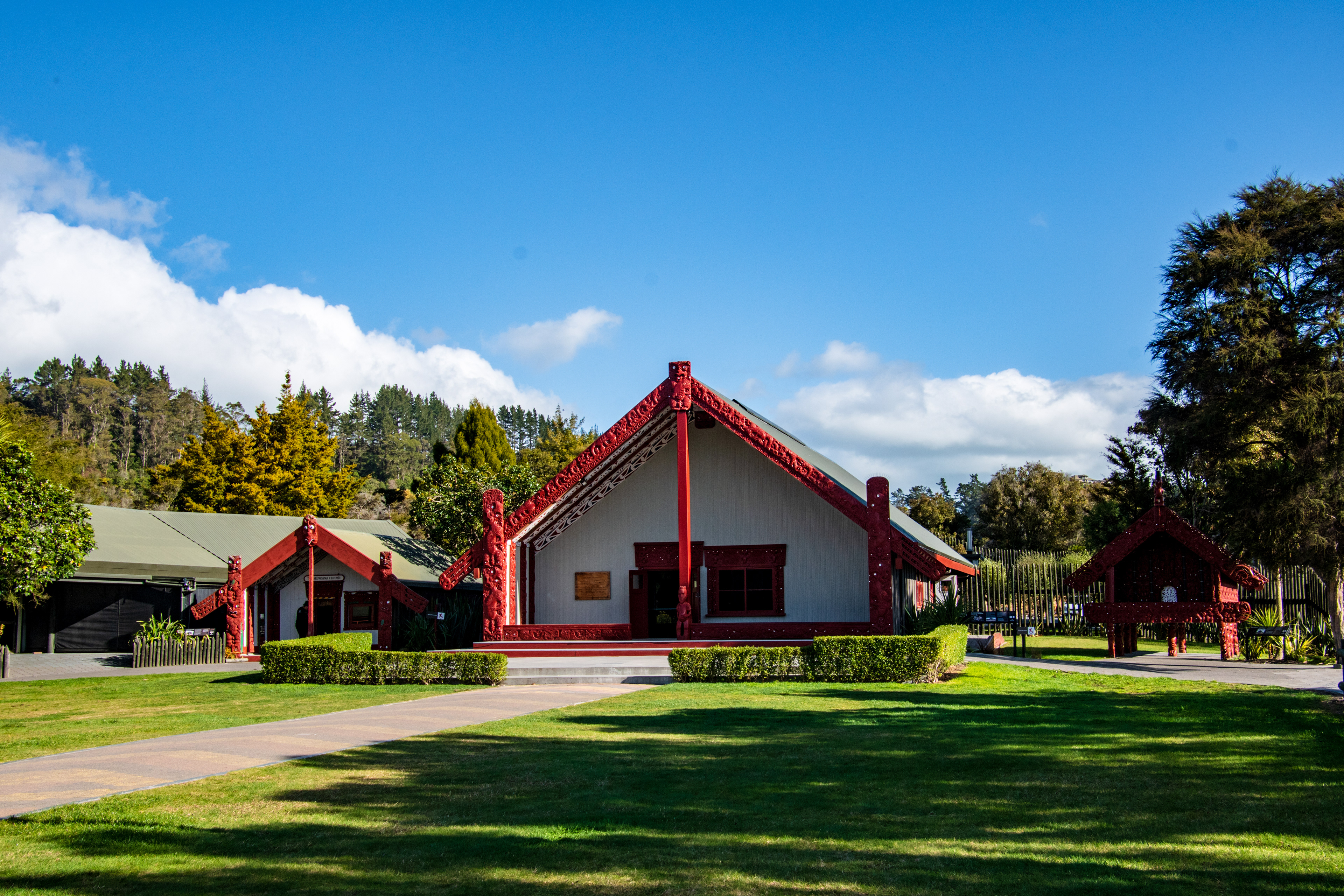

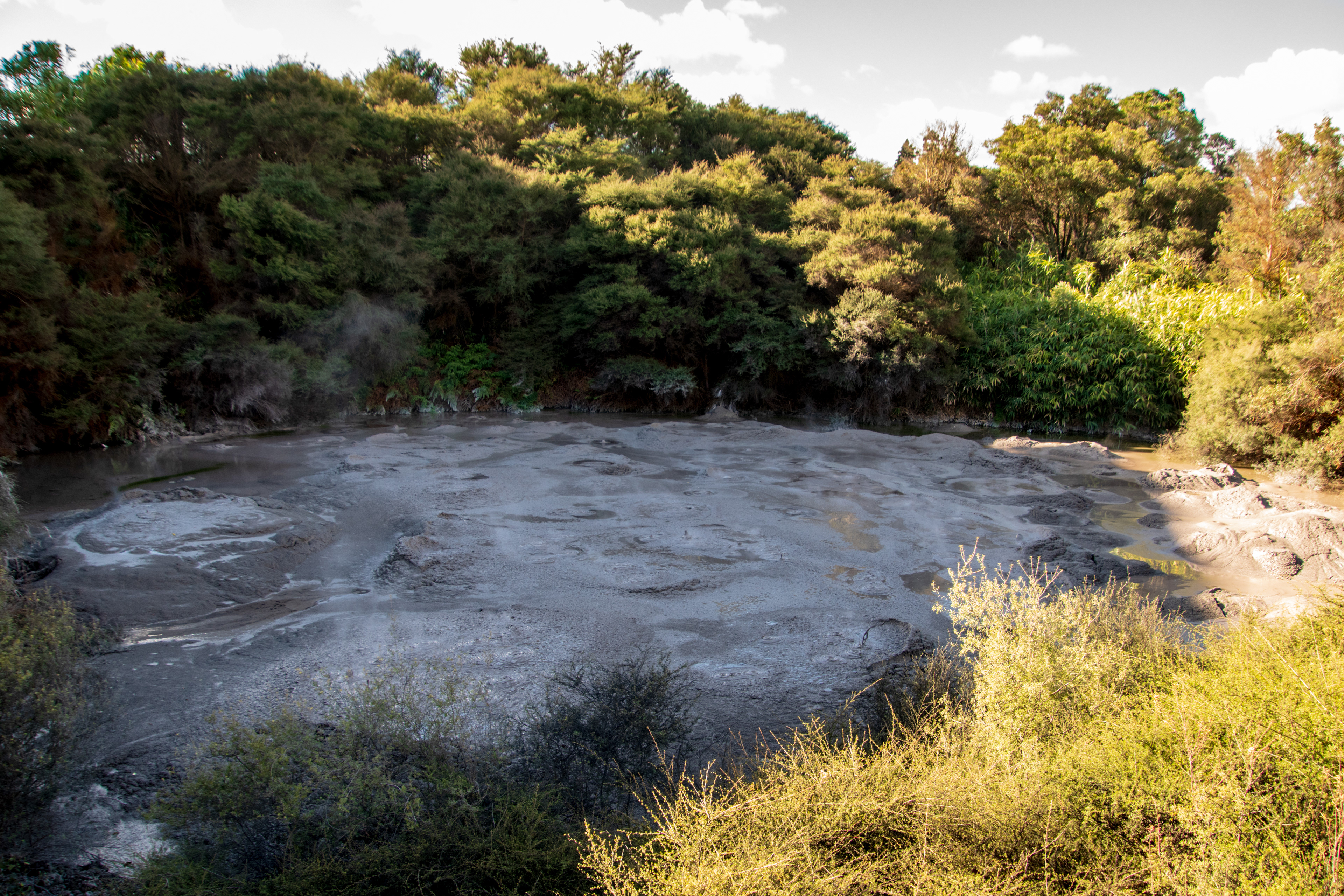
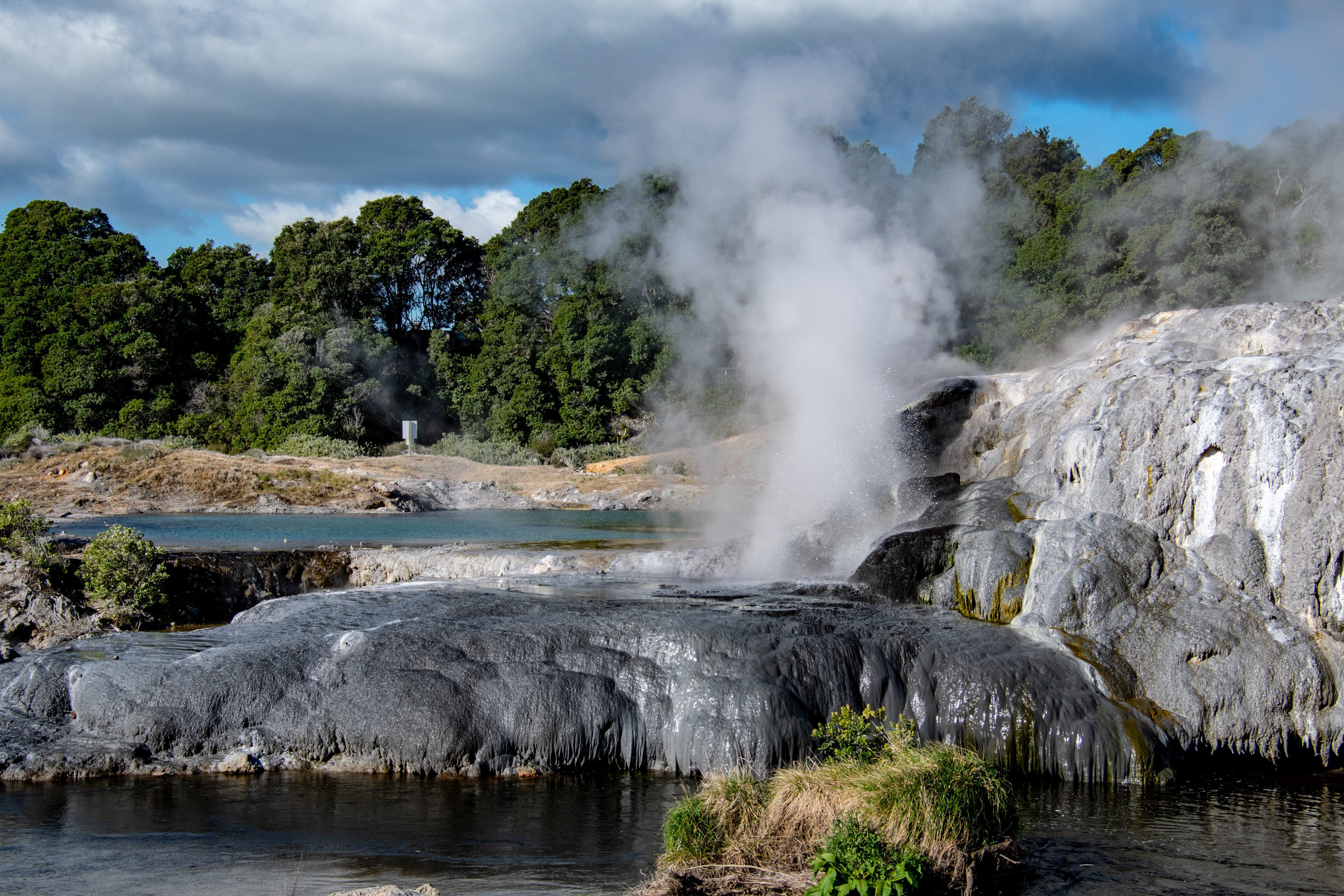
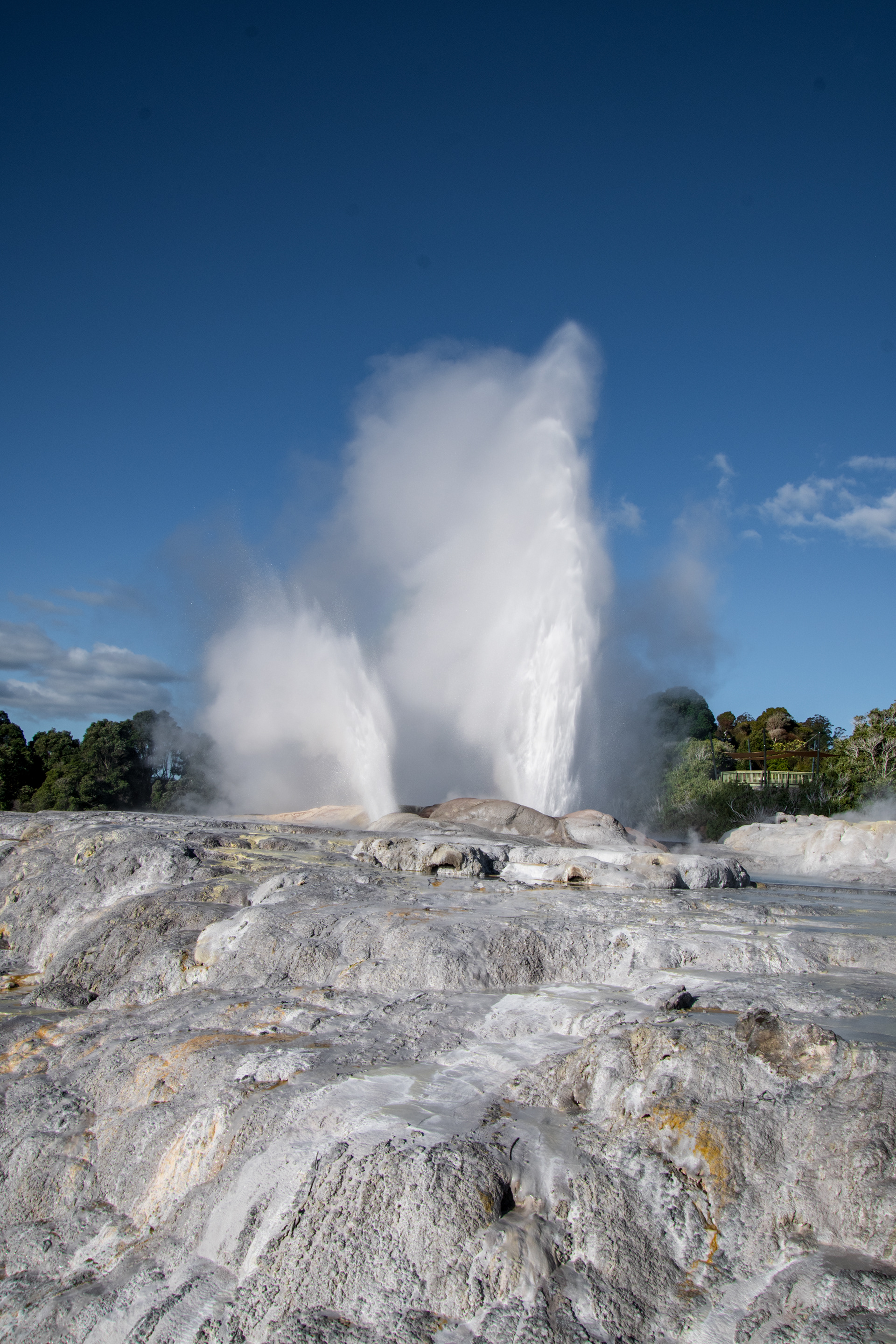
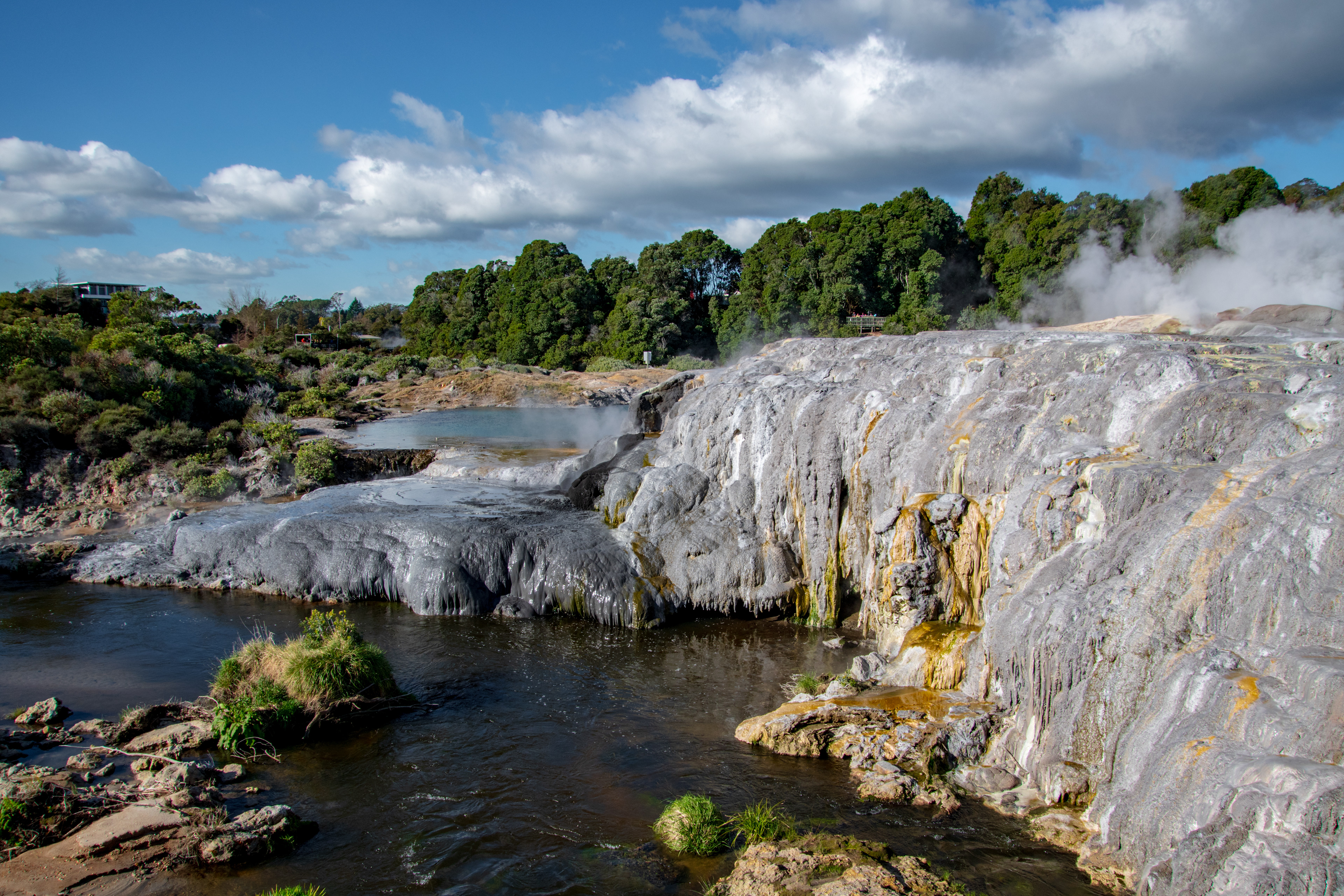
Pohutu Geyser
Pōhutu (‘poor-hoo-too’) is the largest active geyser in the southern hemisphere. She erupts once or twice every hour and sometimes reaches heights of 30 metres (100 feet). Pōhutu means ‘constant splashing’ in Māori. As well as being a spectacular sight, Pōhutu is the most reliable geyser on Earth. Eruptions can last from a few minutes to much longer. About 15 years ago, Pōhutu erupted for over 250 days. Pōhutu has been visited by royalty and many other famous people. However, because nearby residents used bores to tap into the valley’s geothermal resources, Pōhutu was once at grave risk of losing its power. Fortunately, a programme to close bores has ensured that today, Pōhutu continues to impress visitors once or twice an hour.
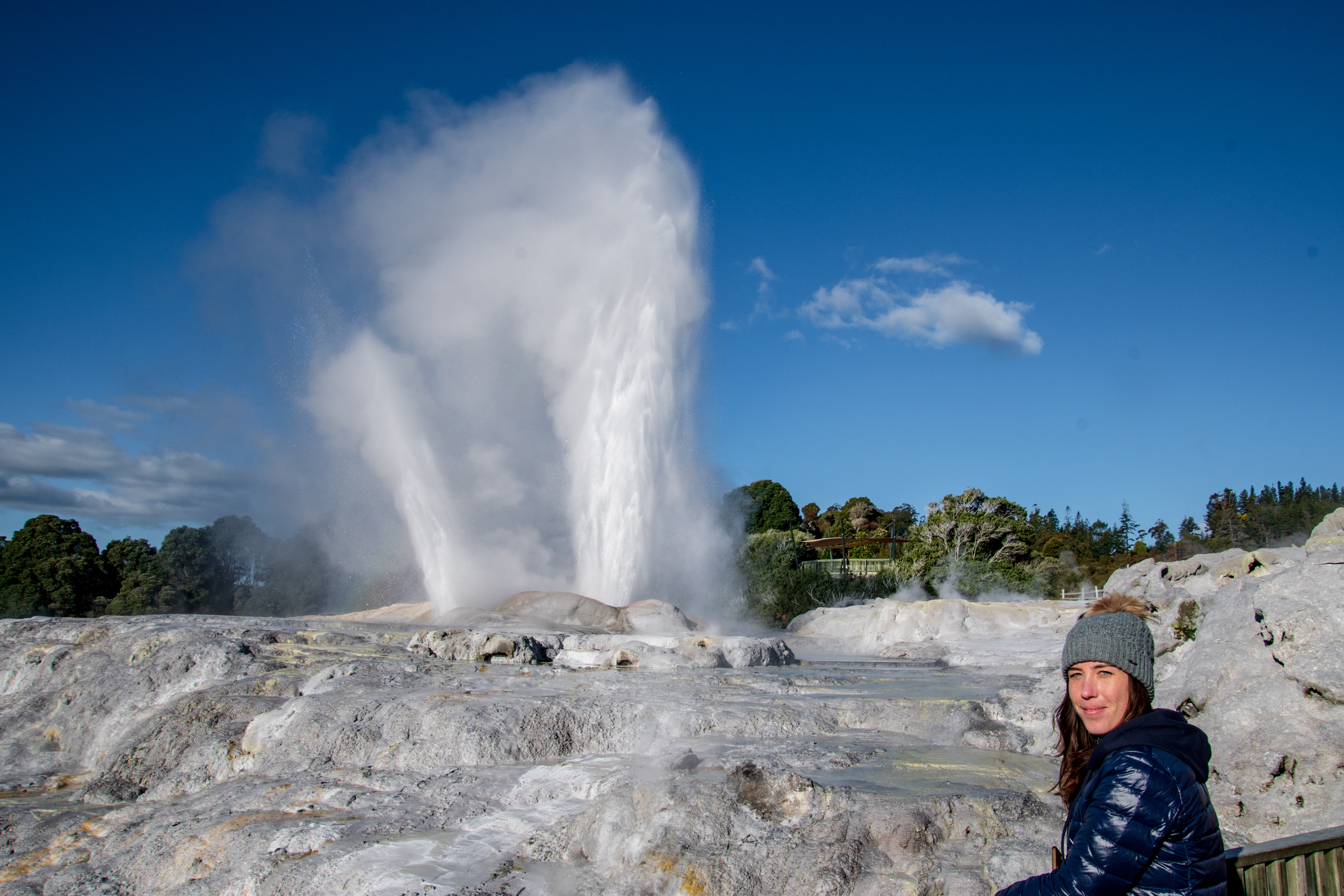
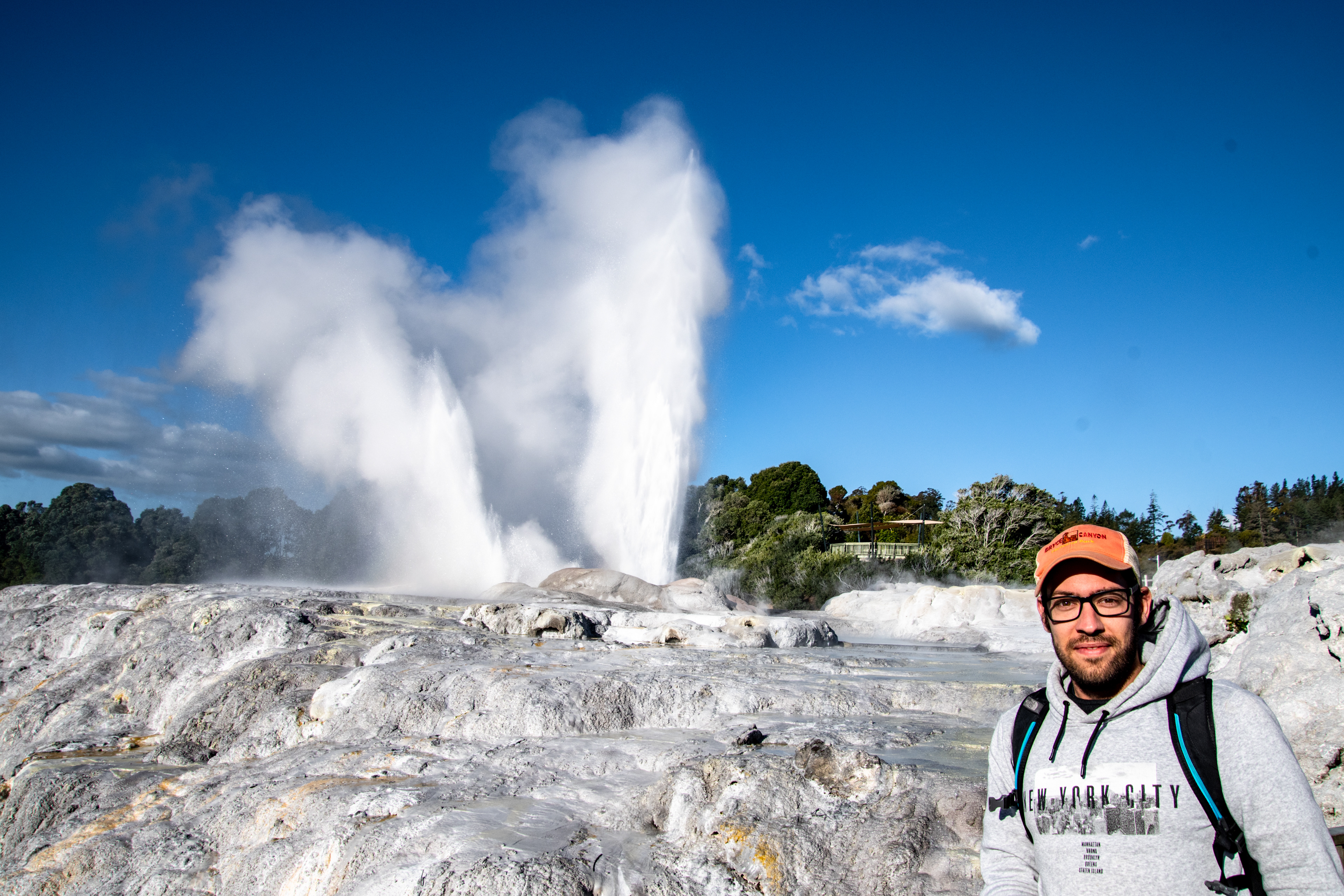
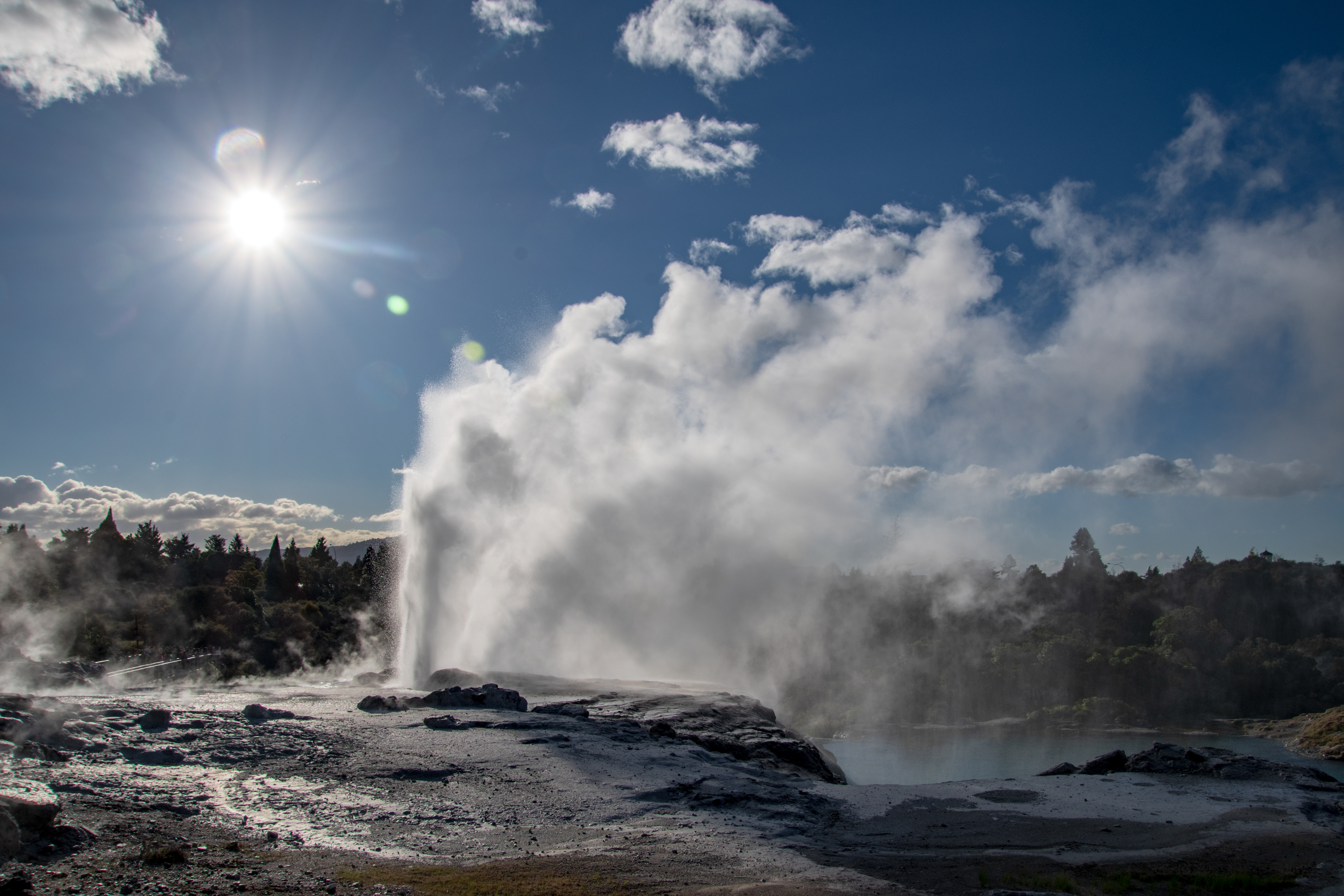
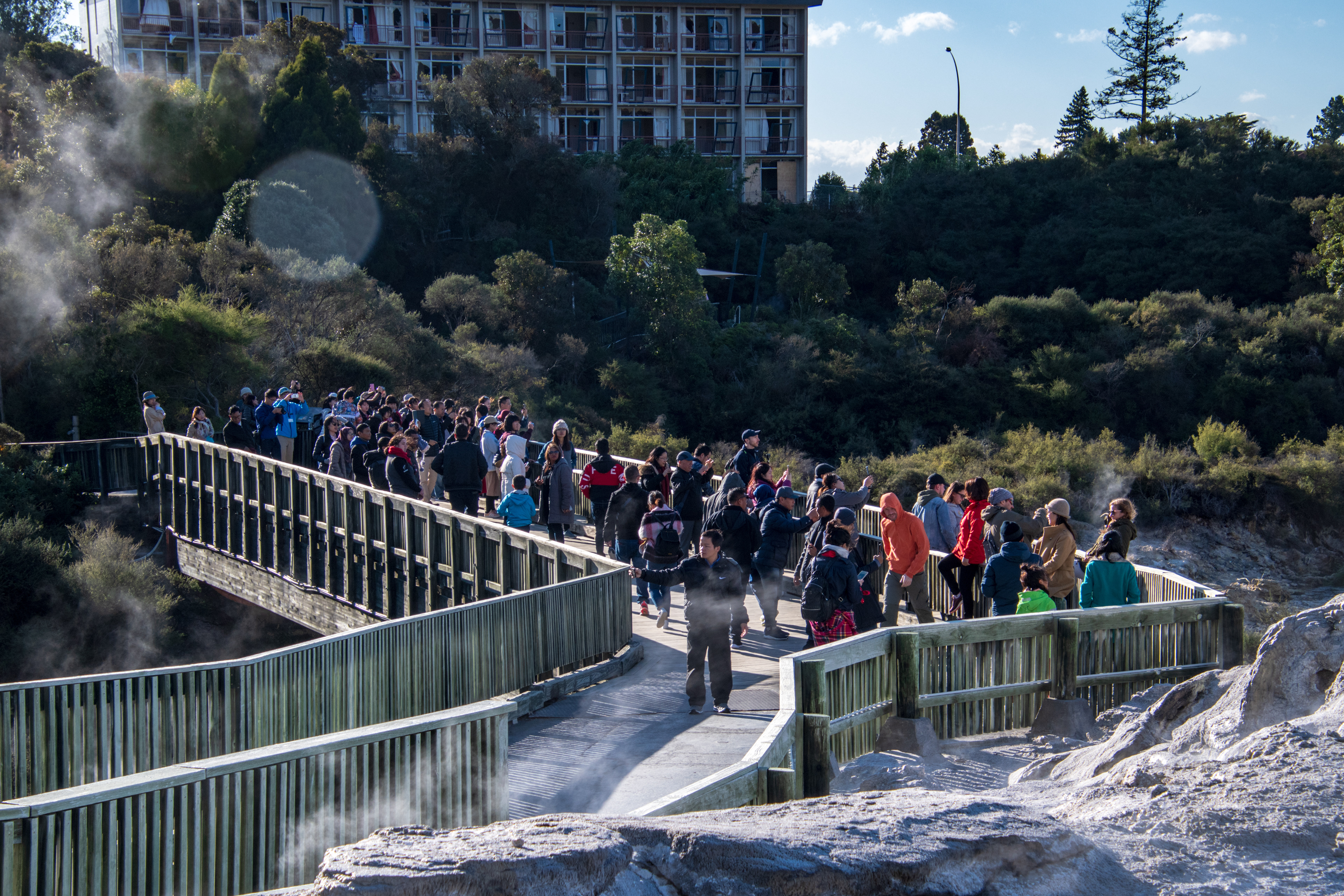
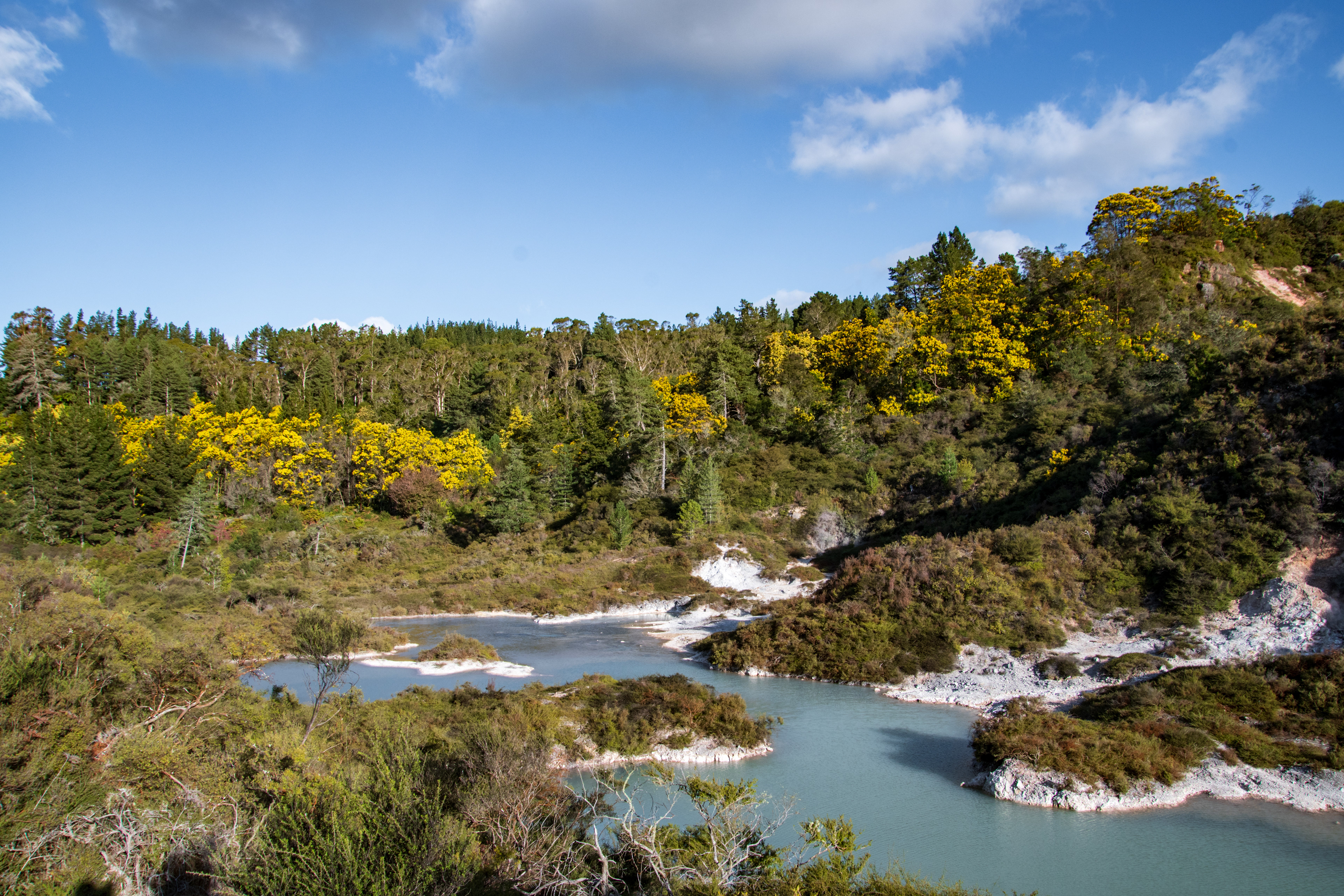

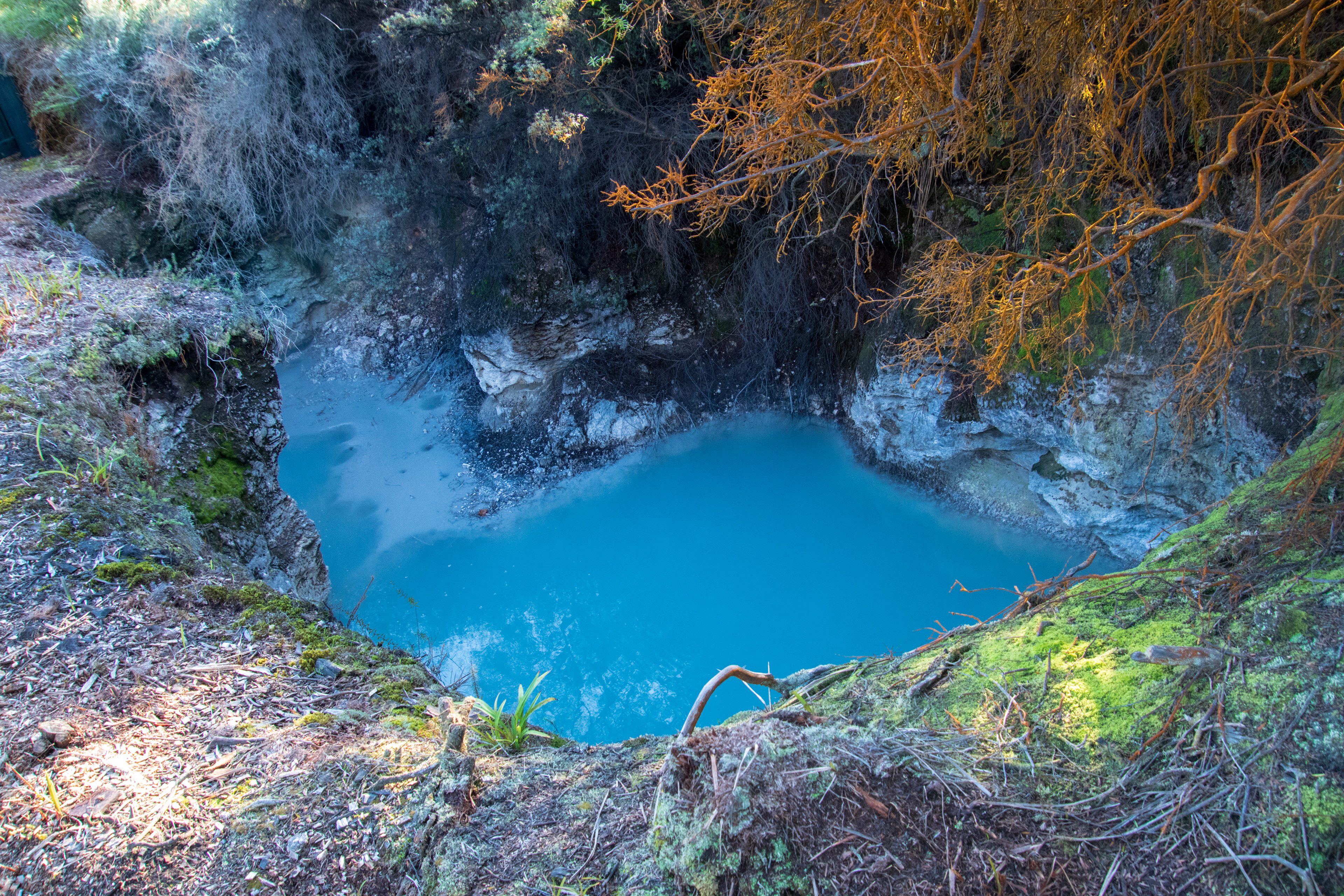
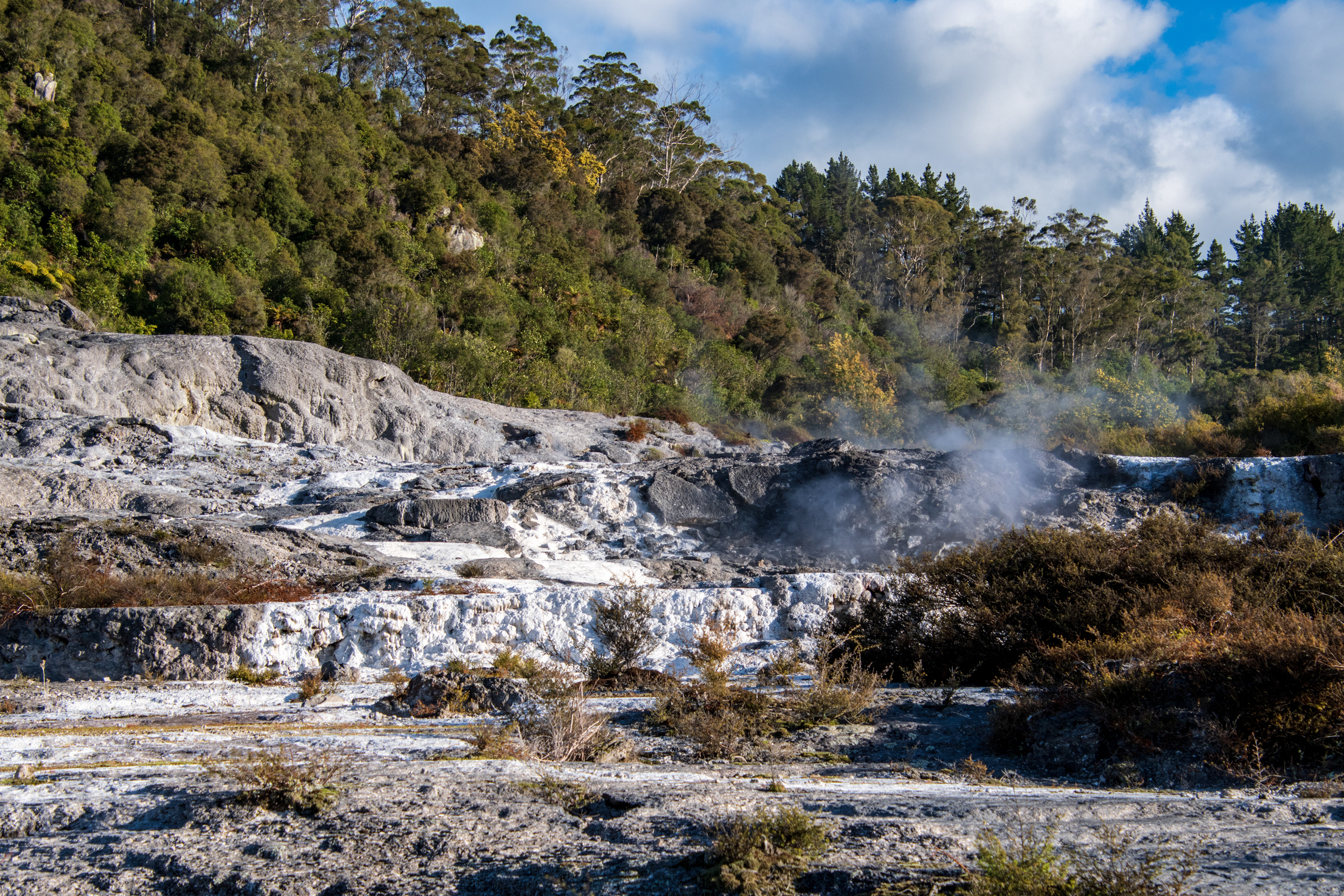
Green, Blue and Tarawera Lake
Plants in the Lake Tarawera Scenic Reserve have regenerated since the 1886 Mount Tarawera eruption which dramatically changed the landscape around the volcano.
